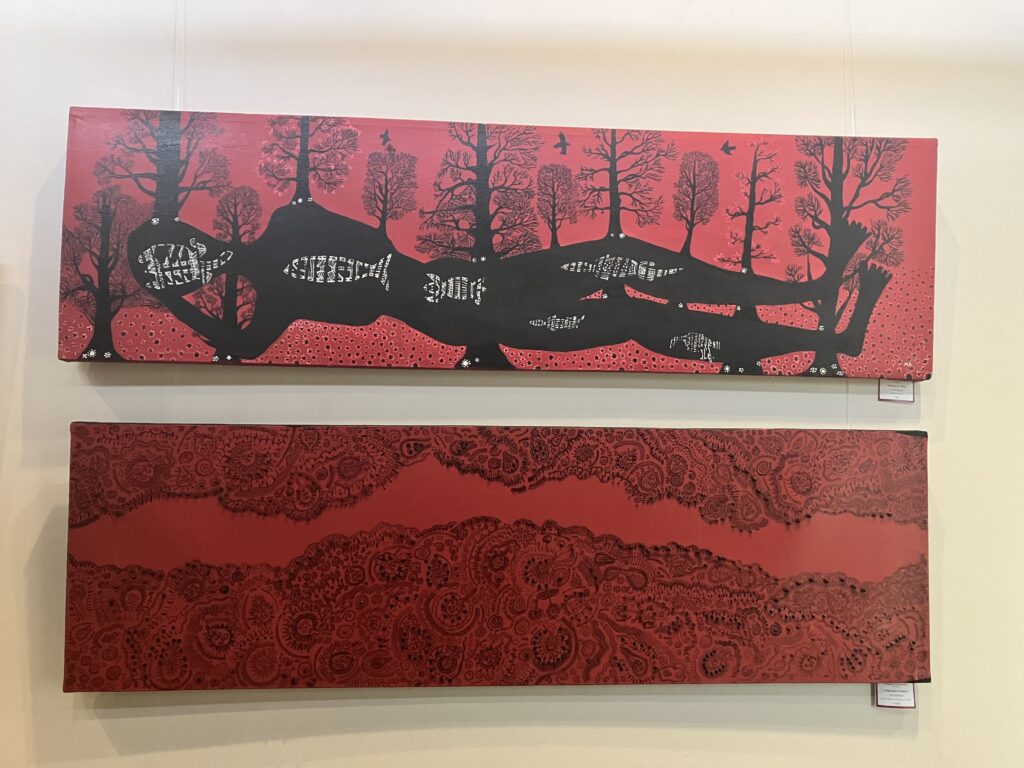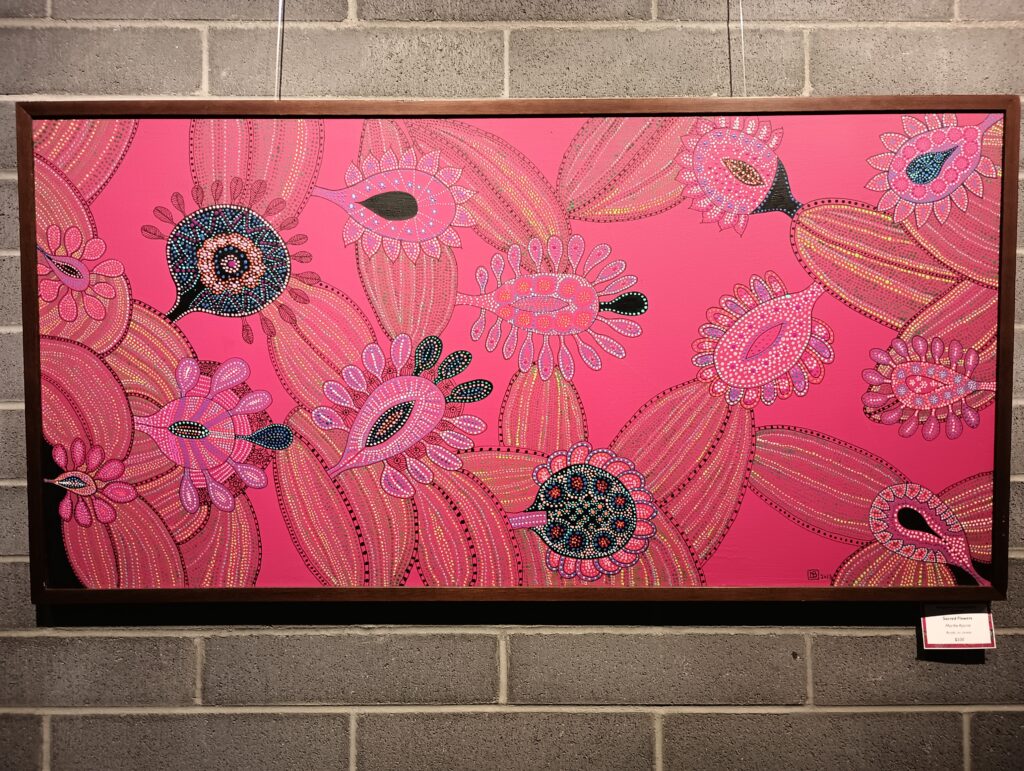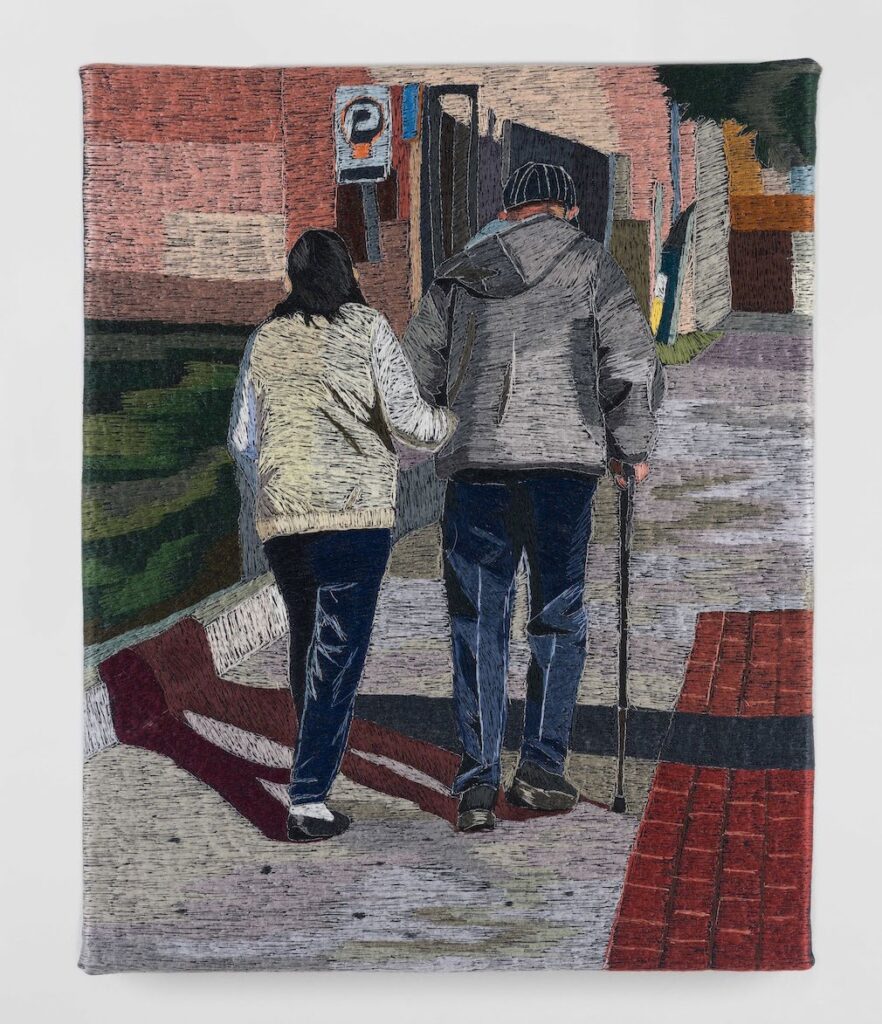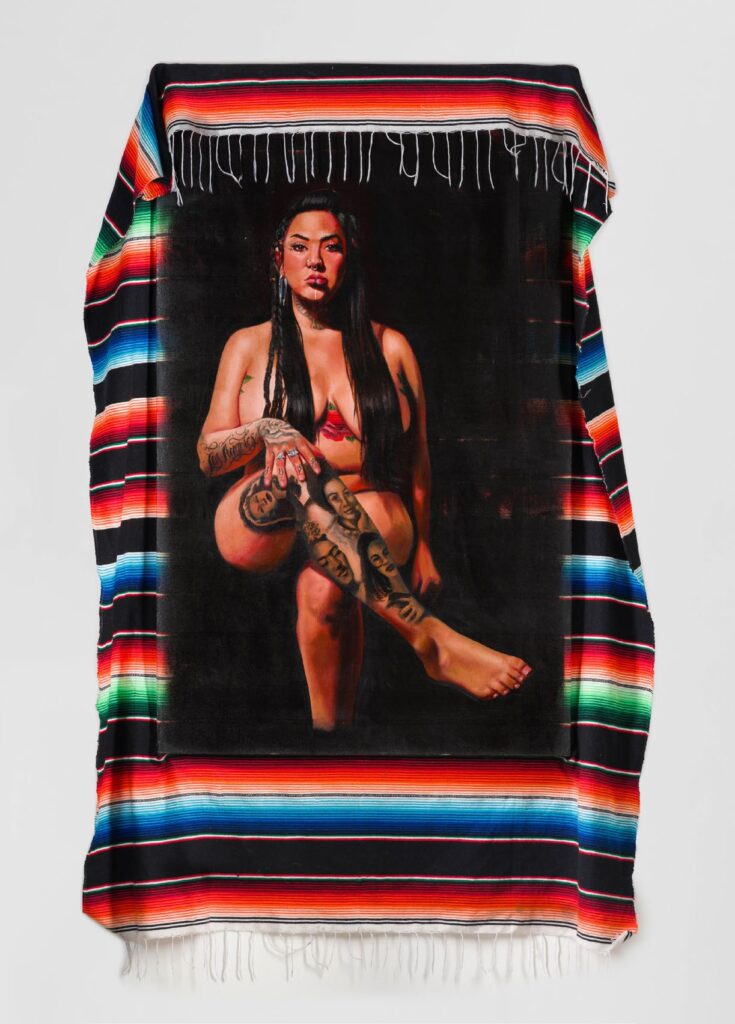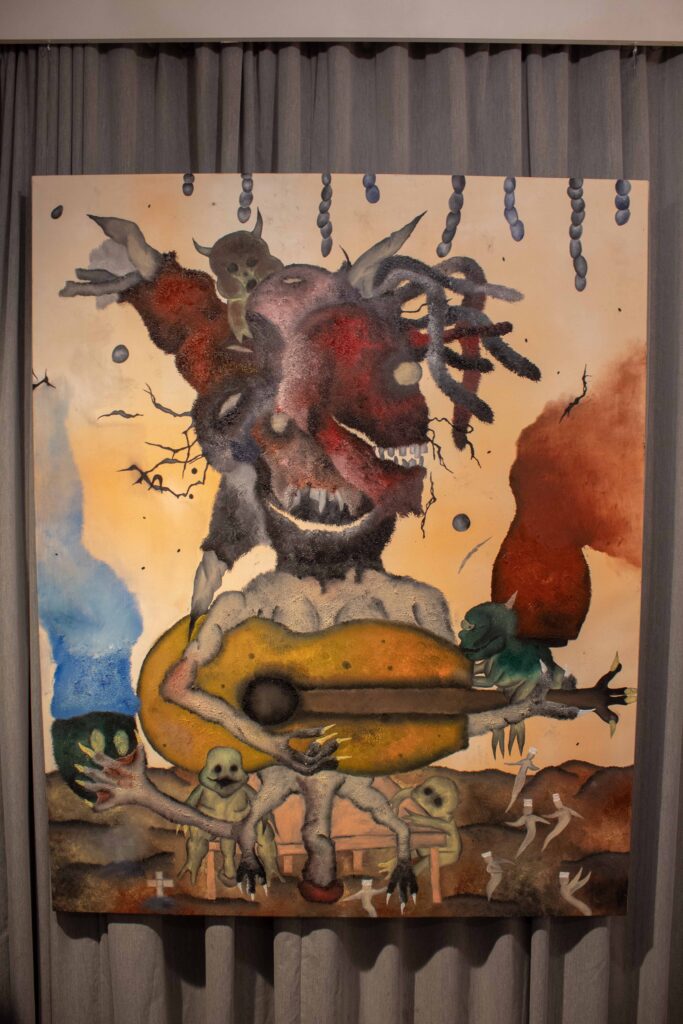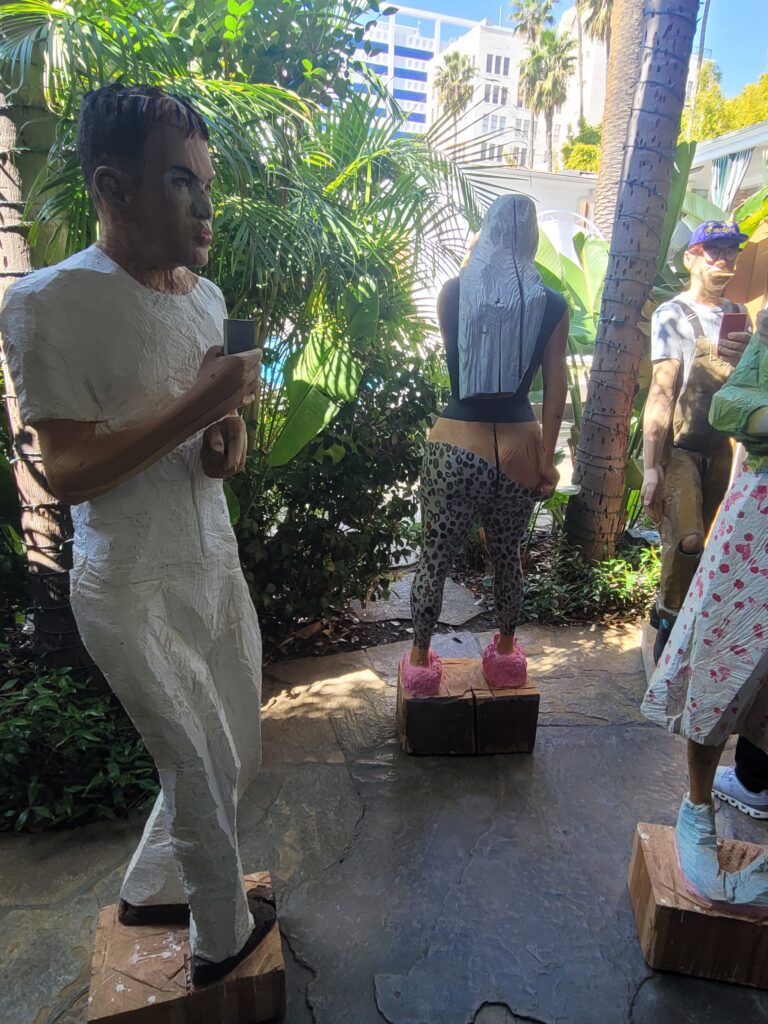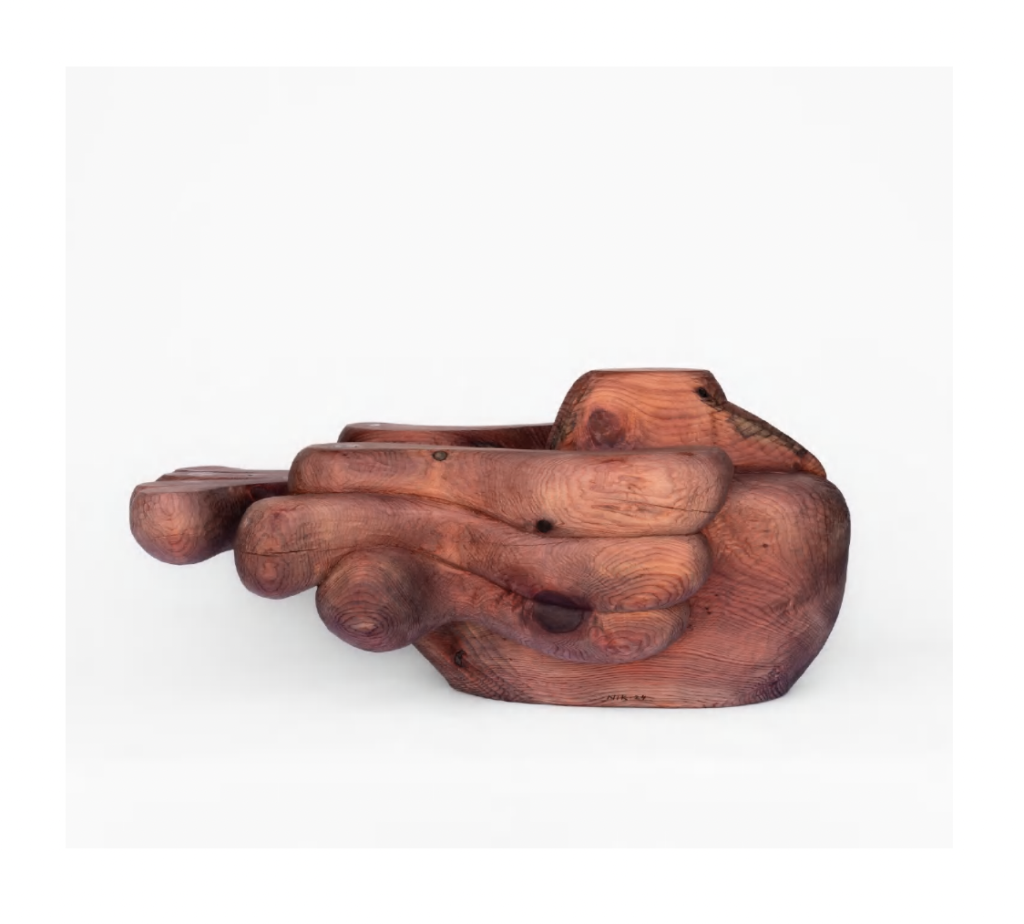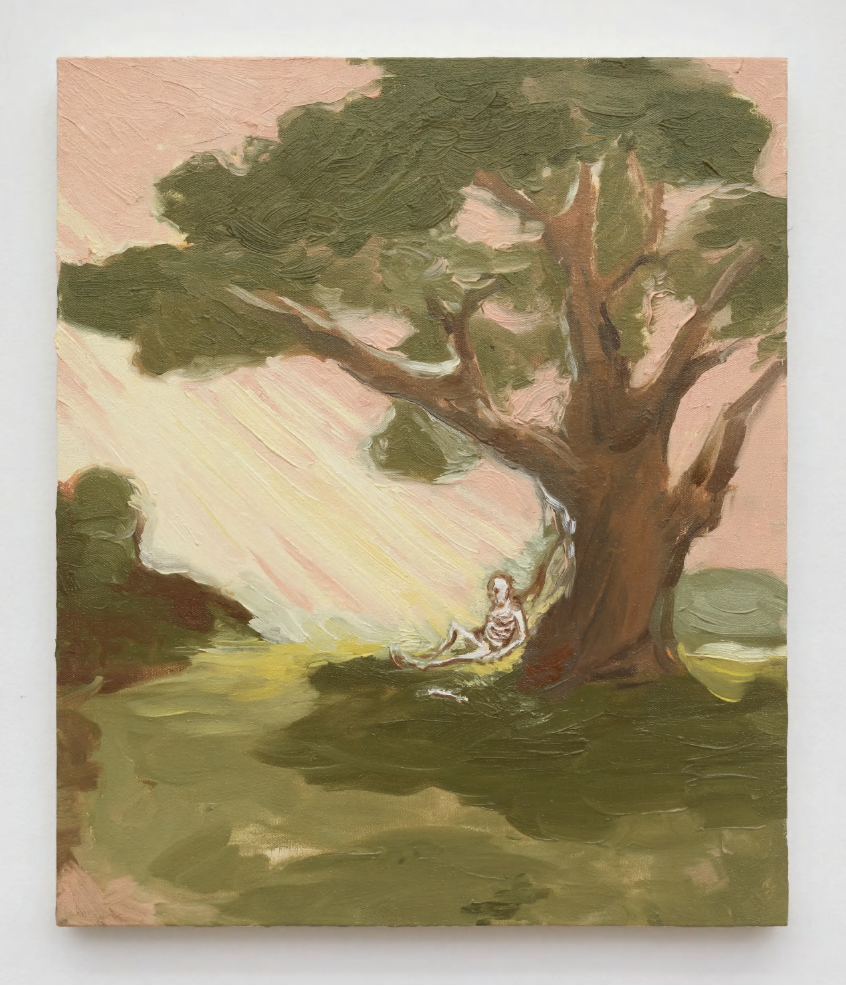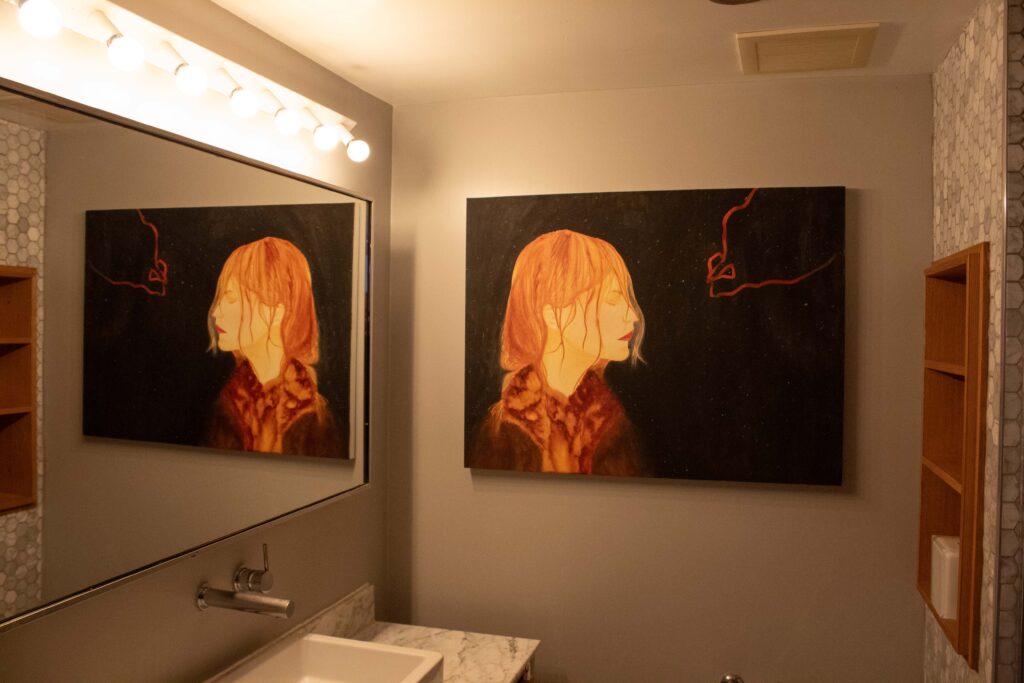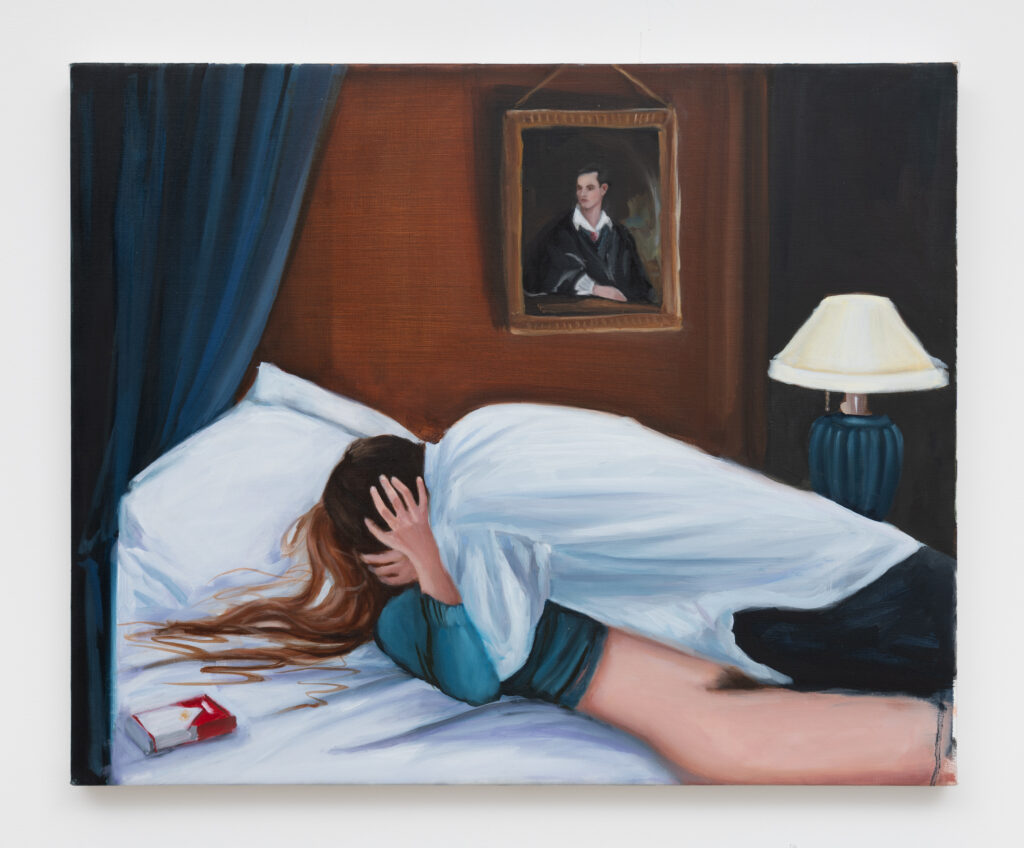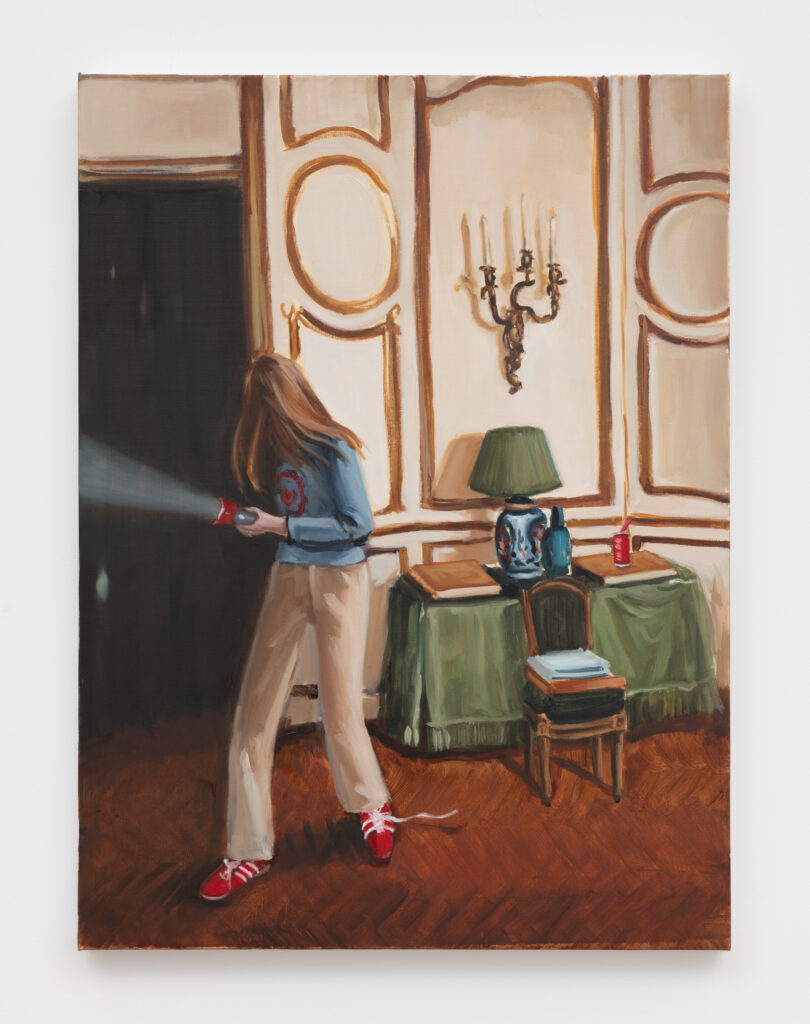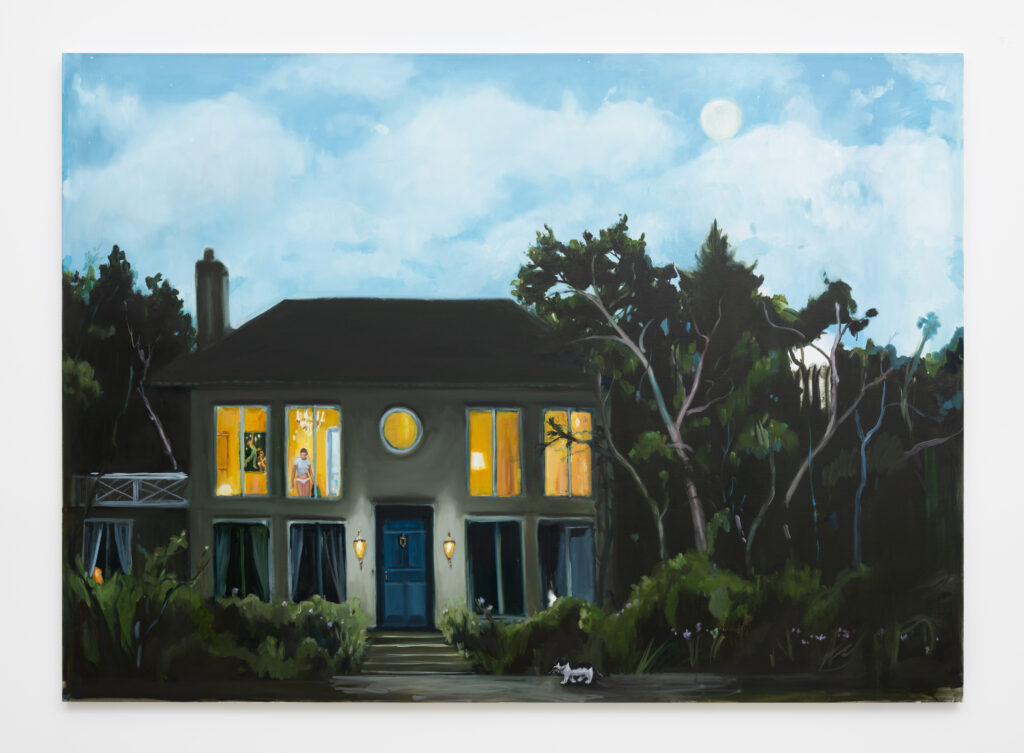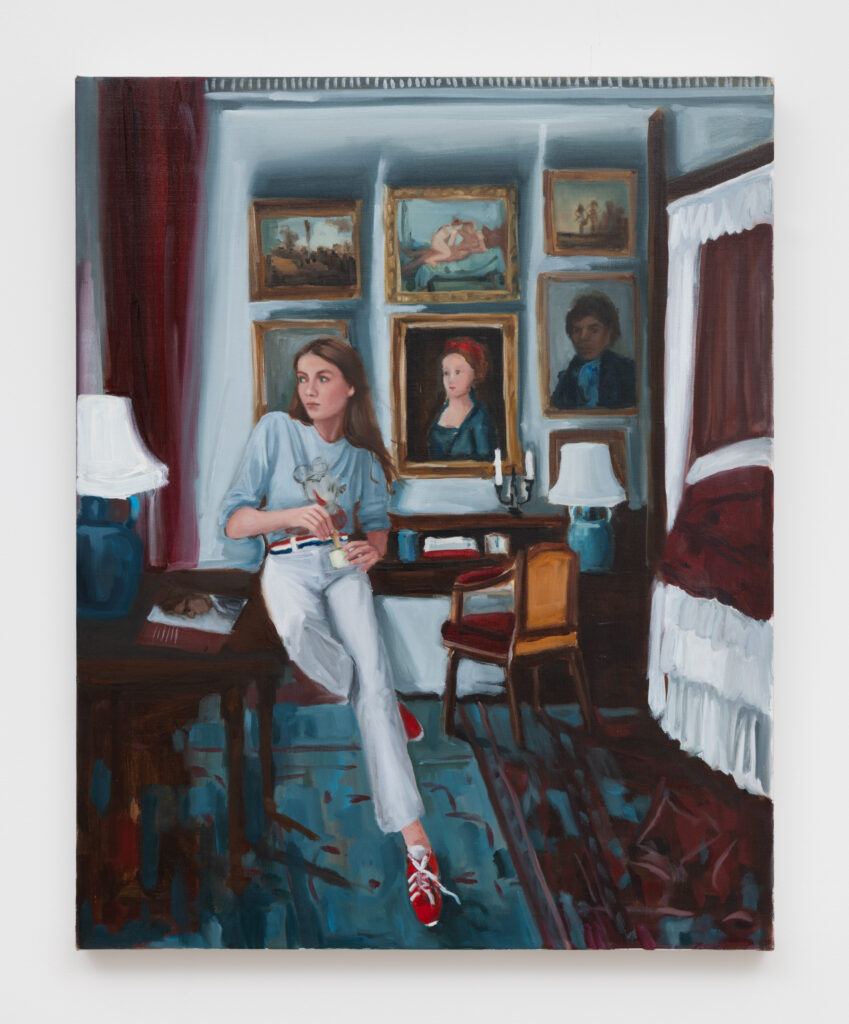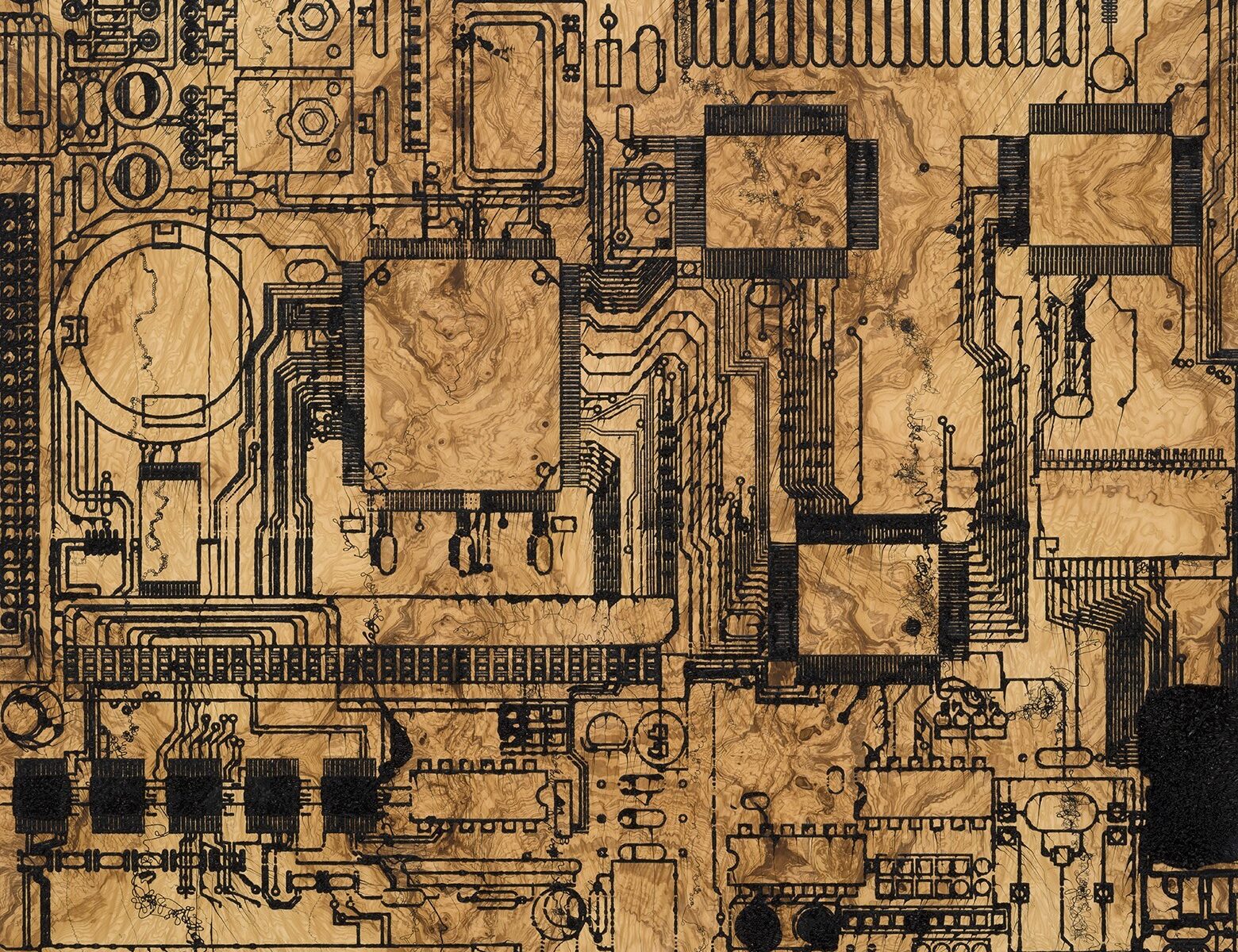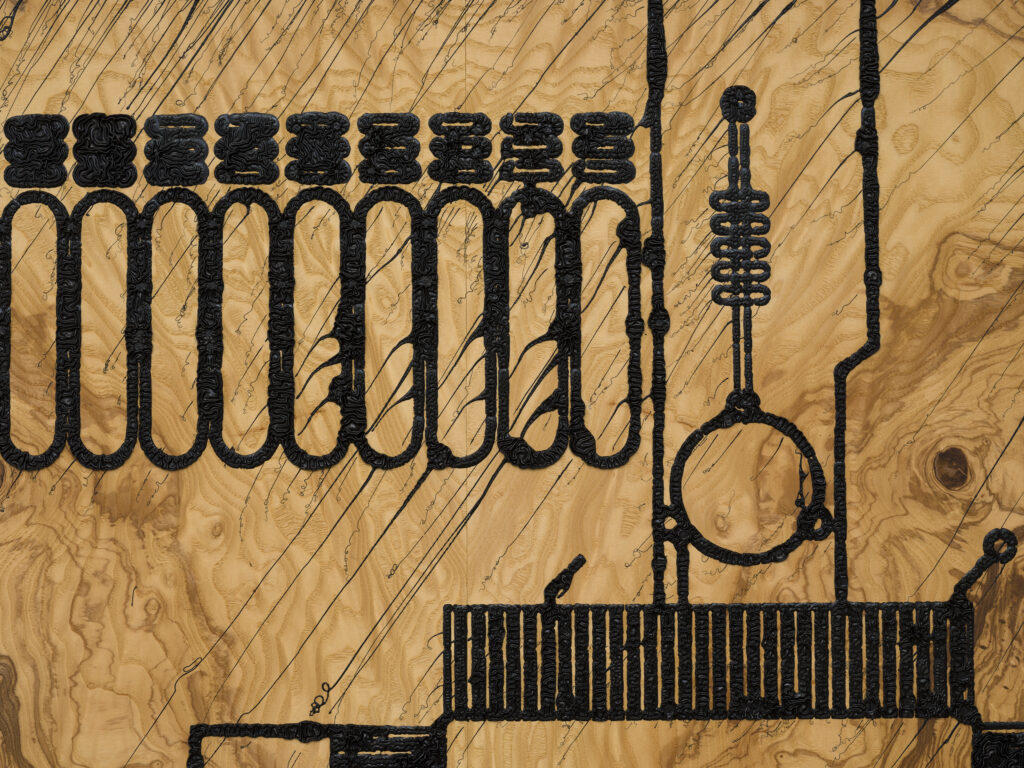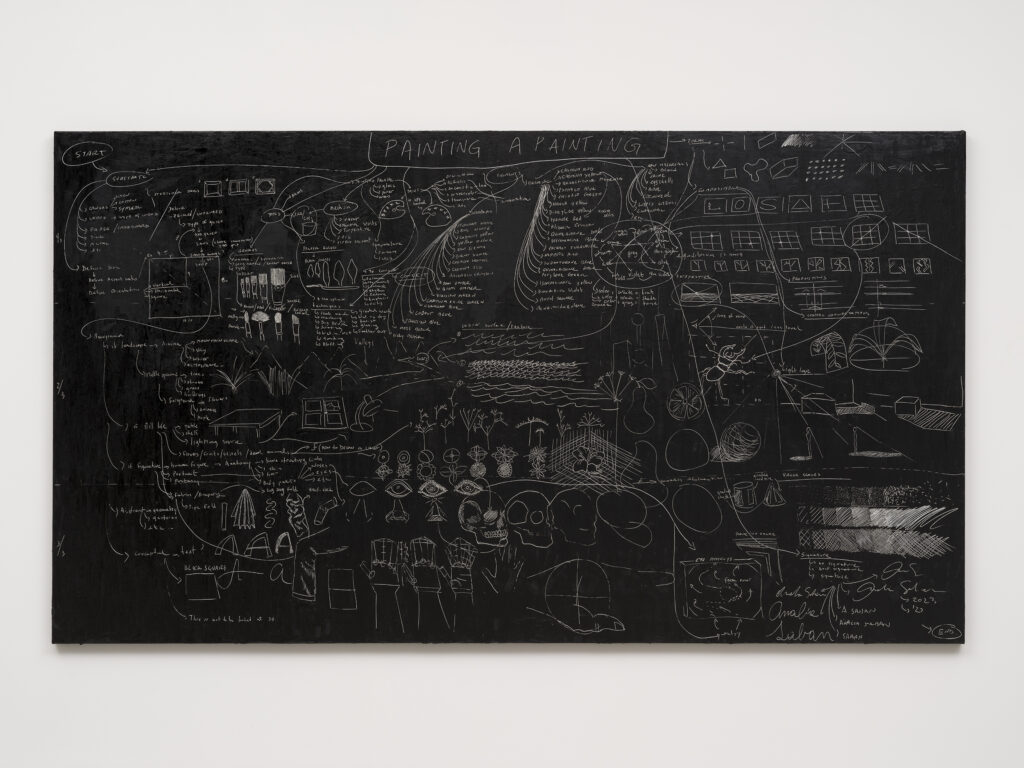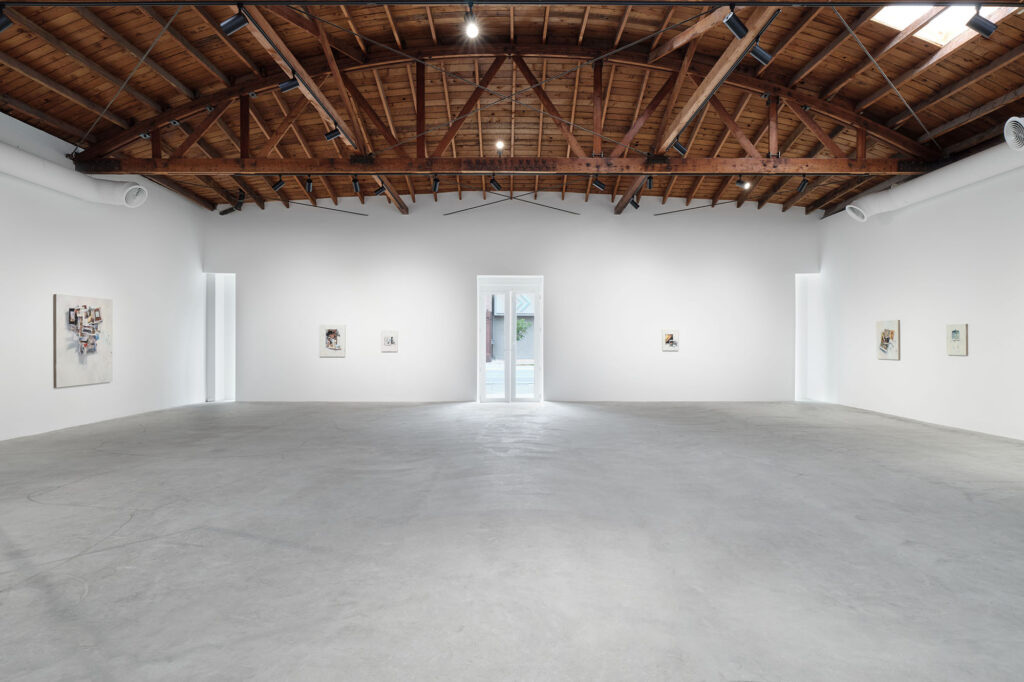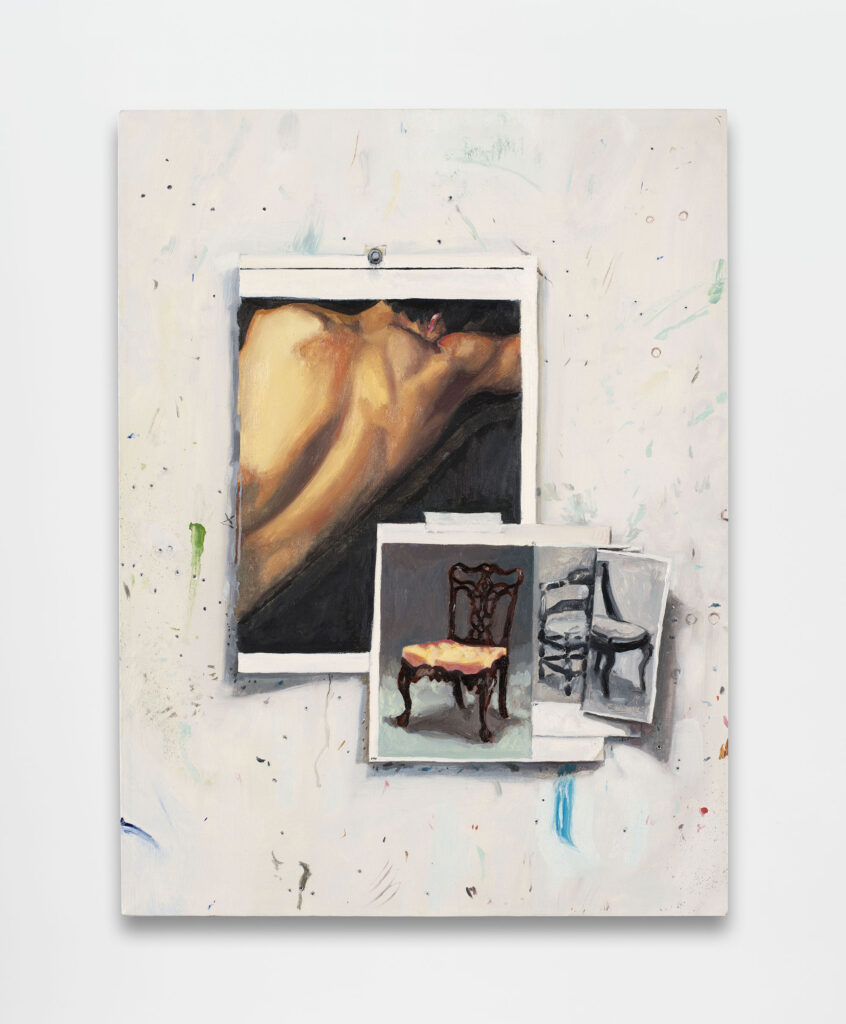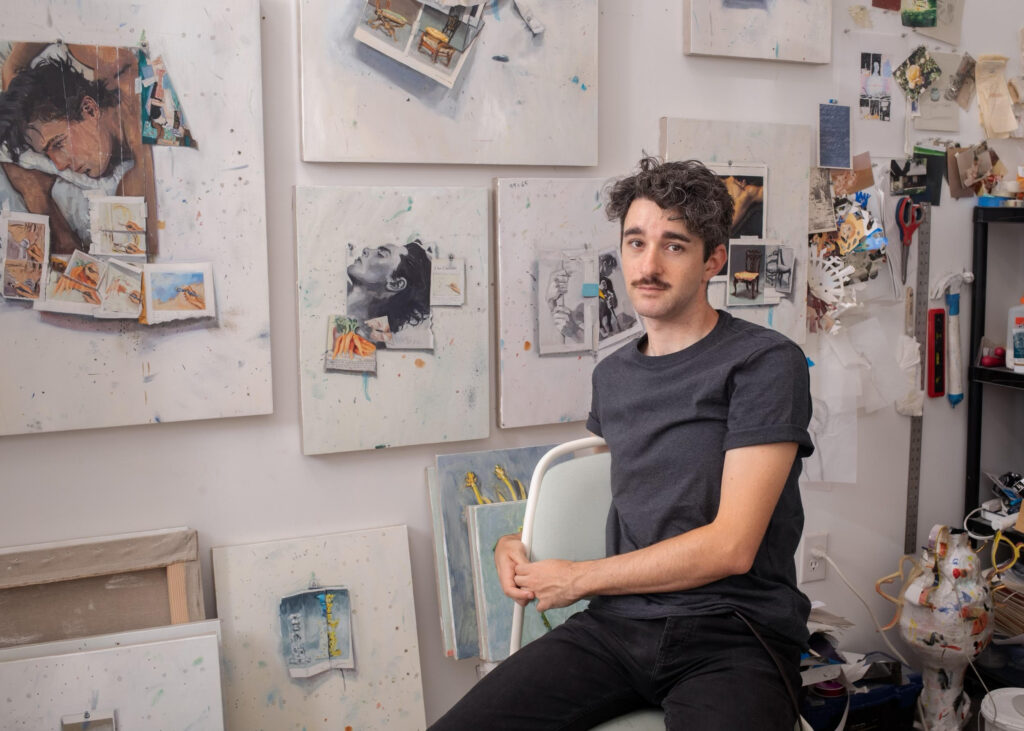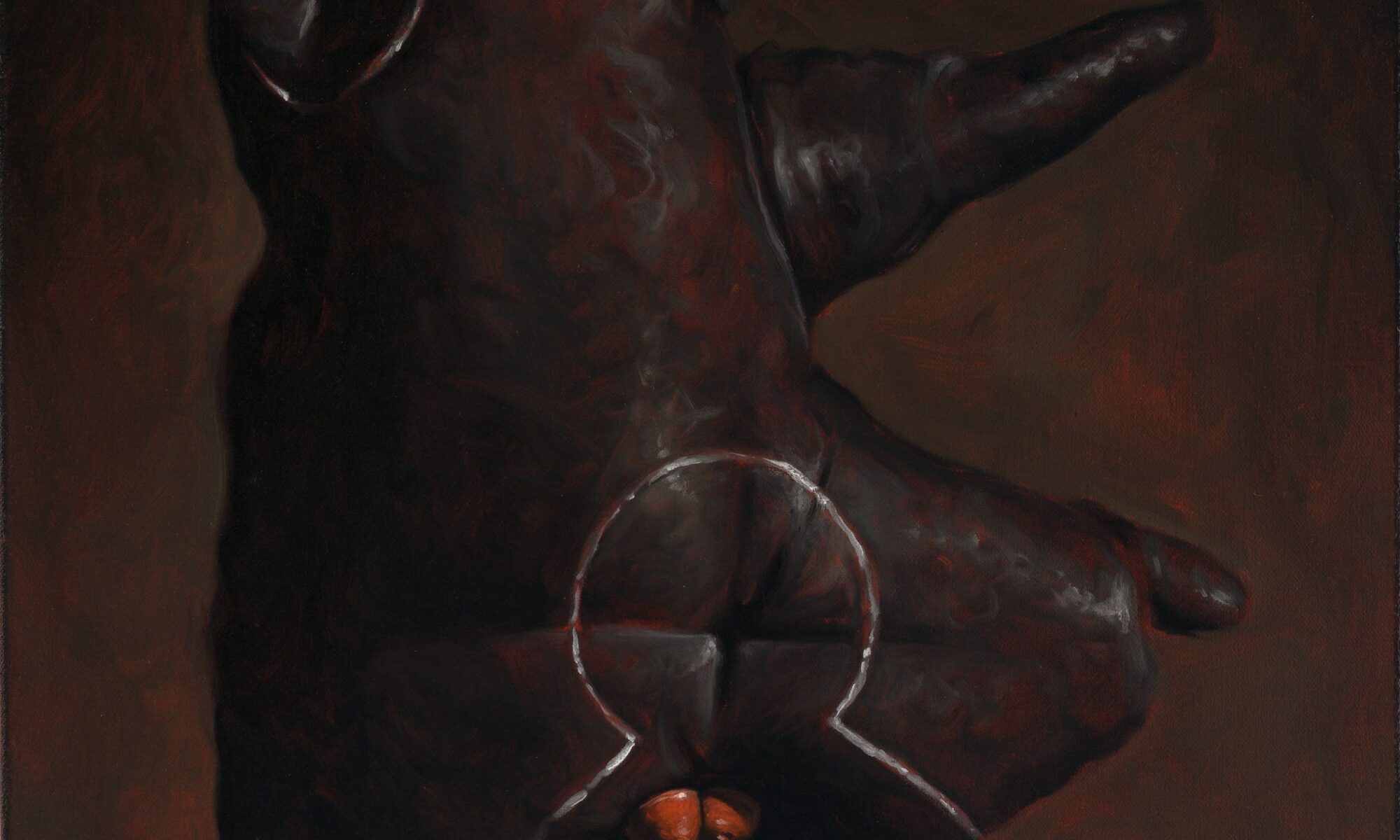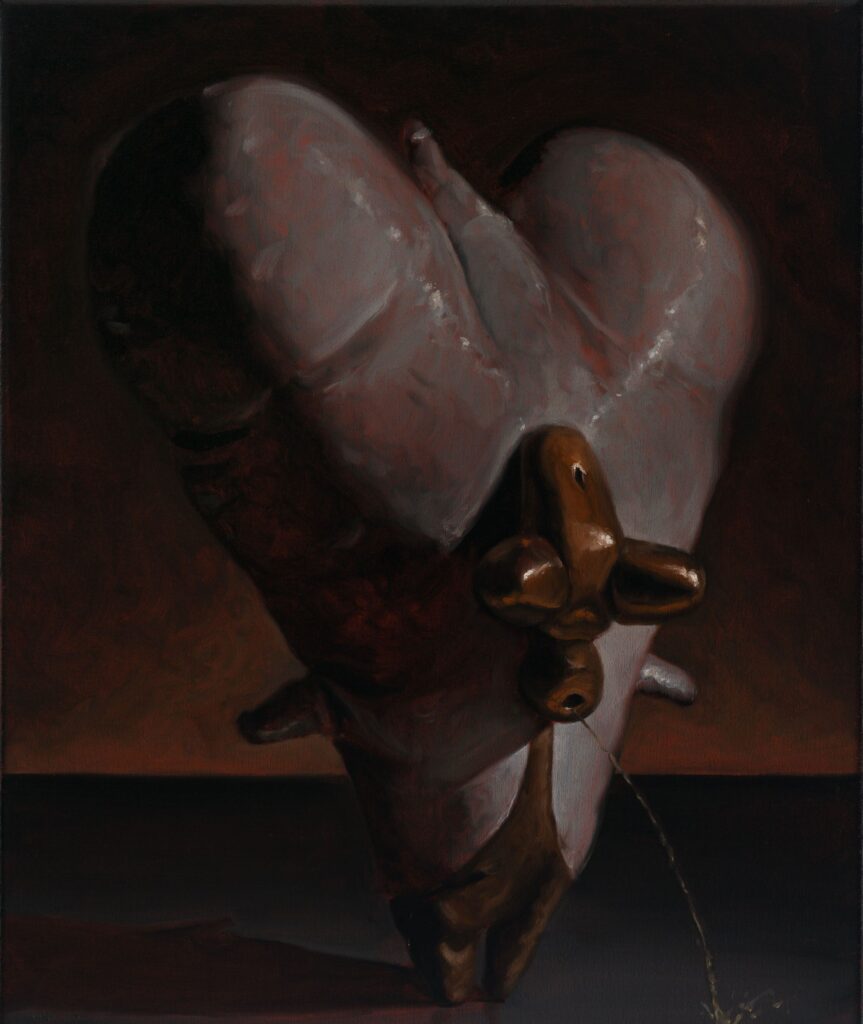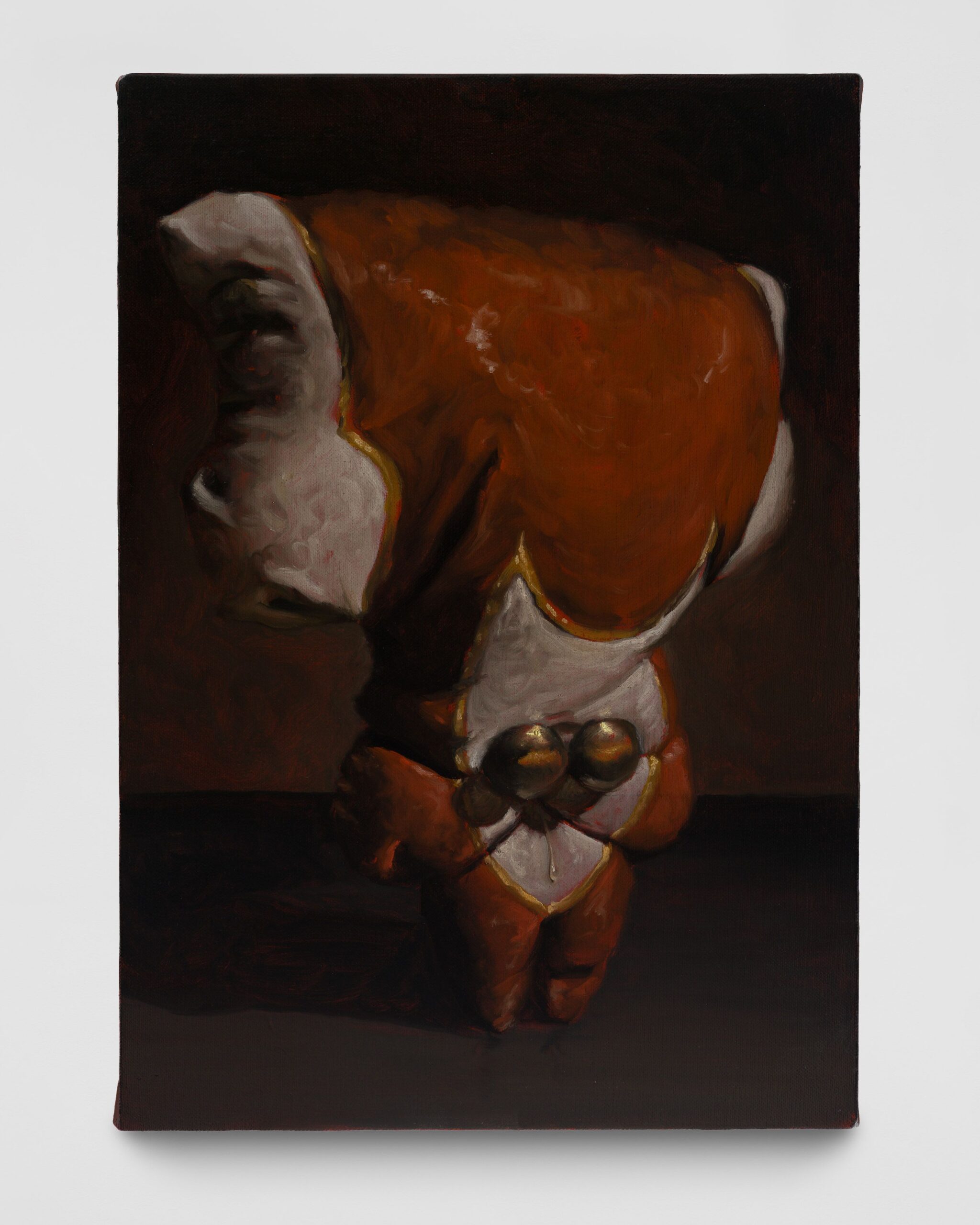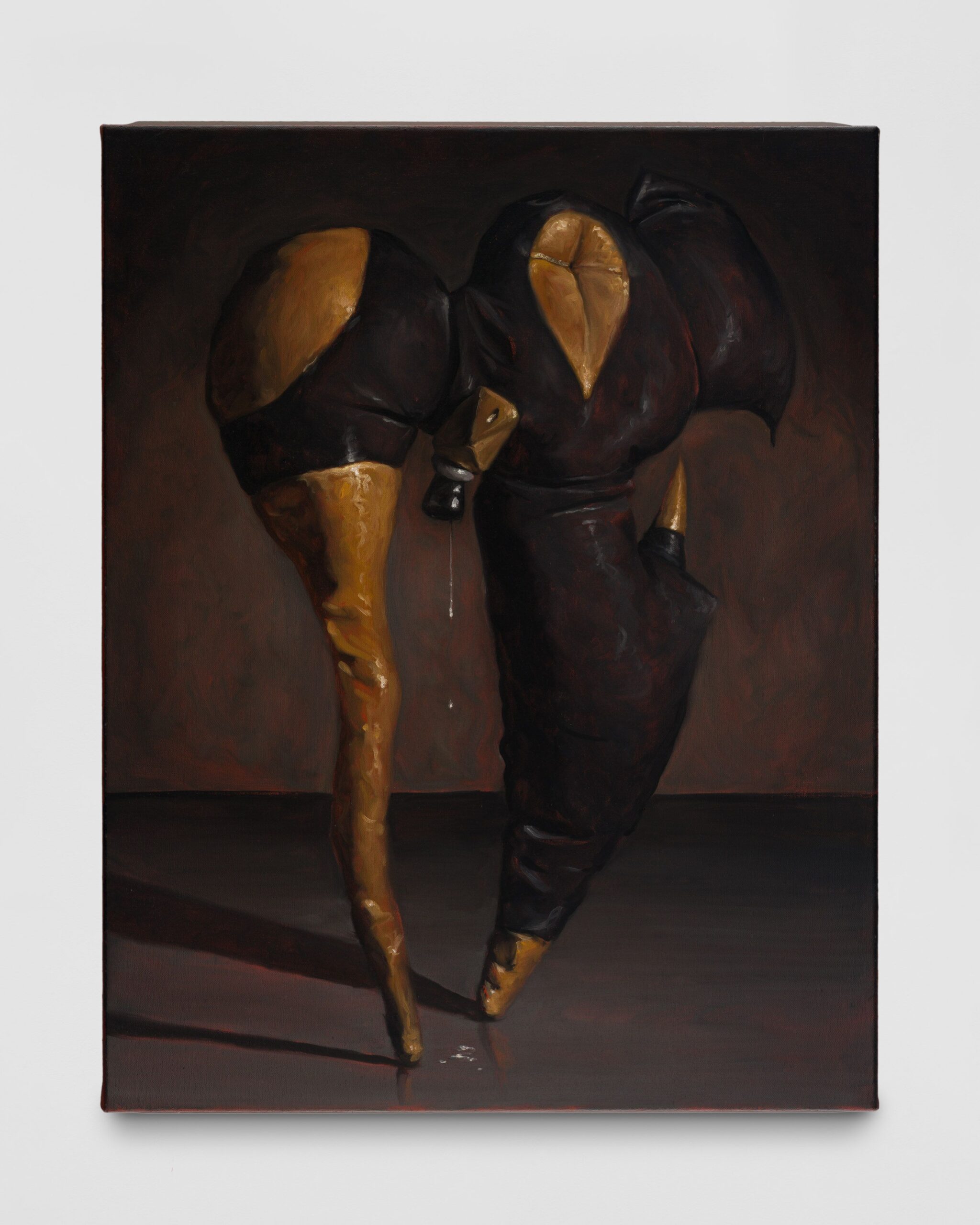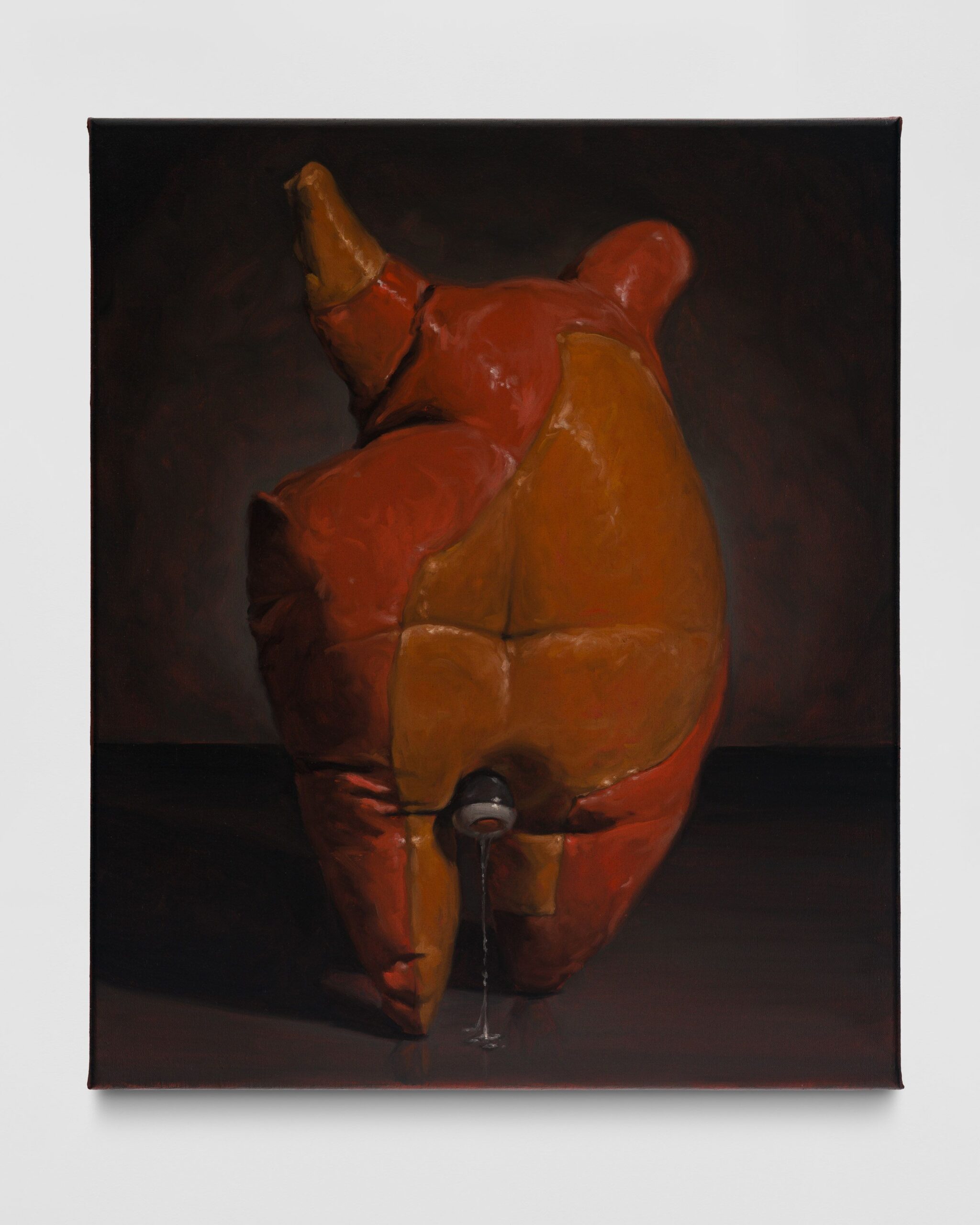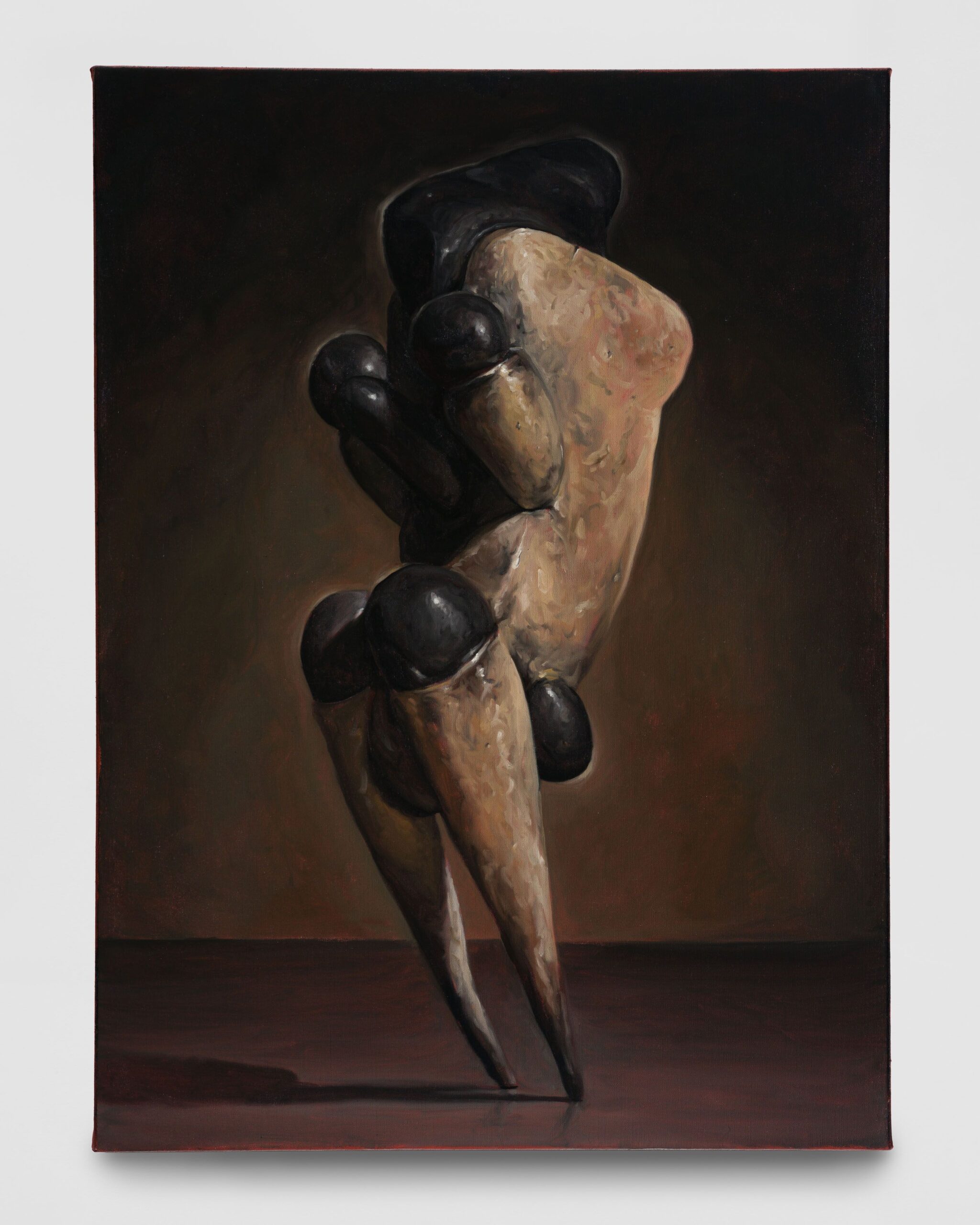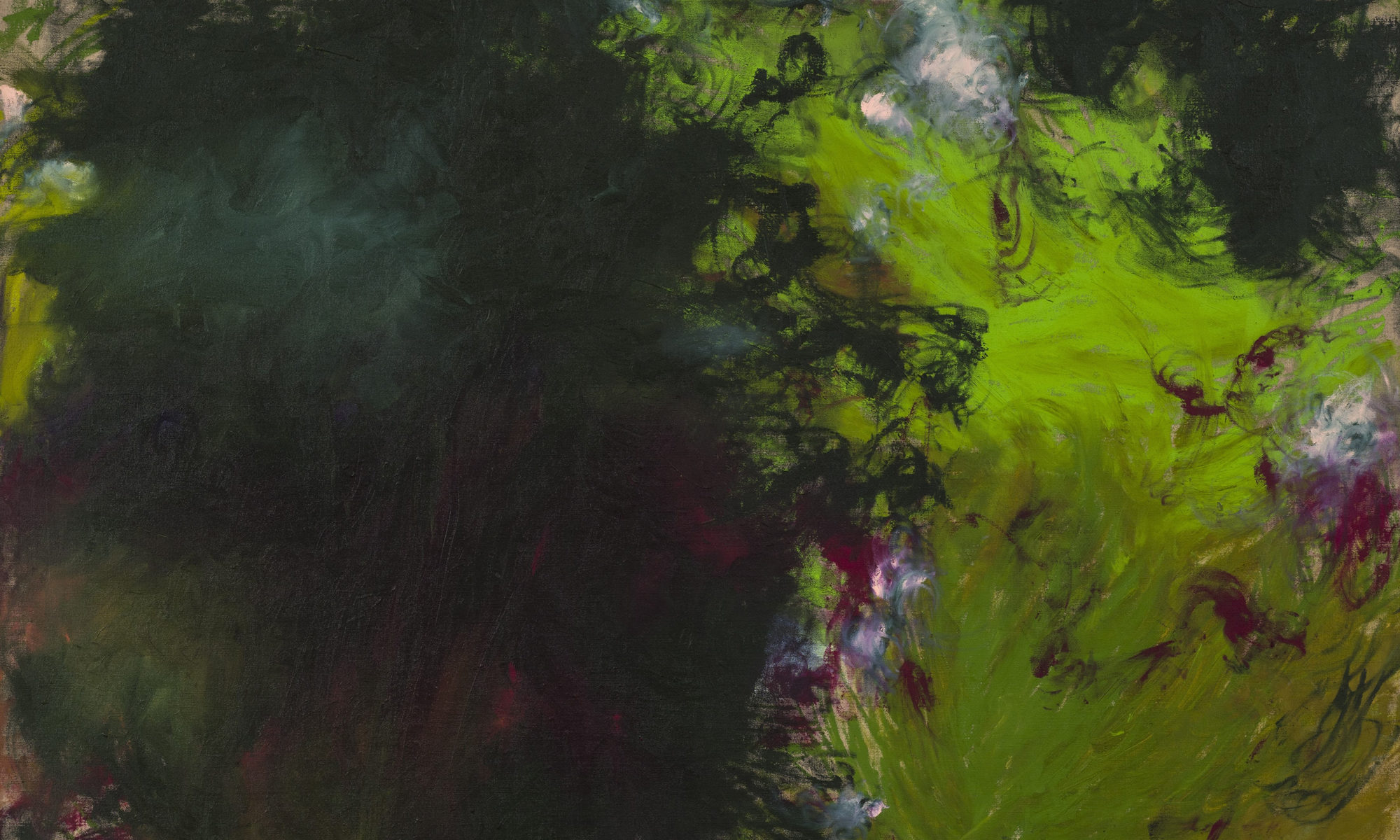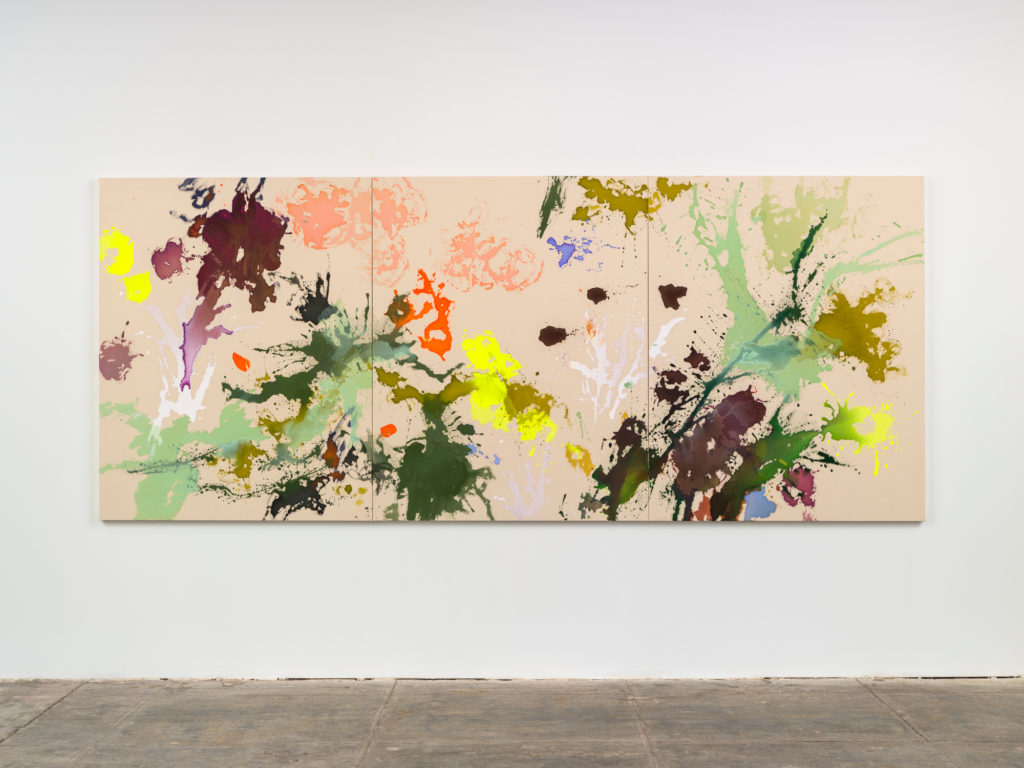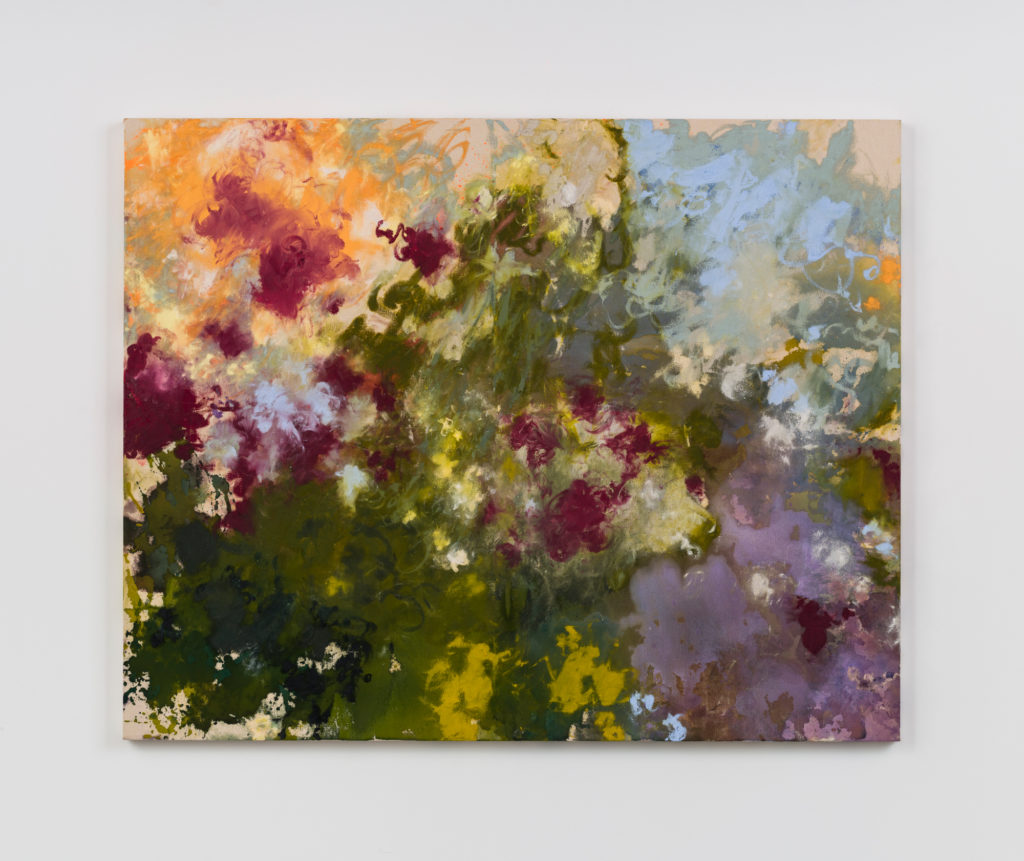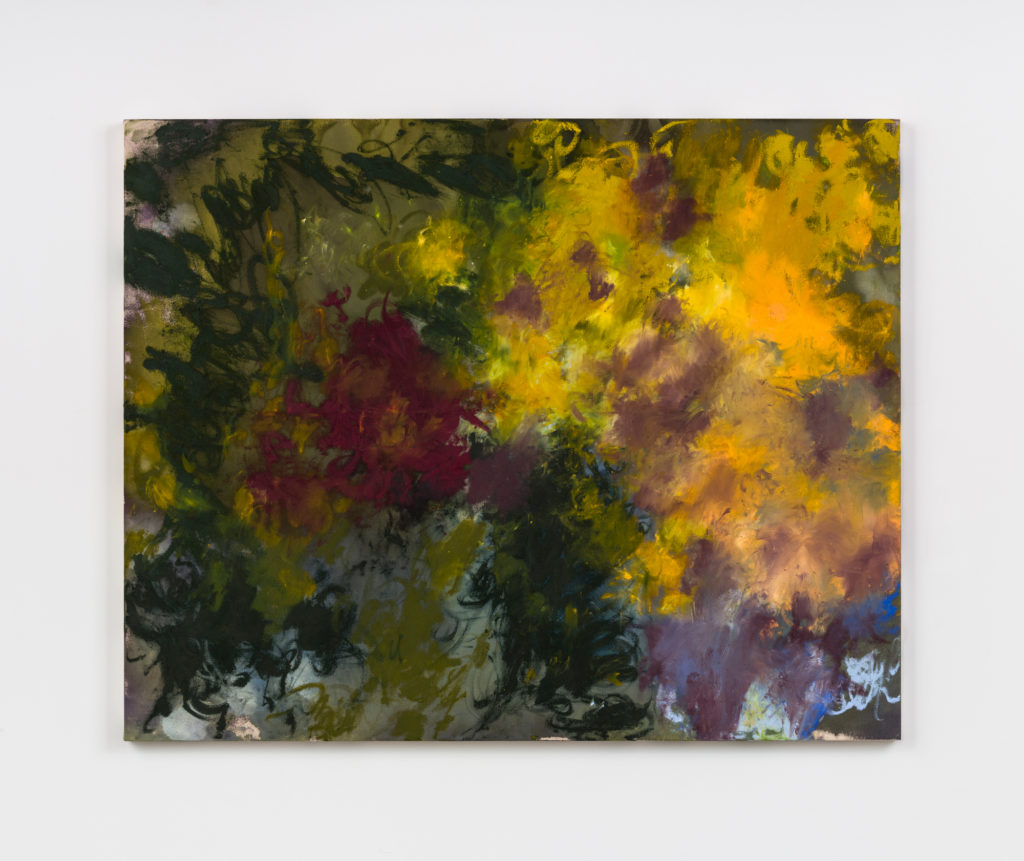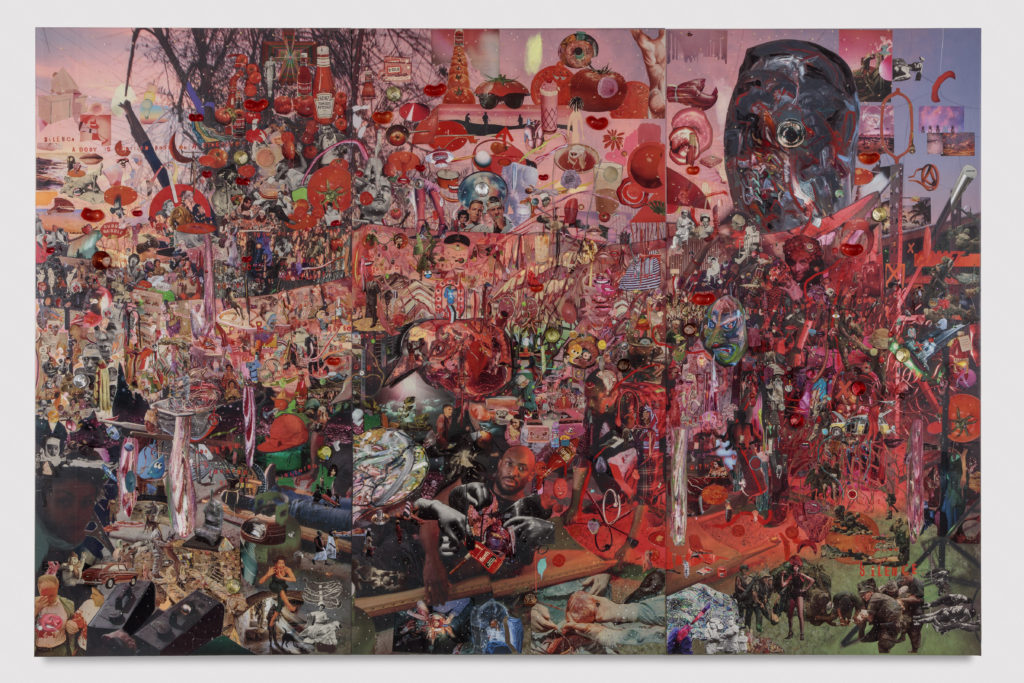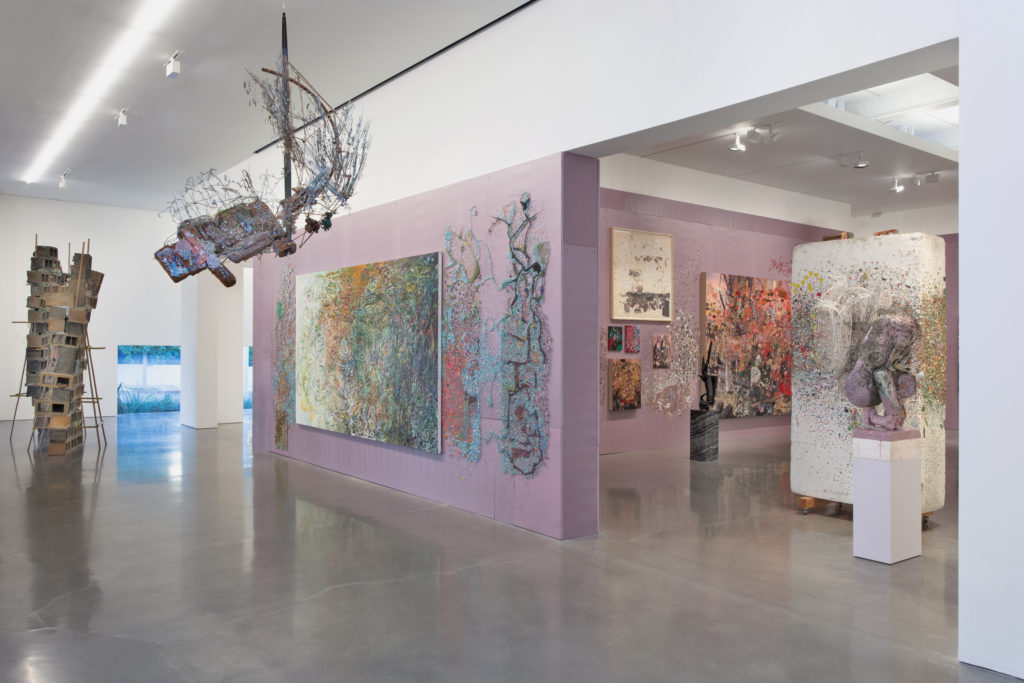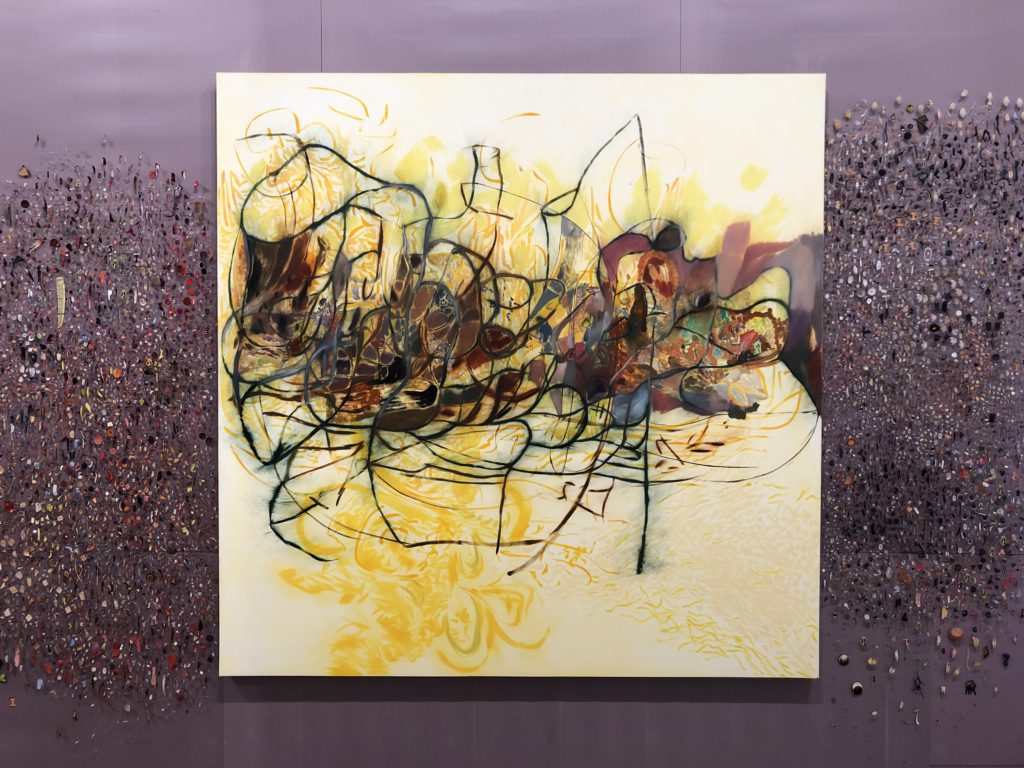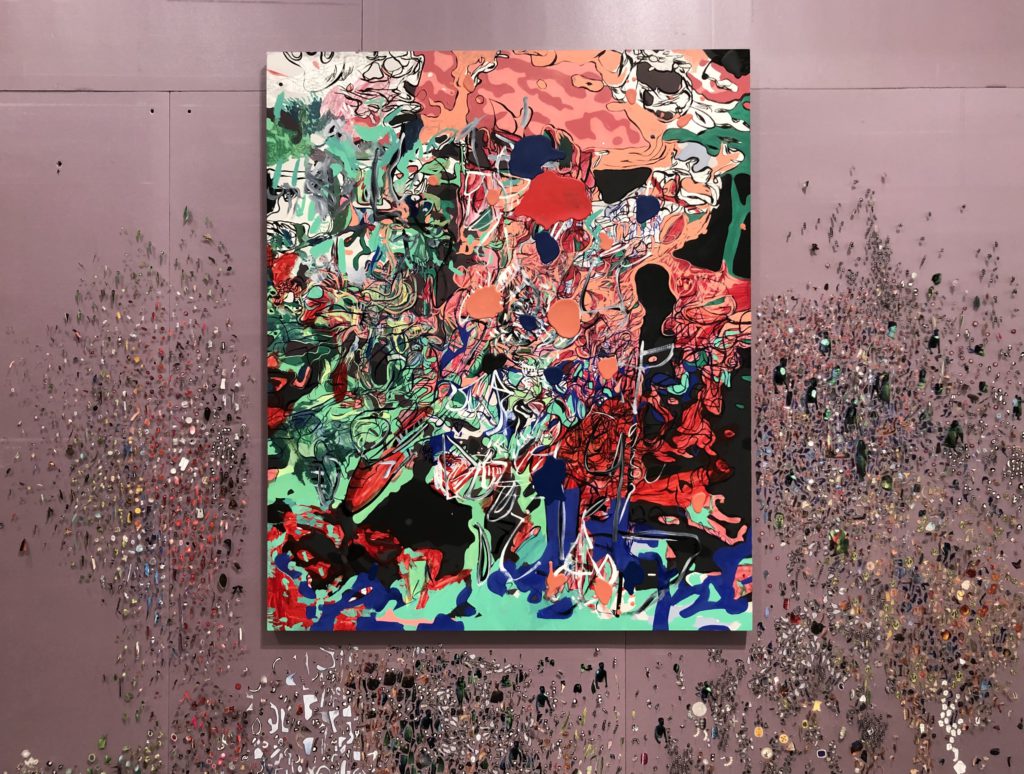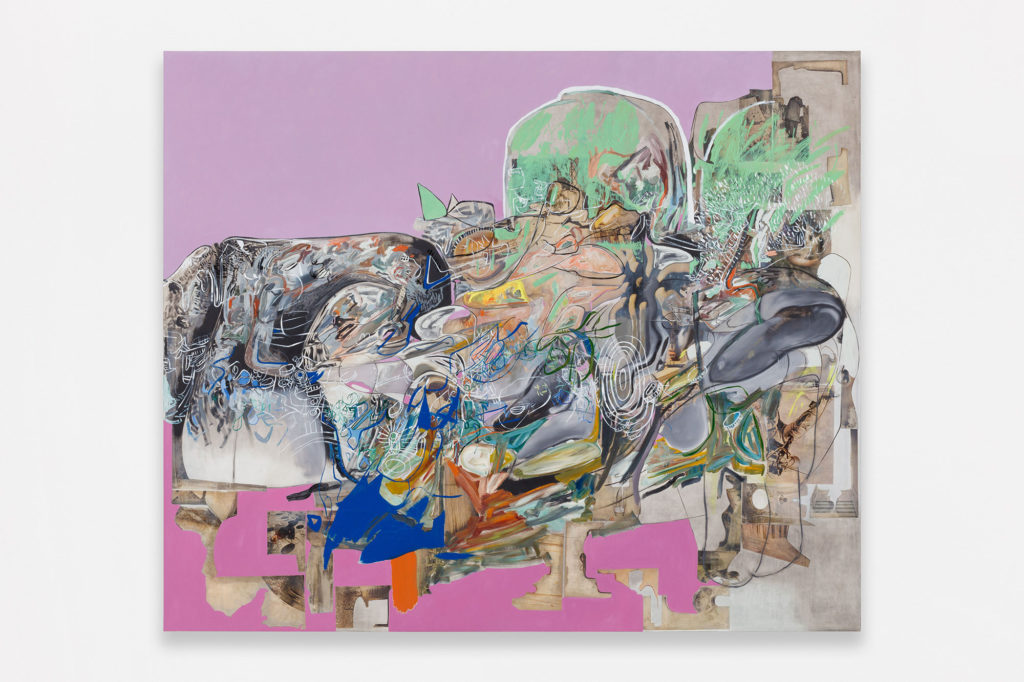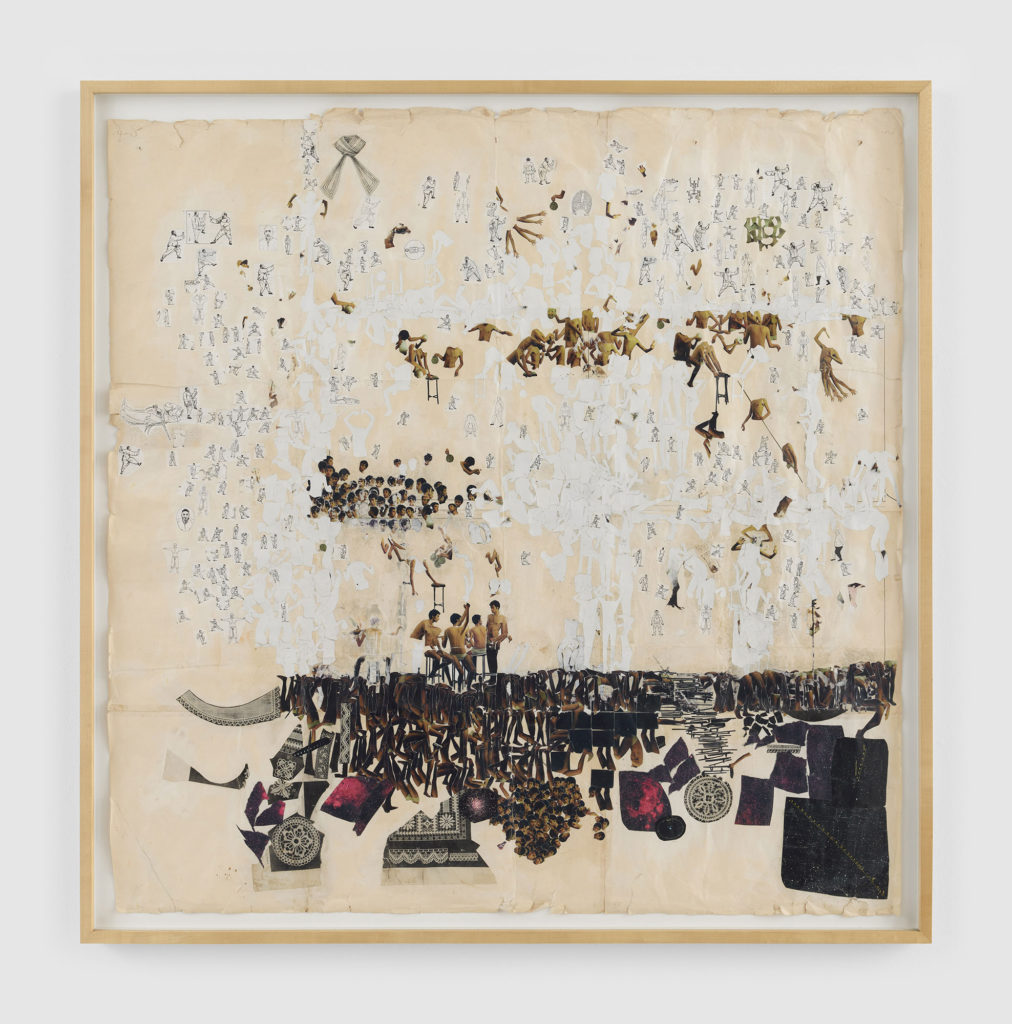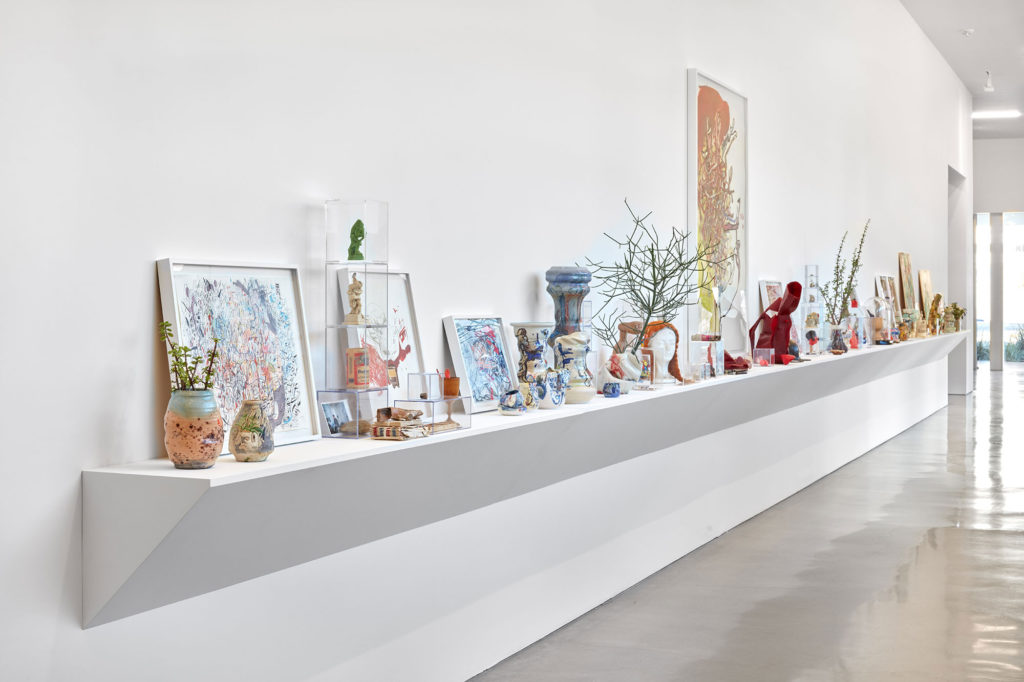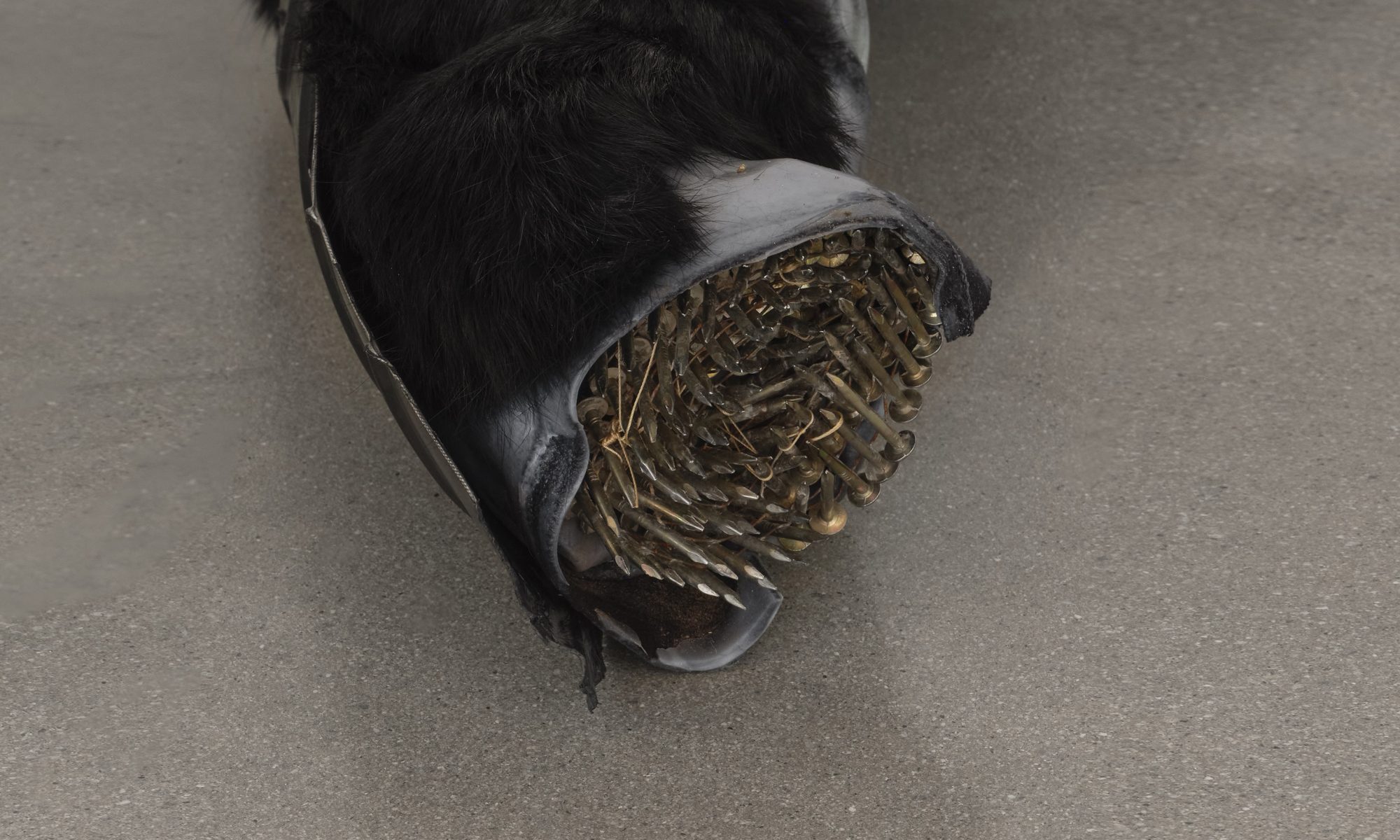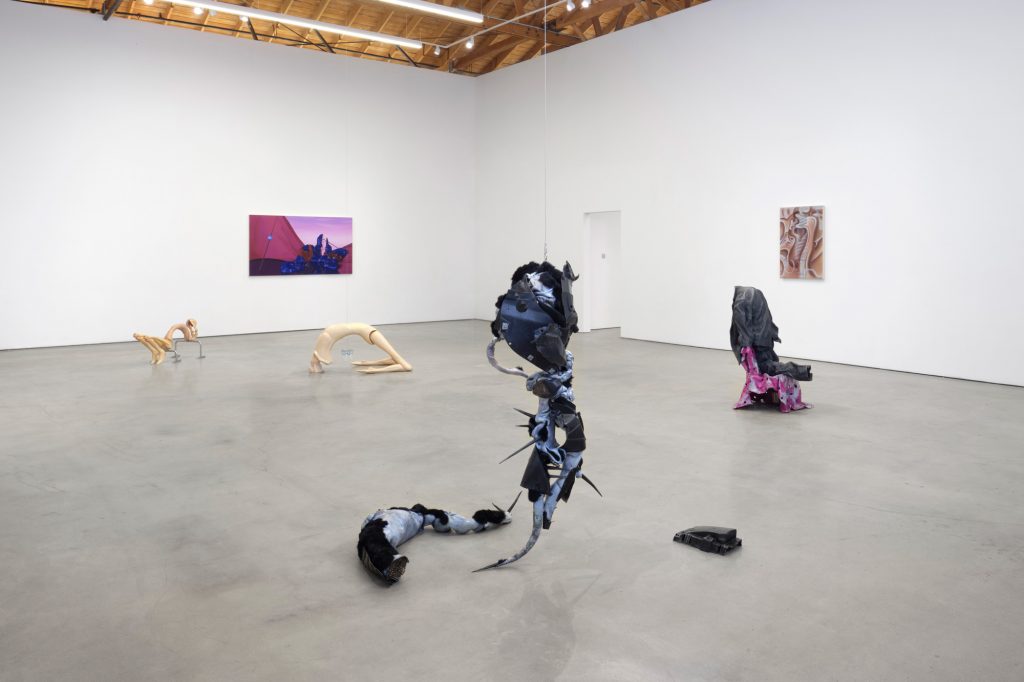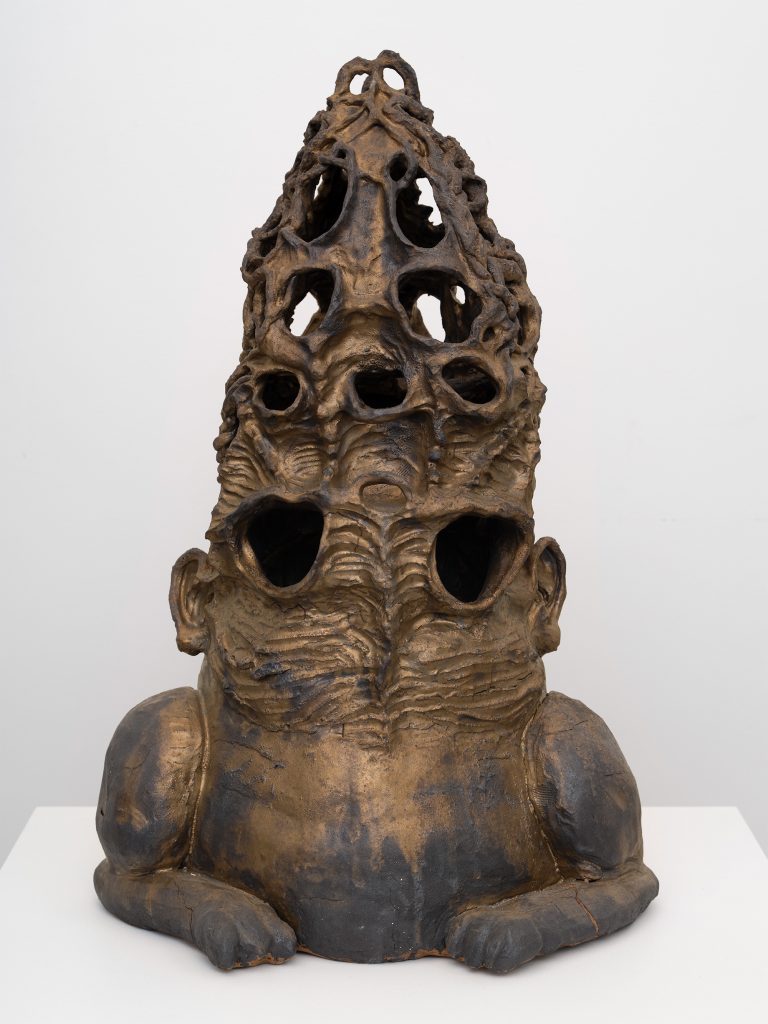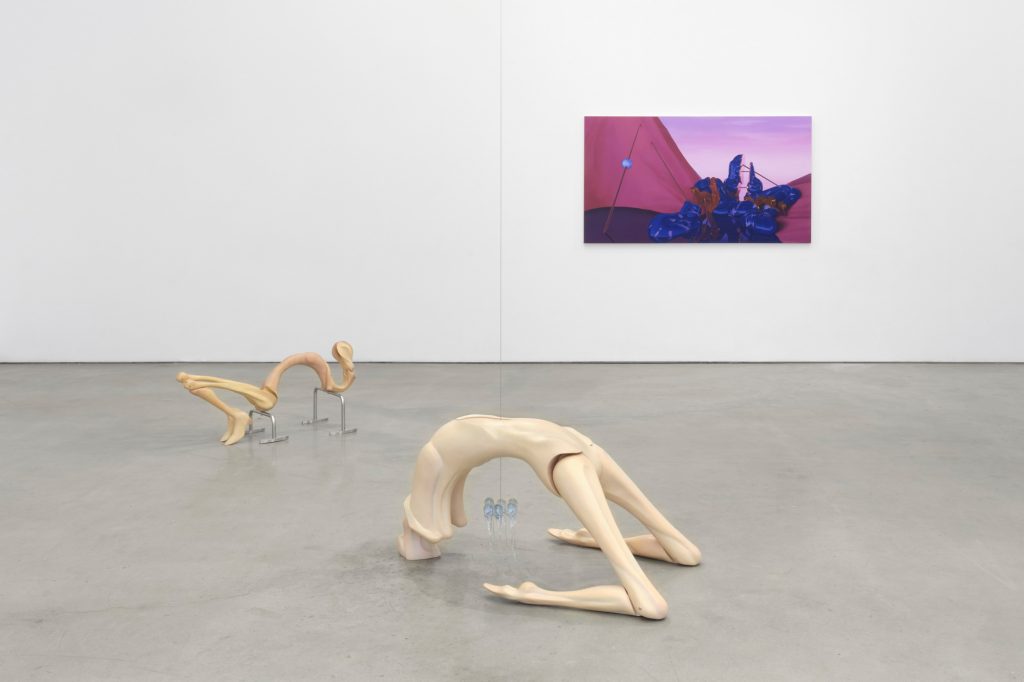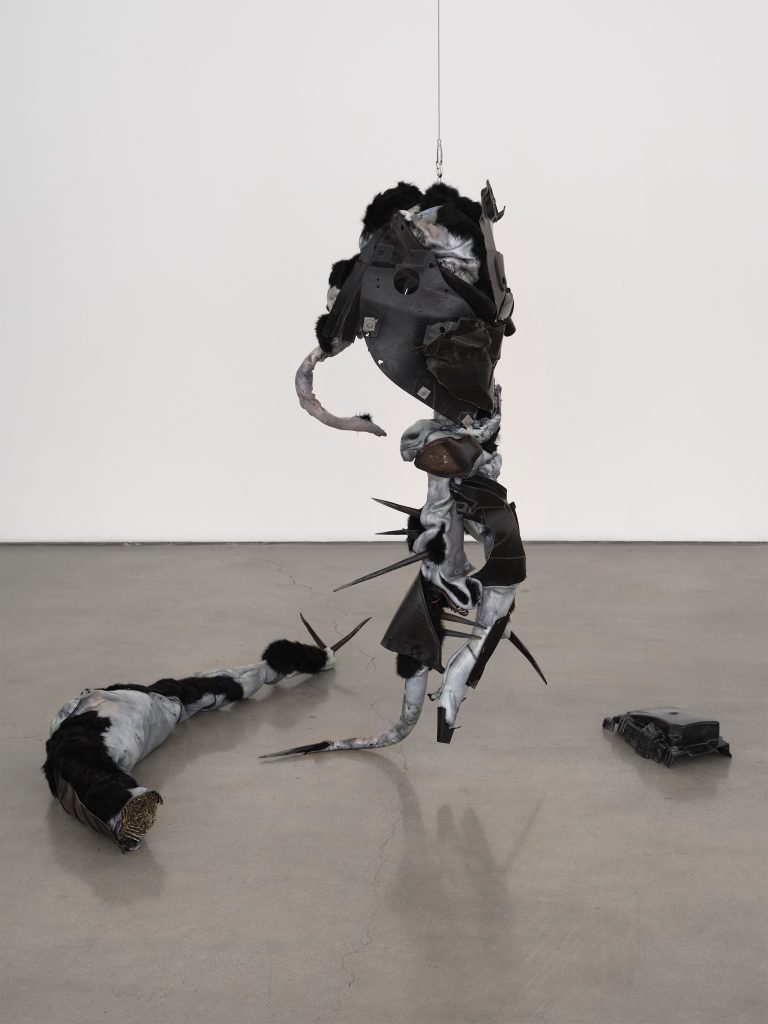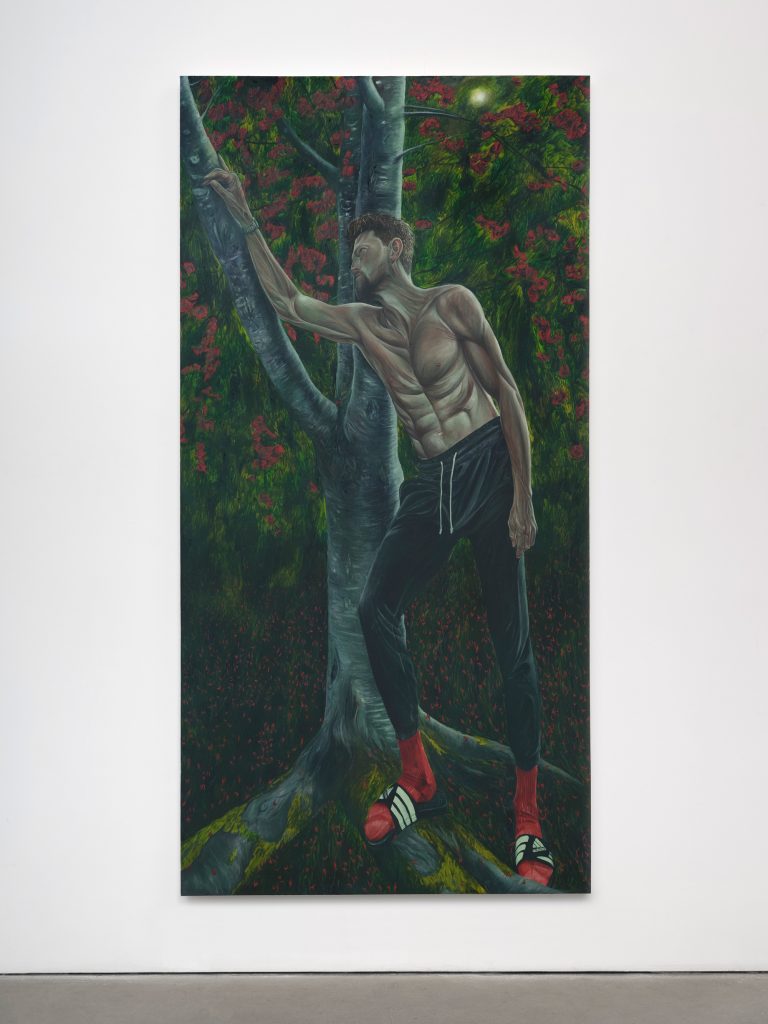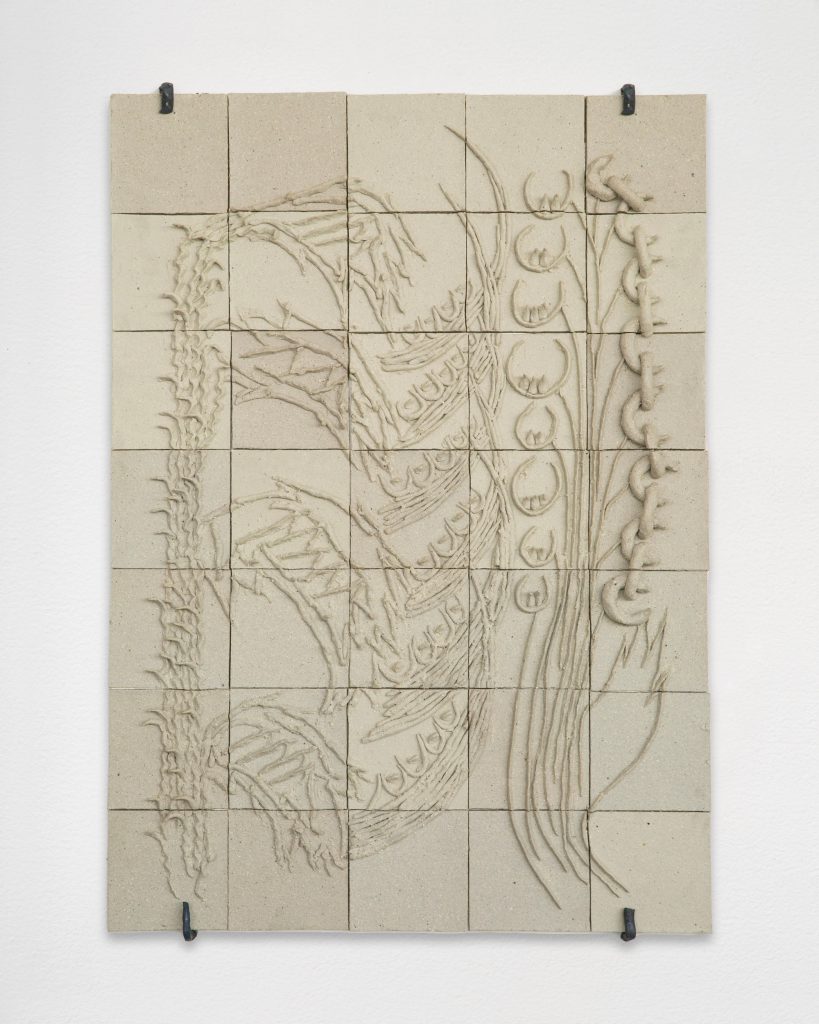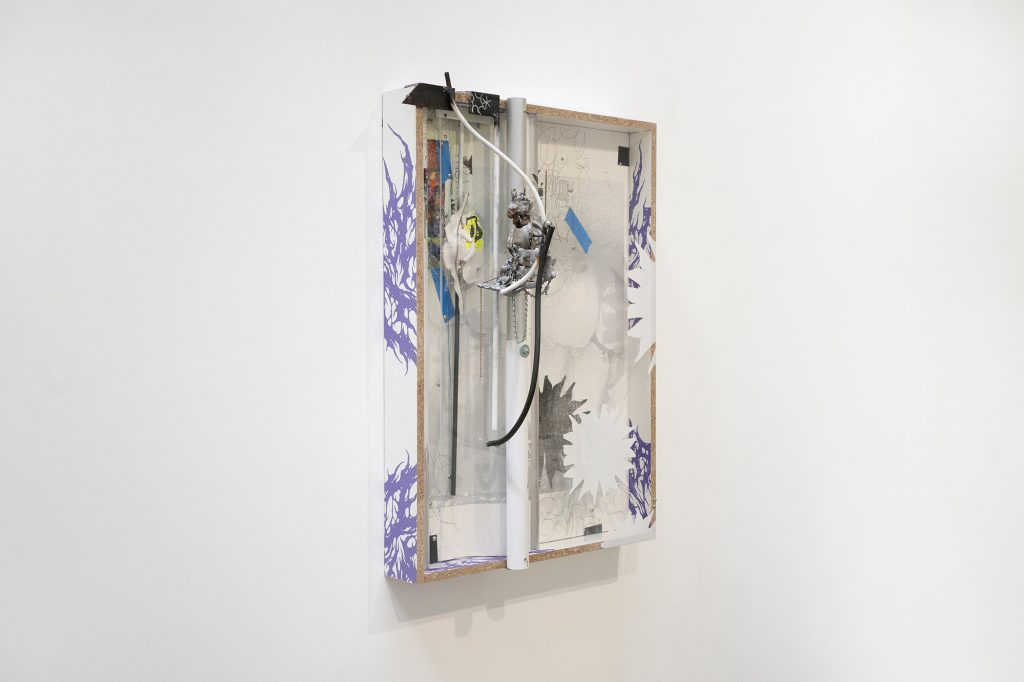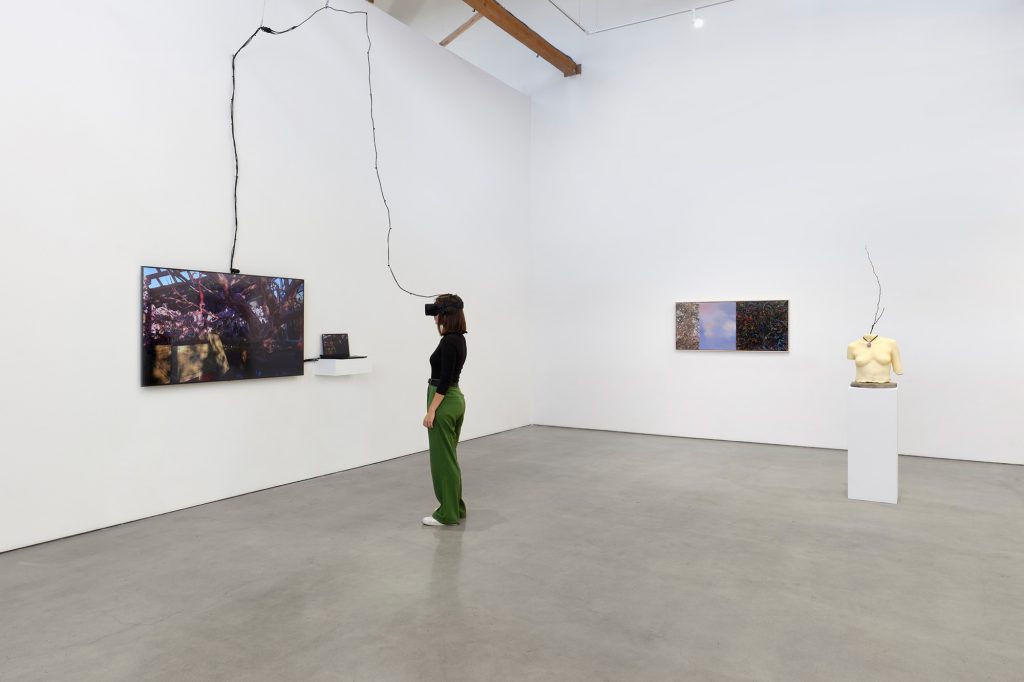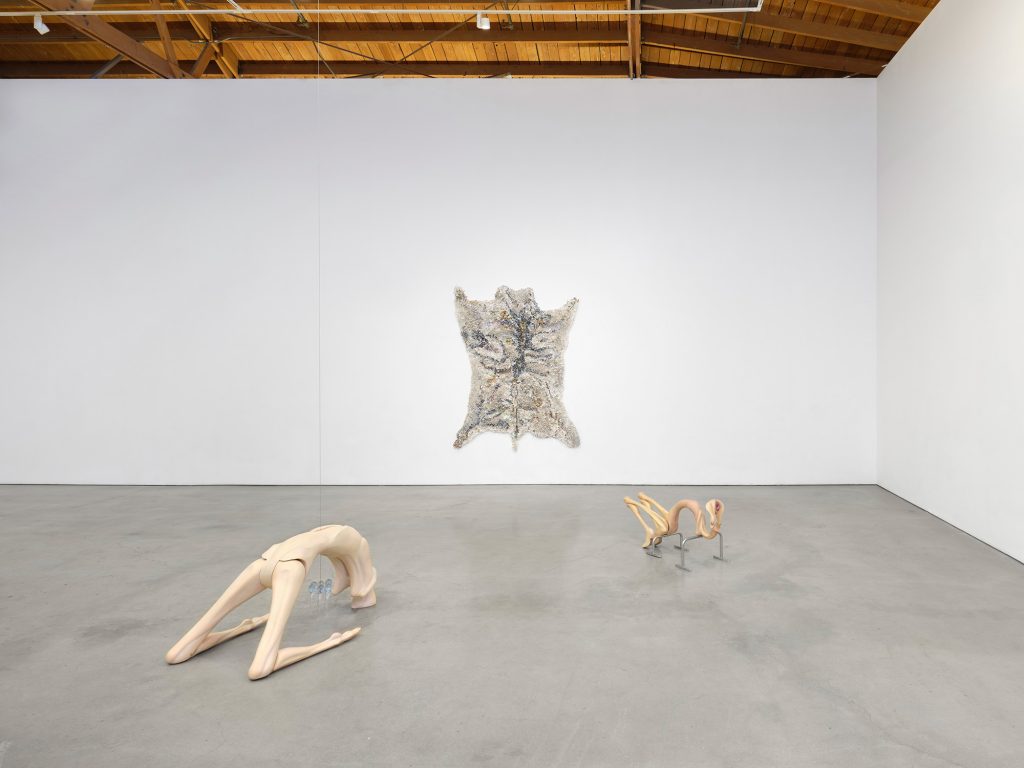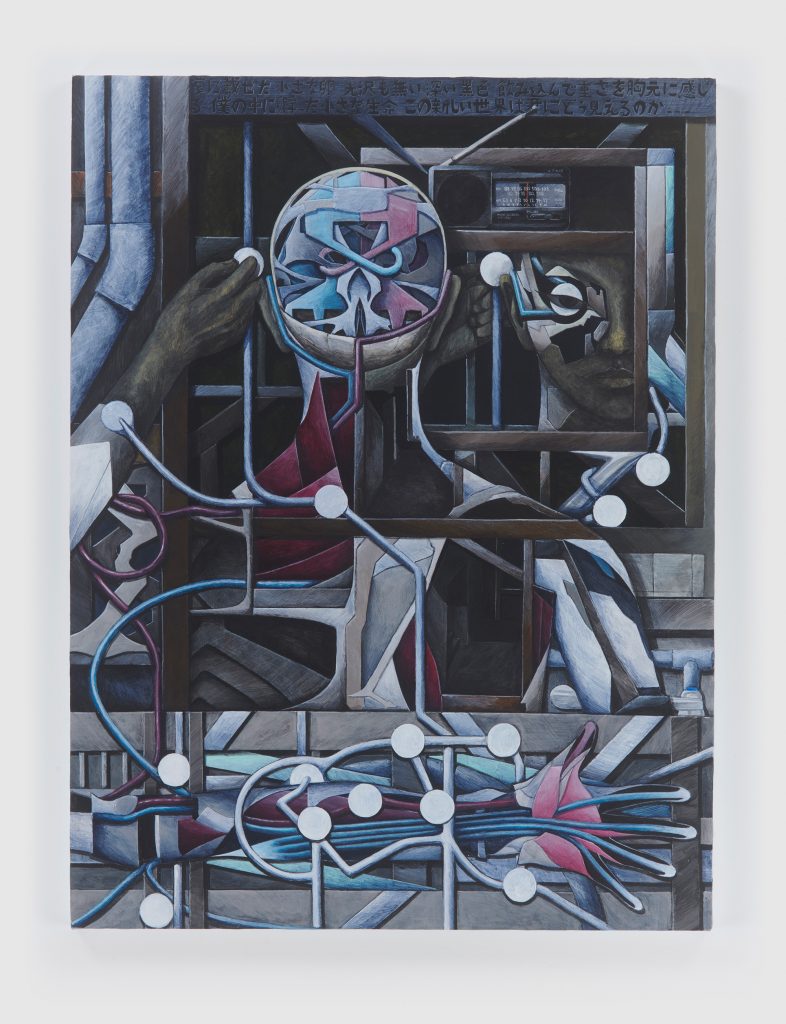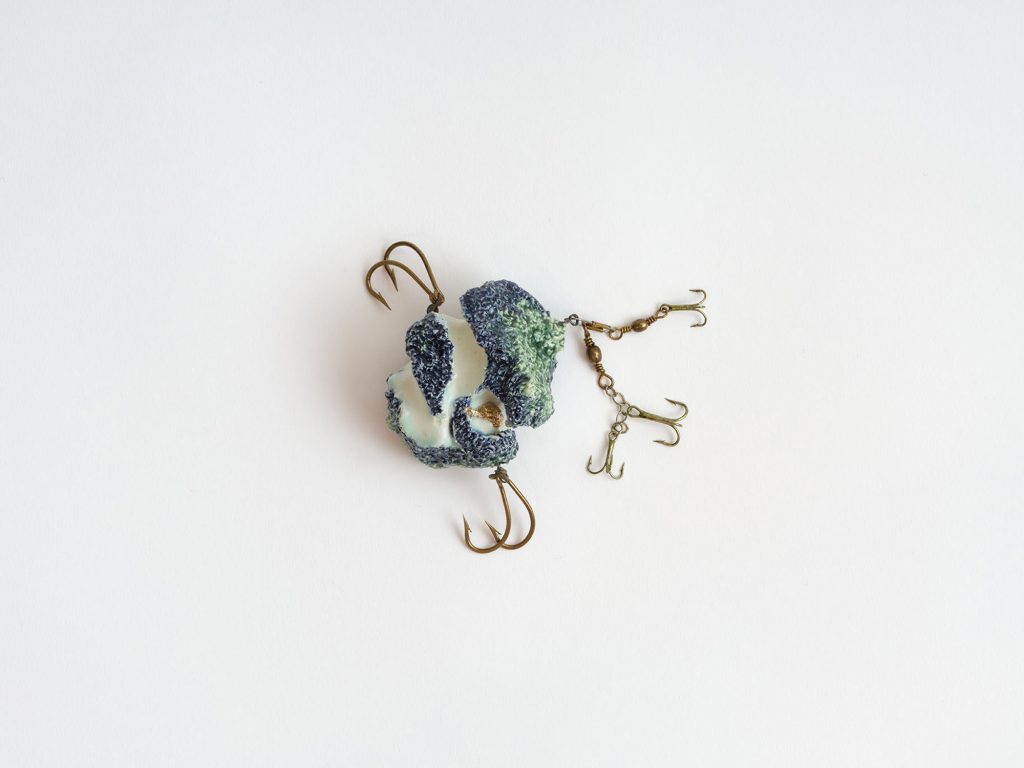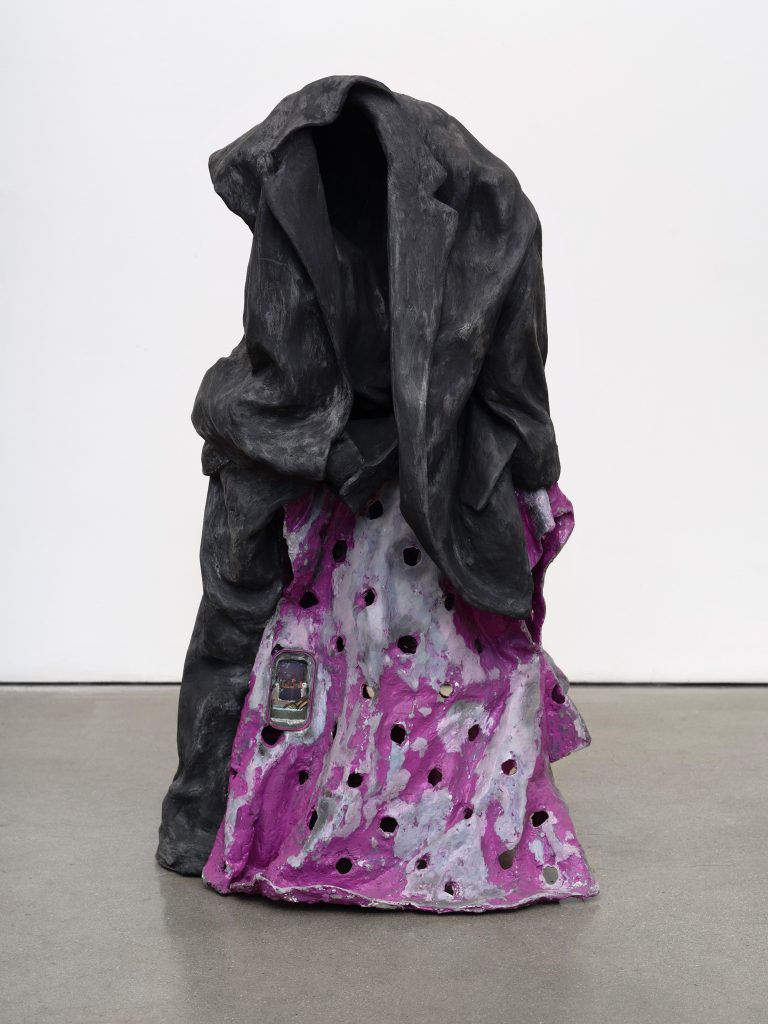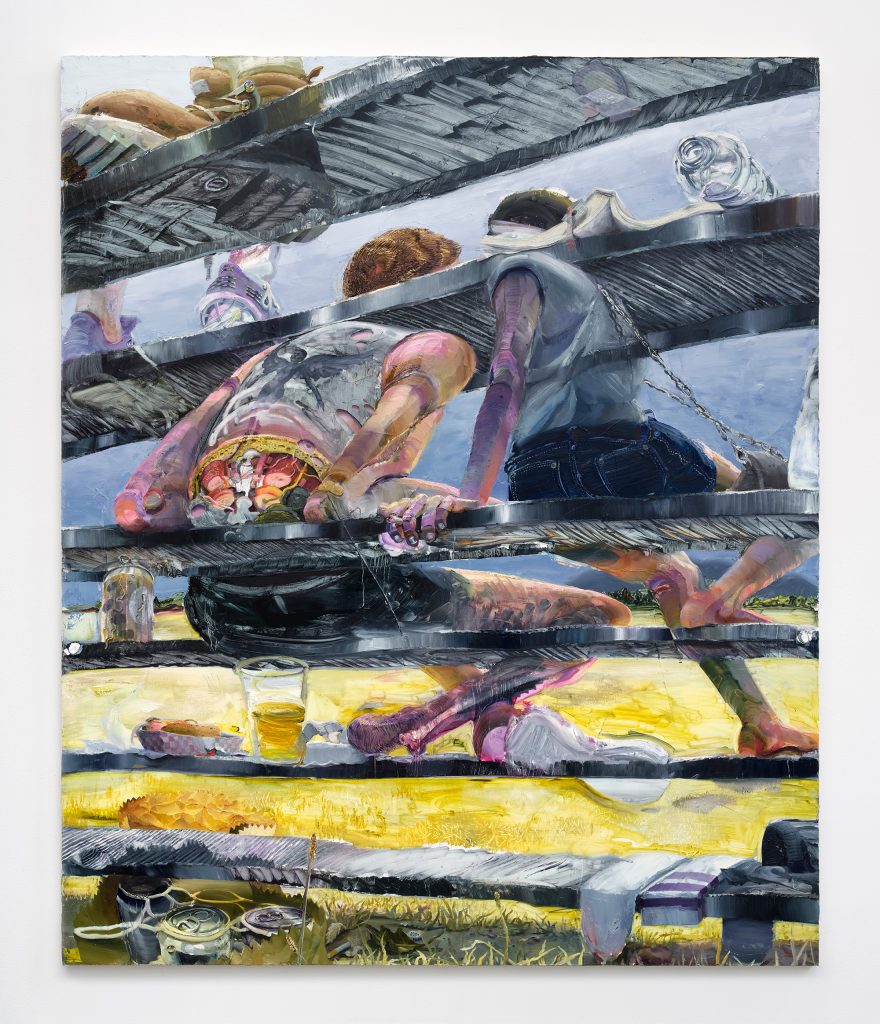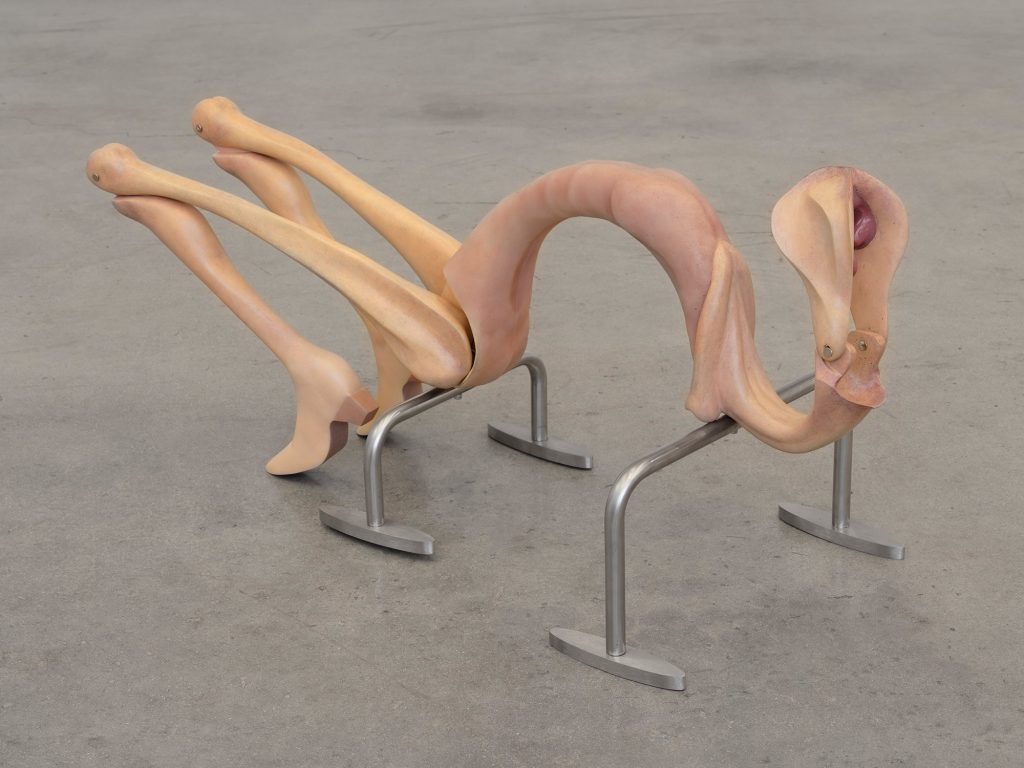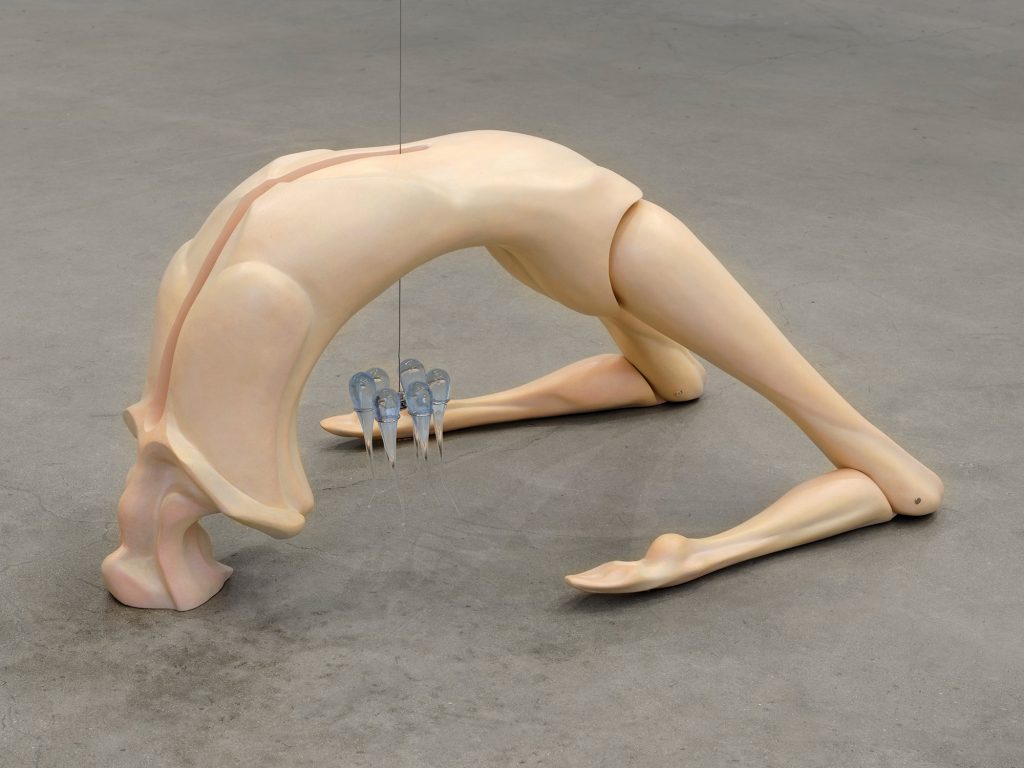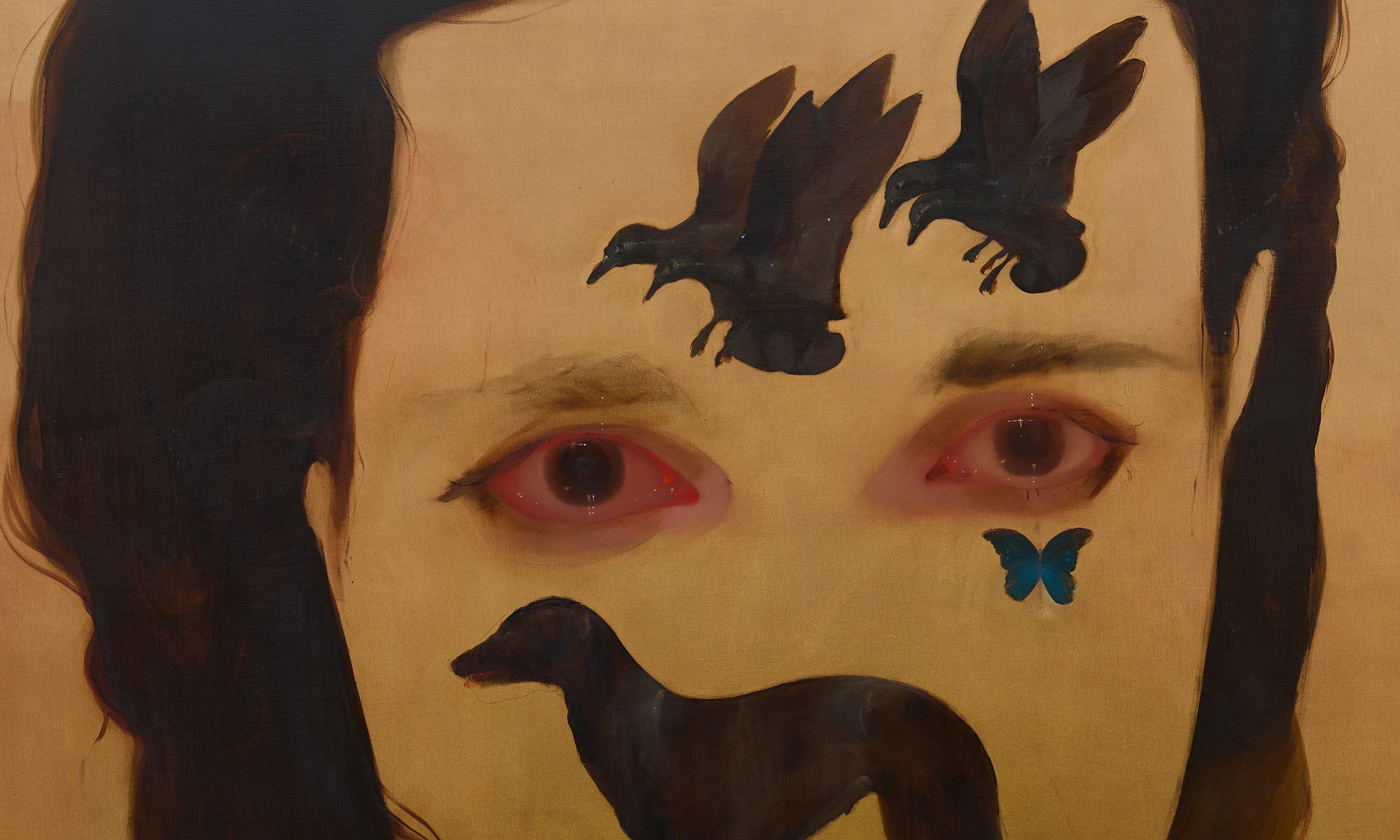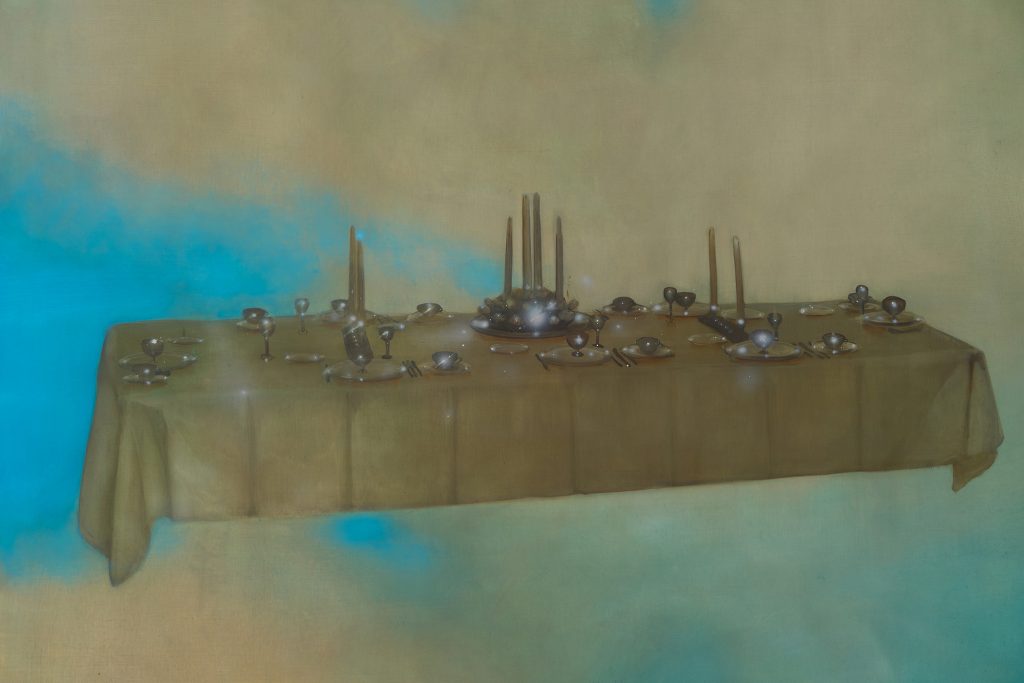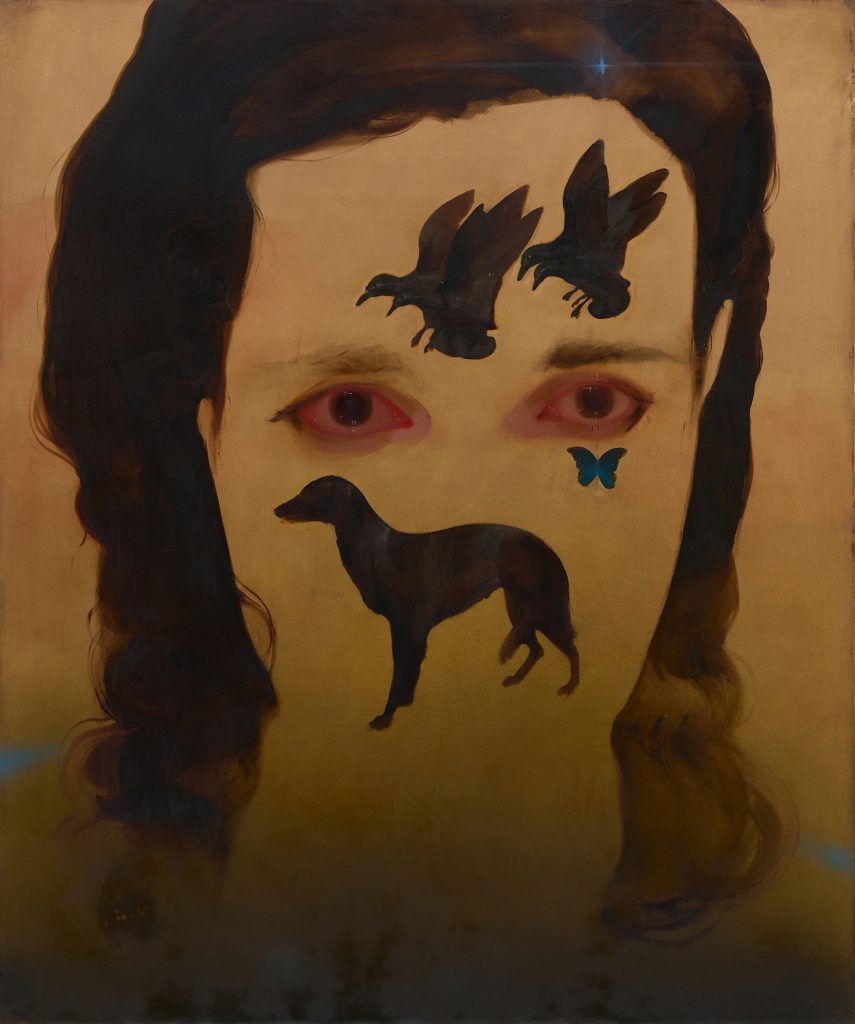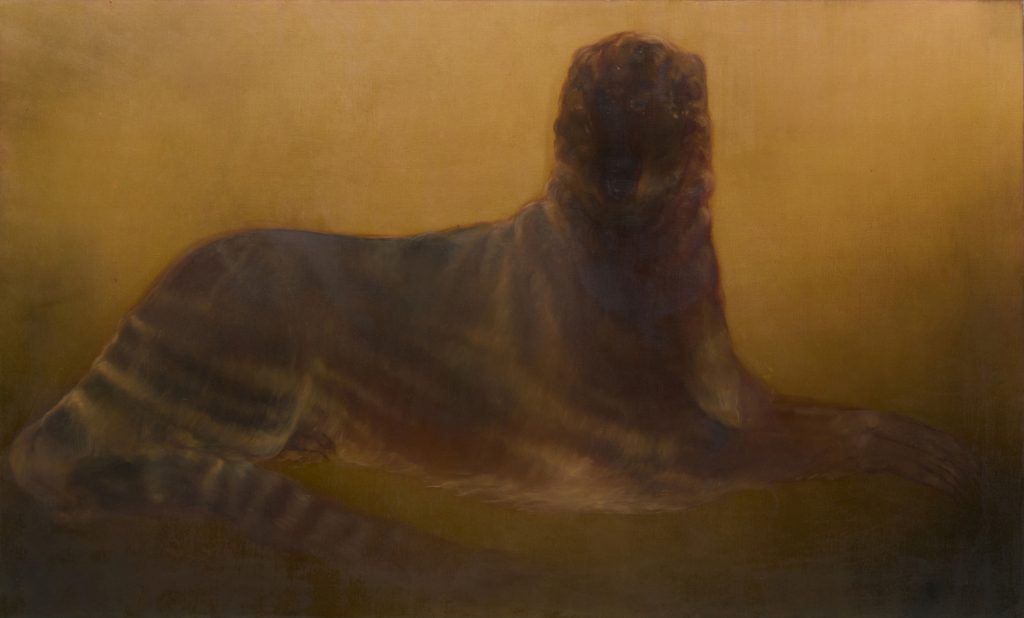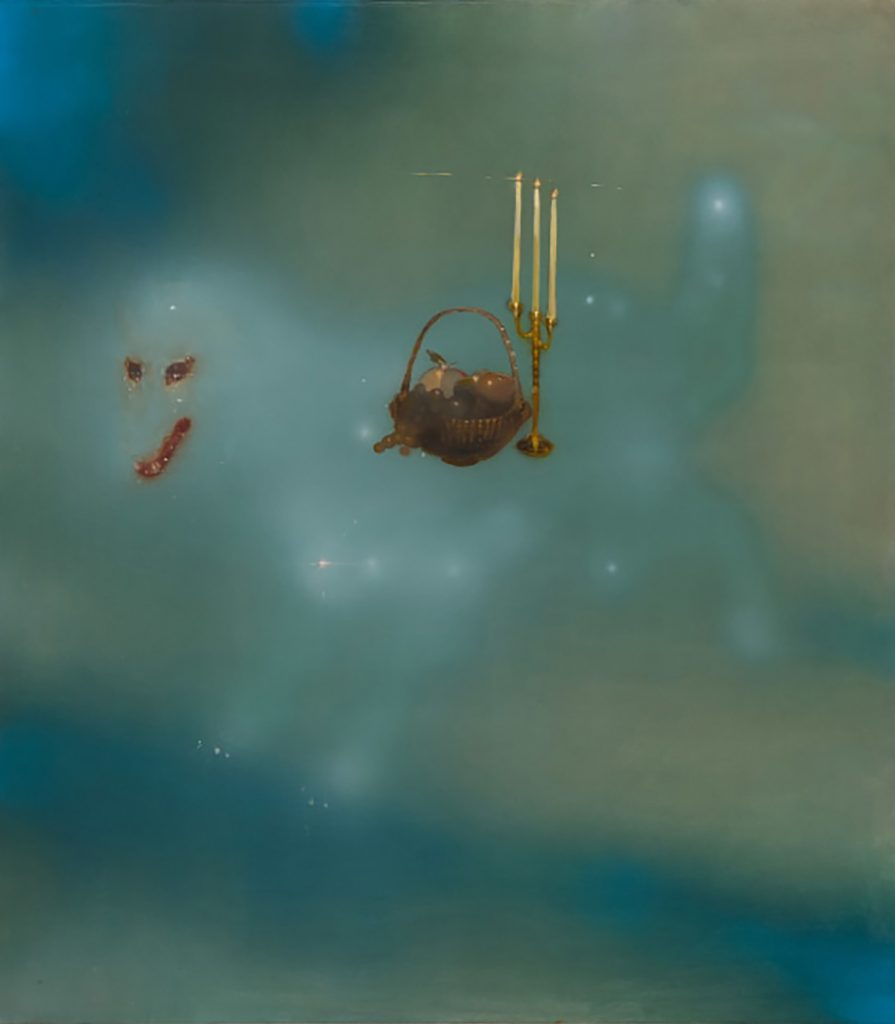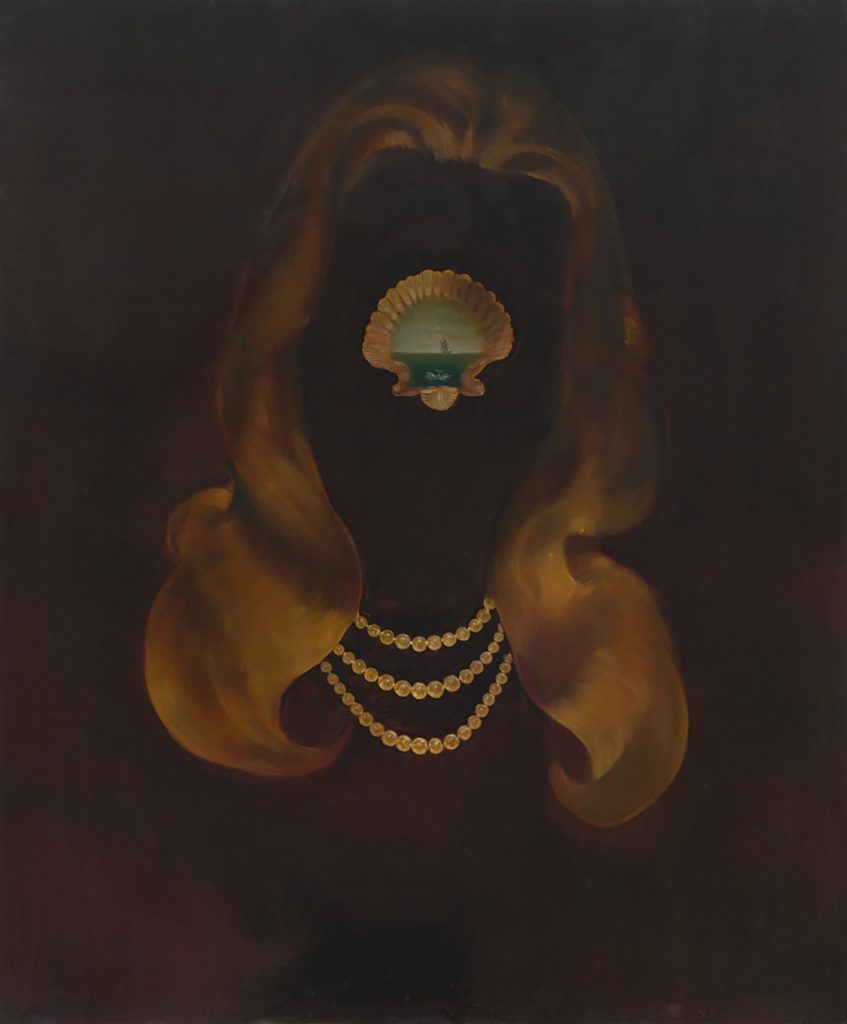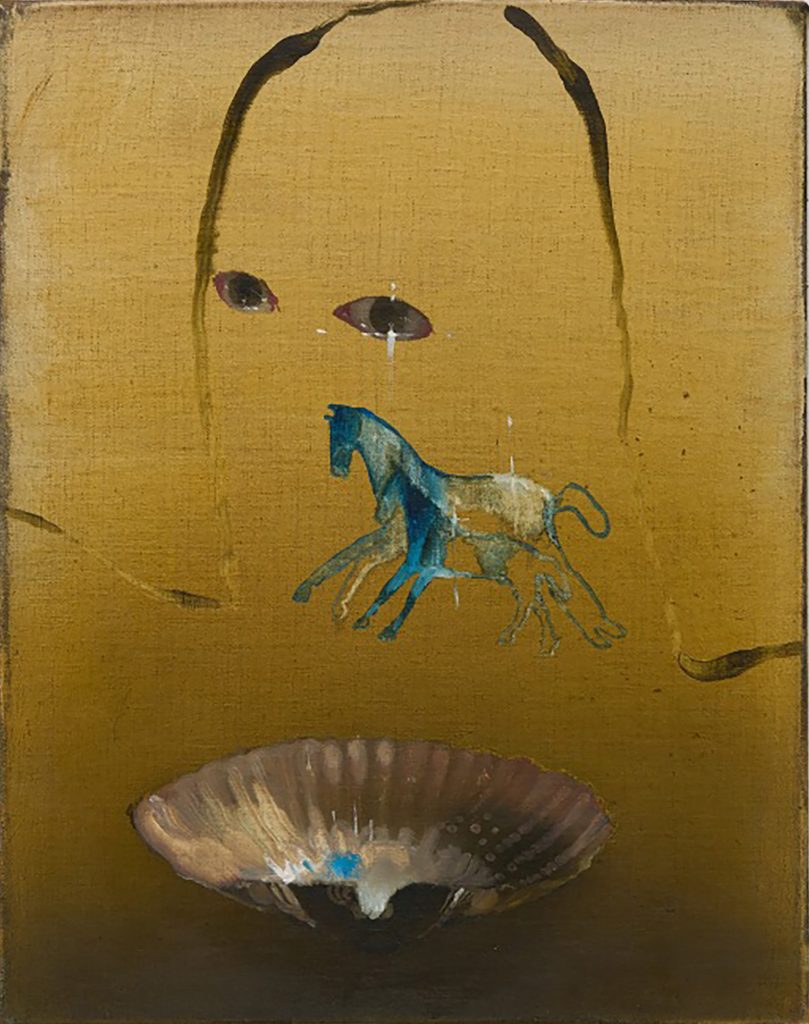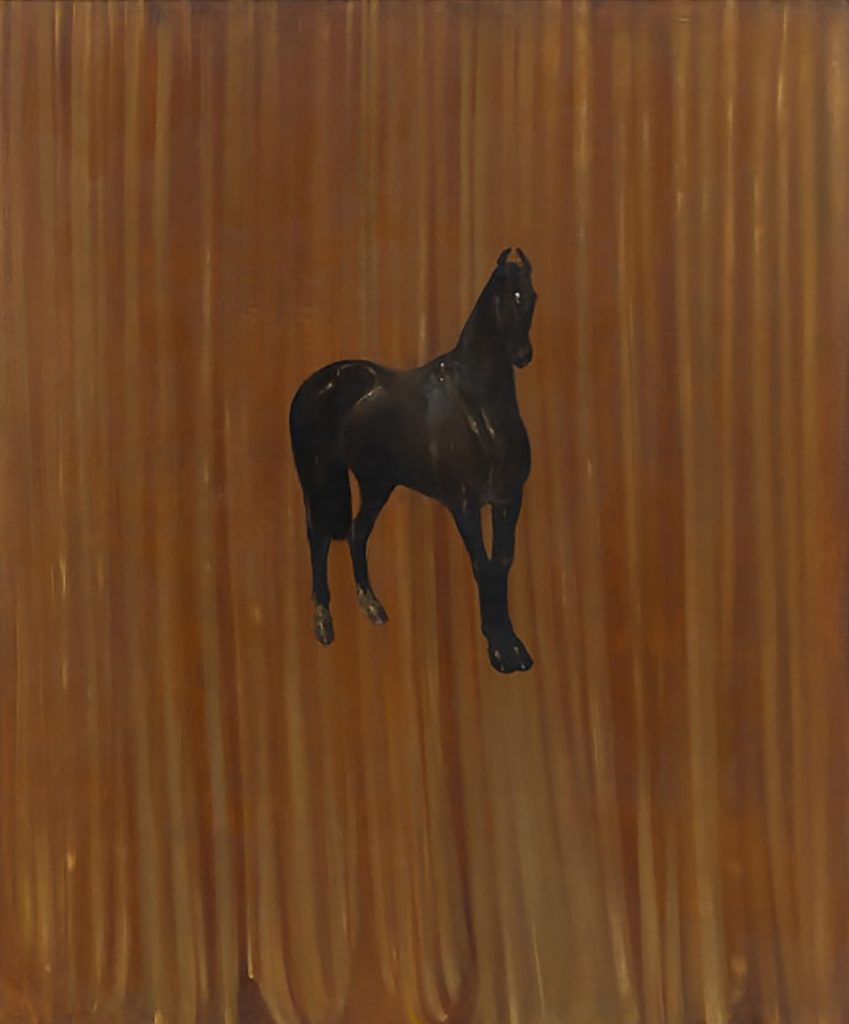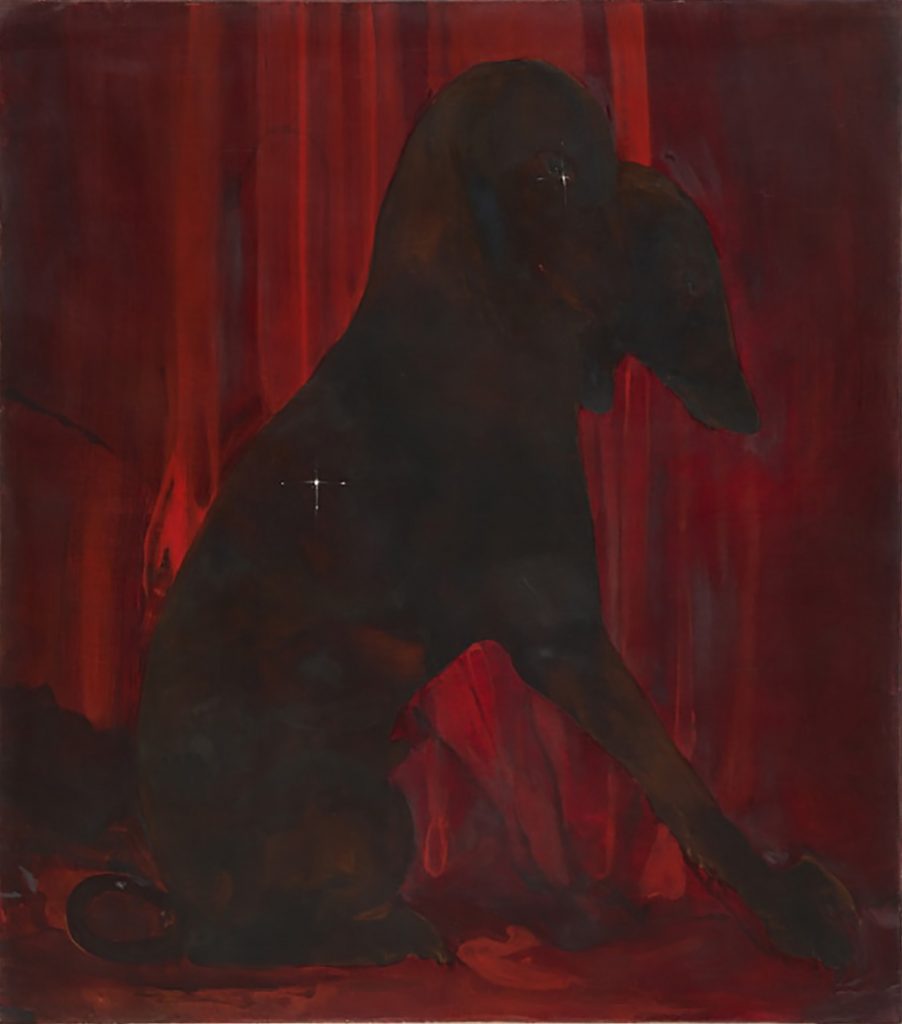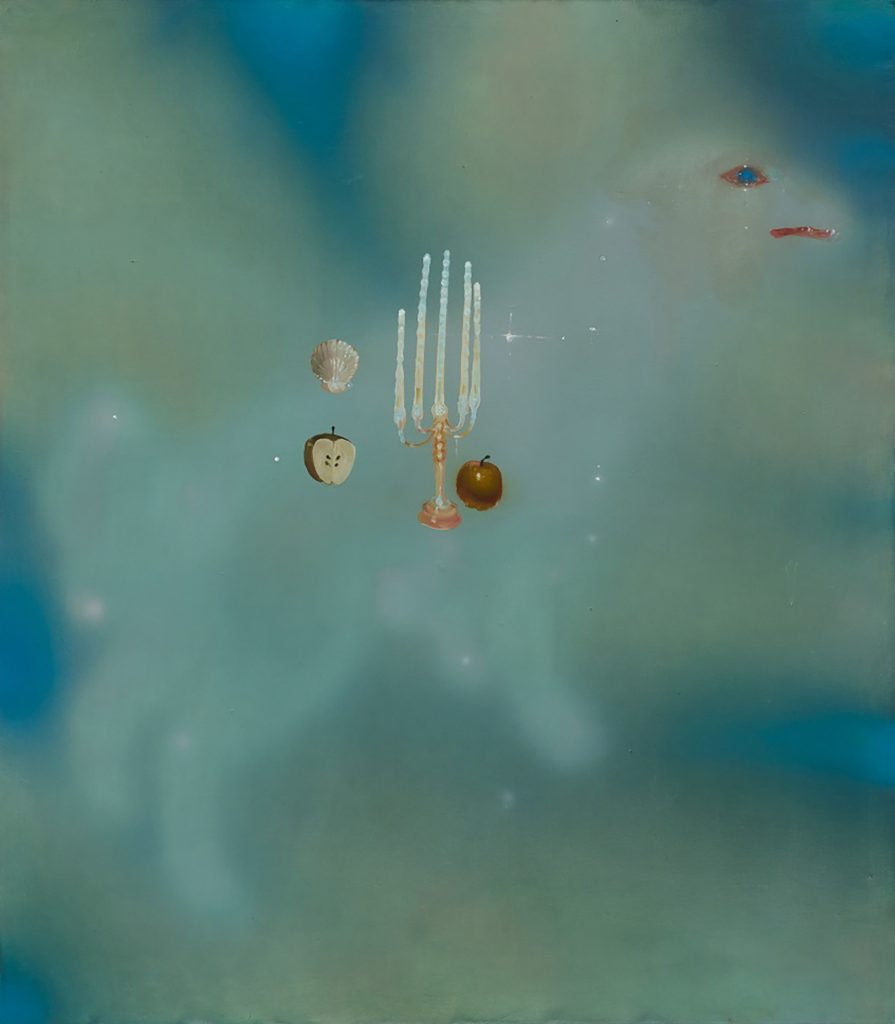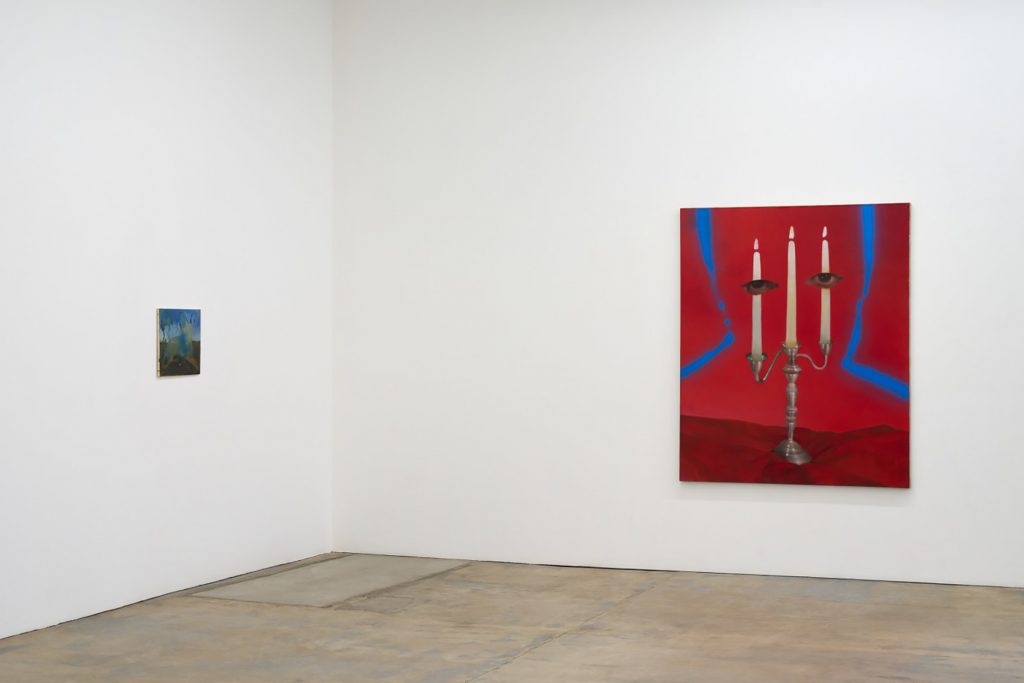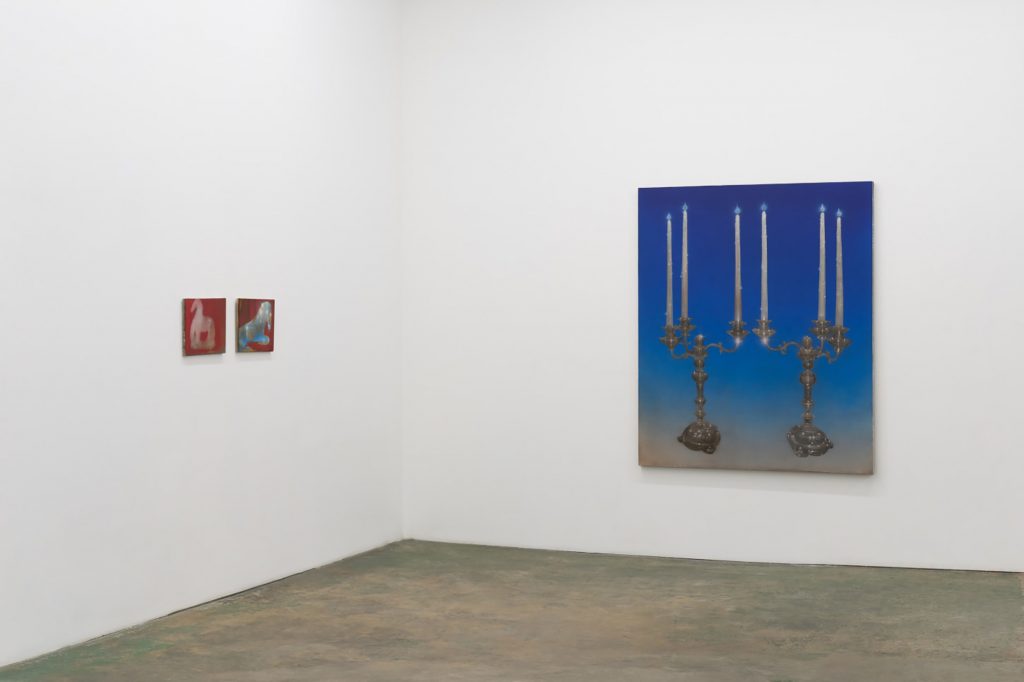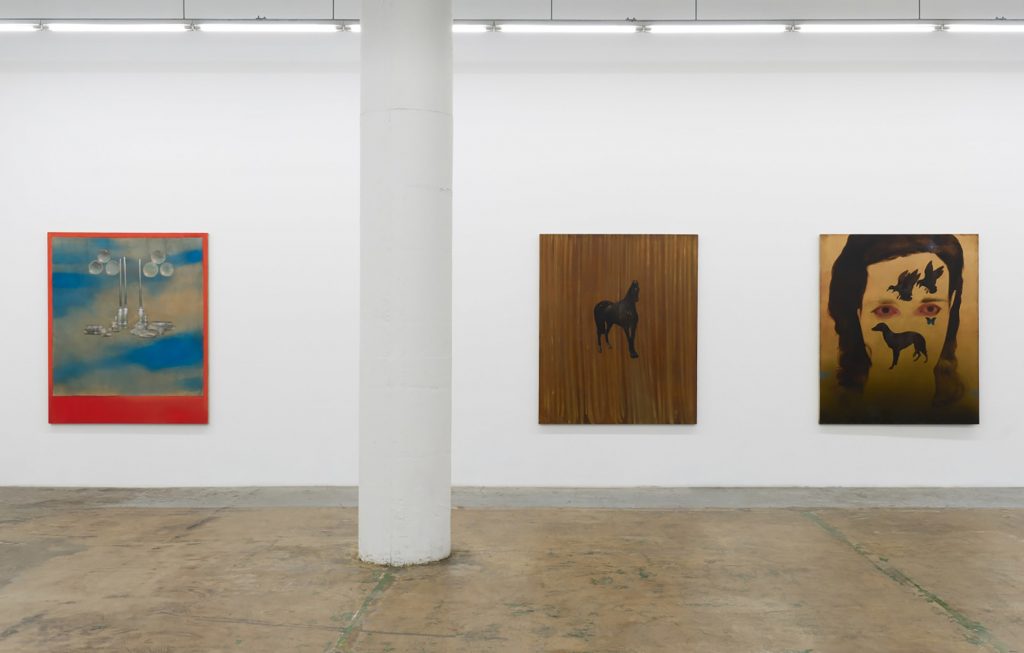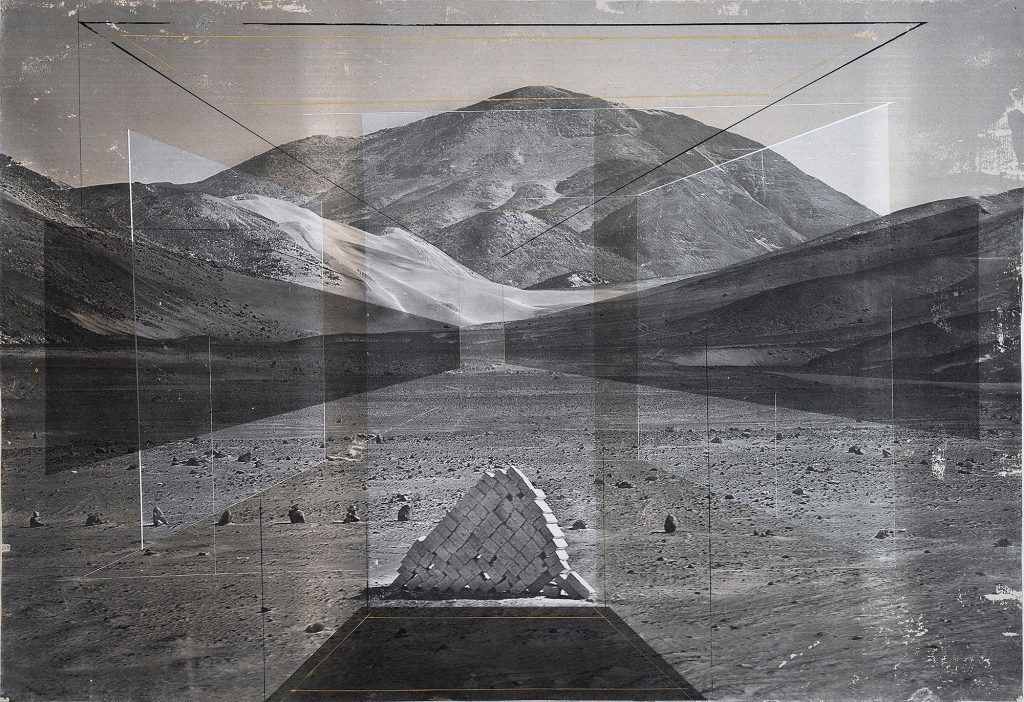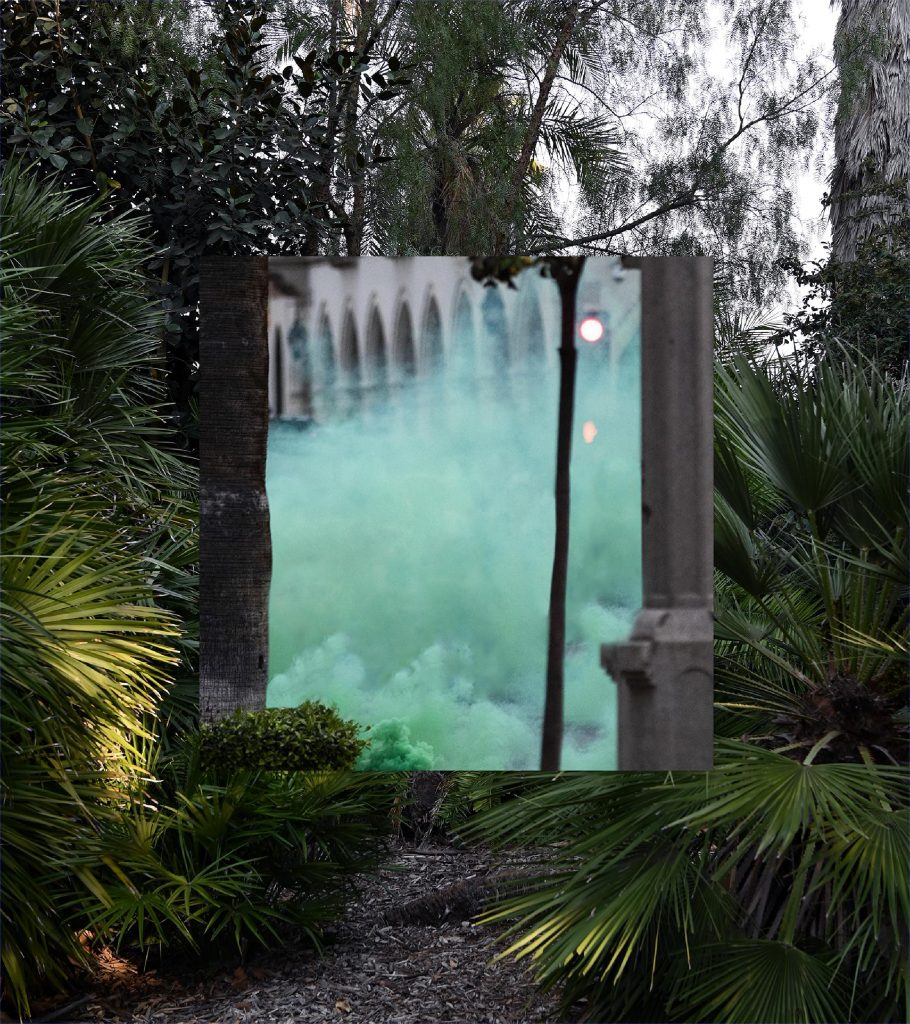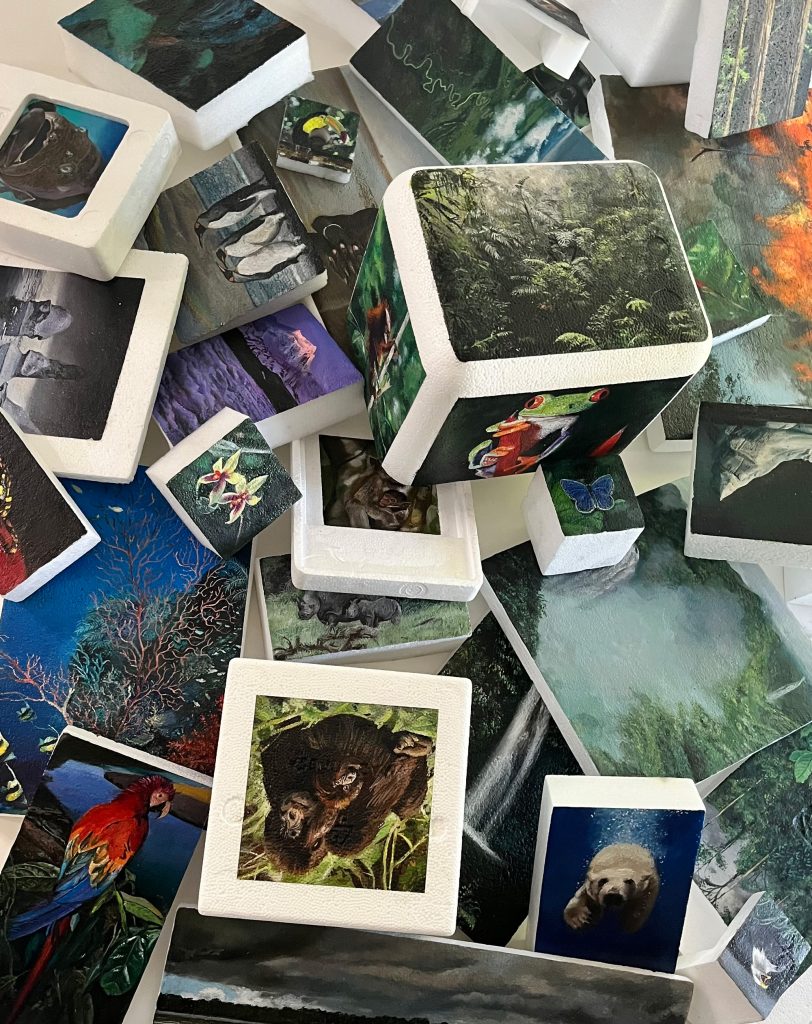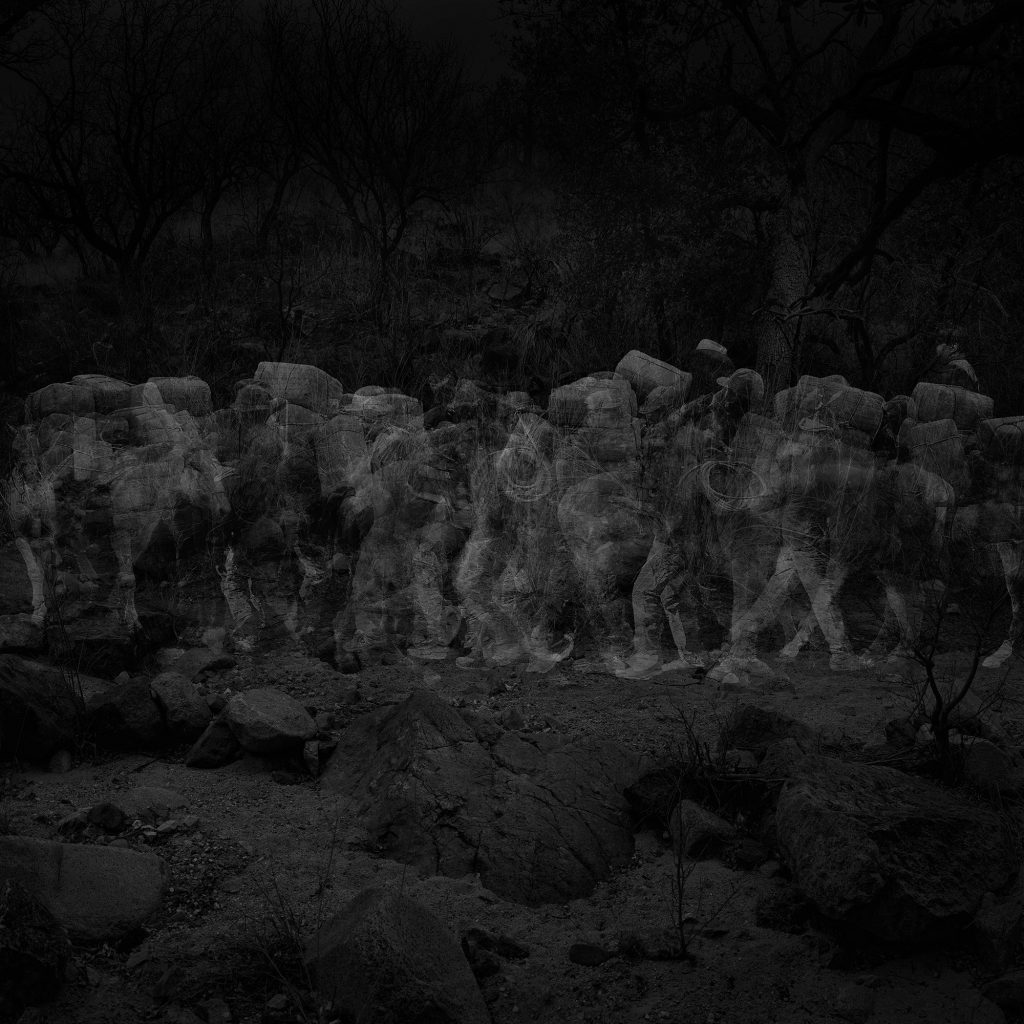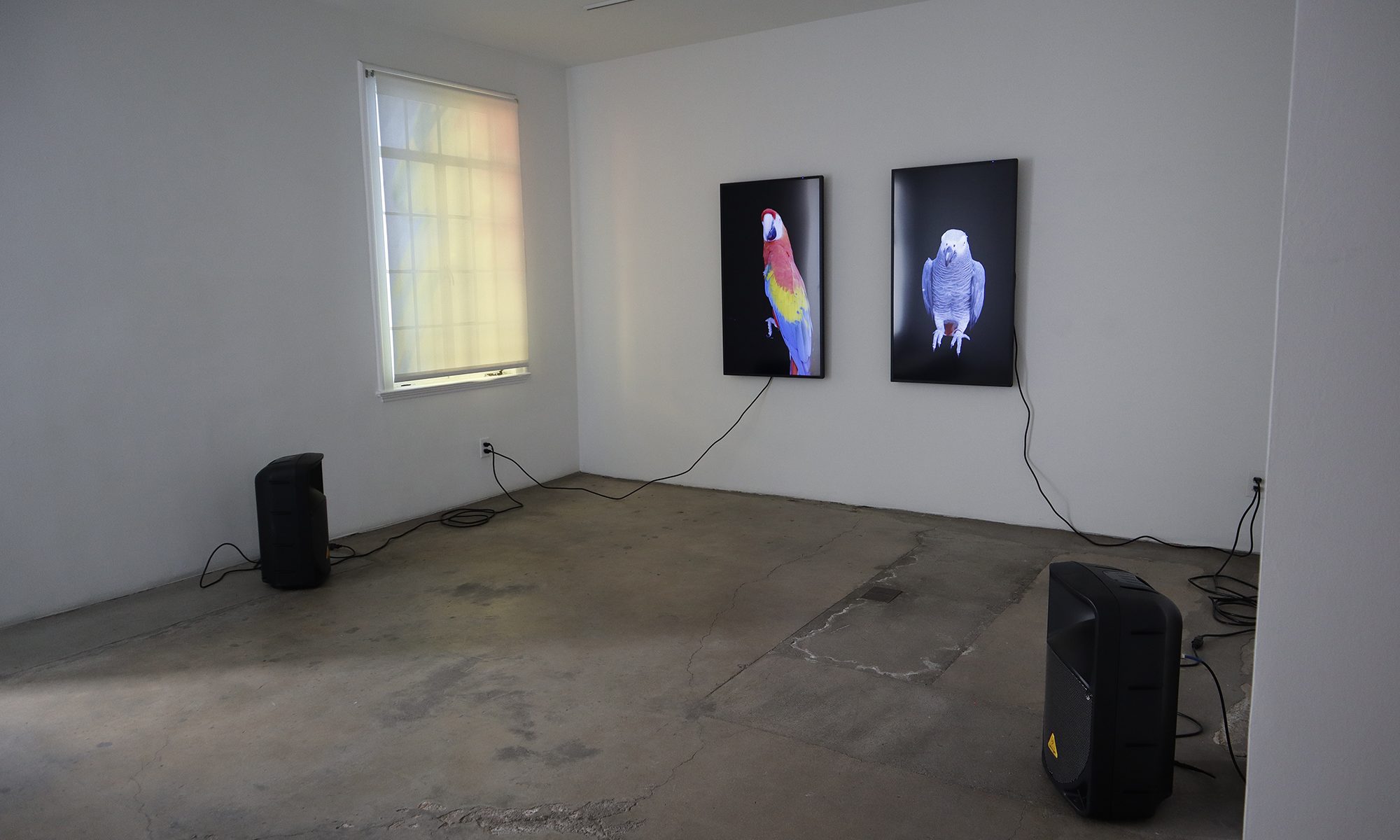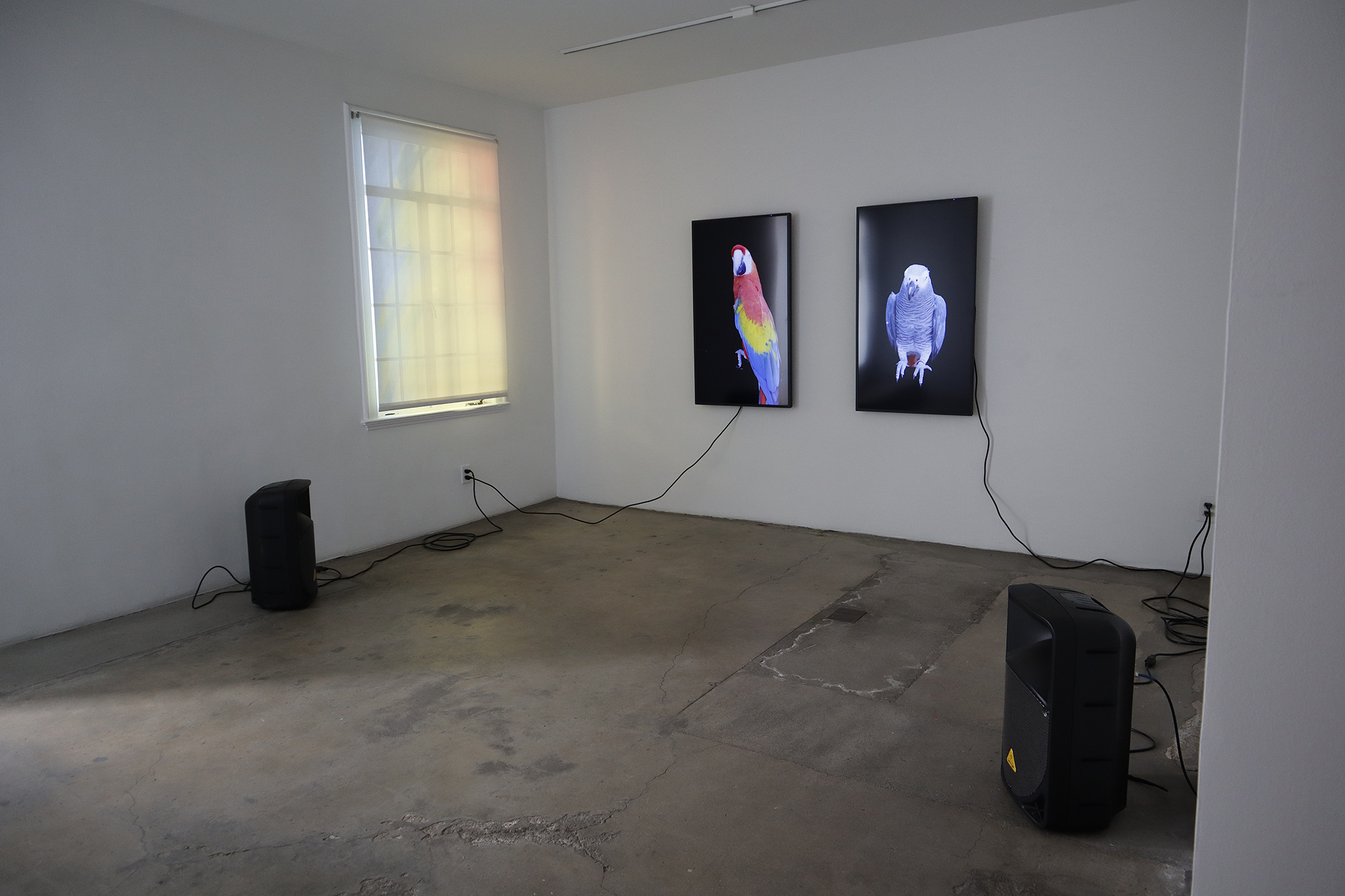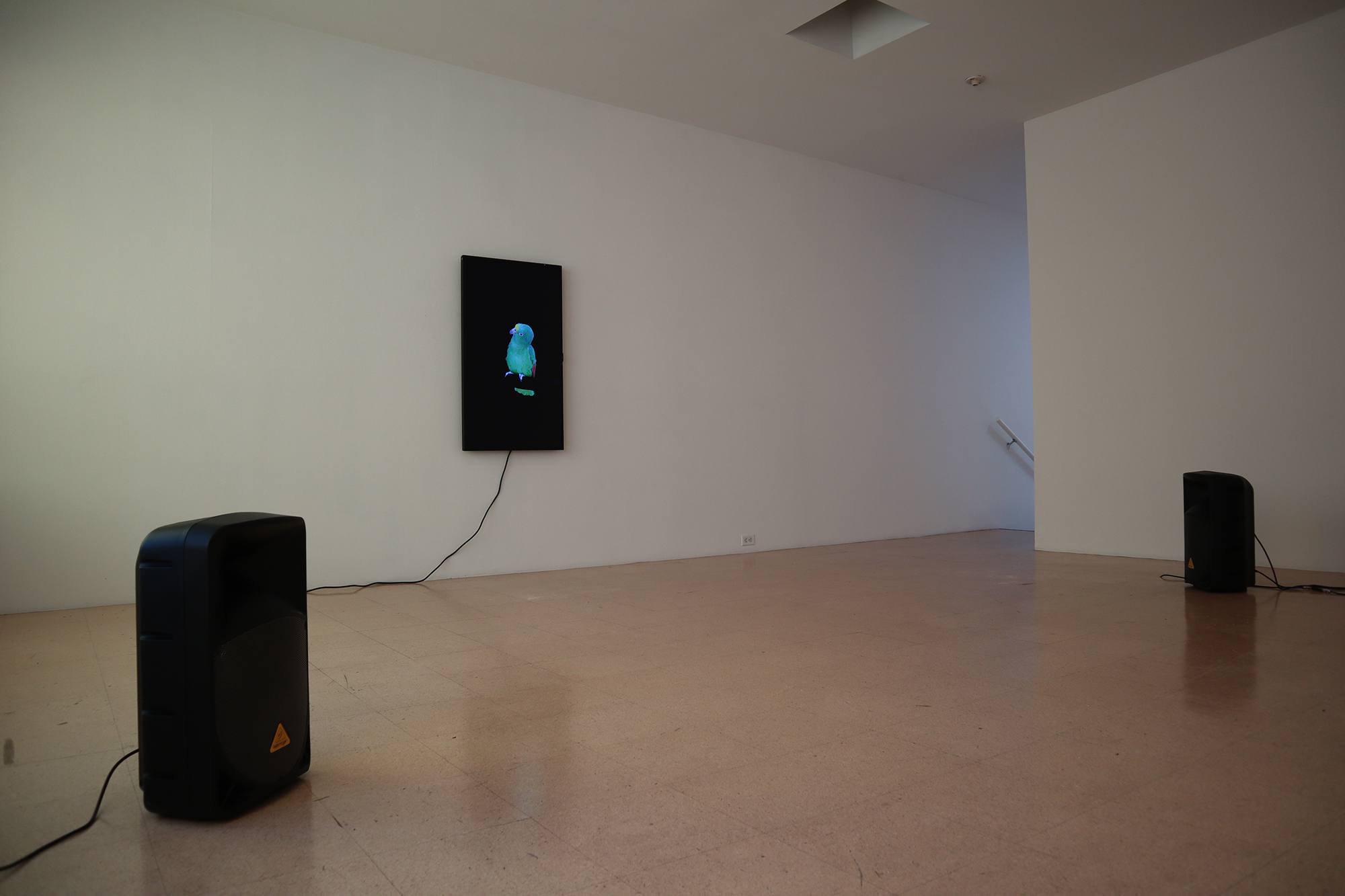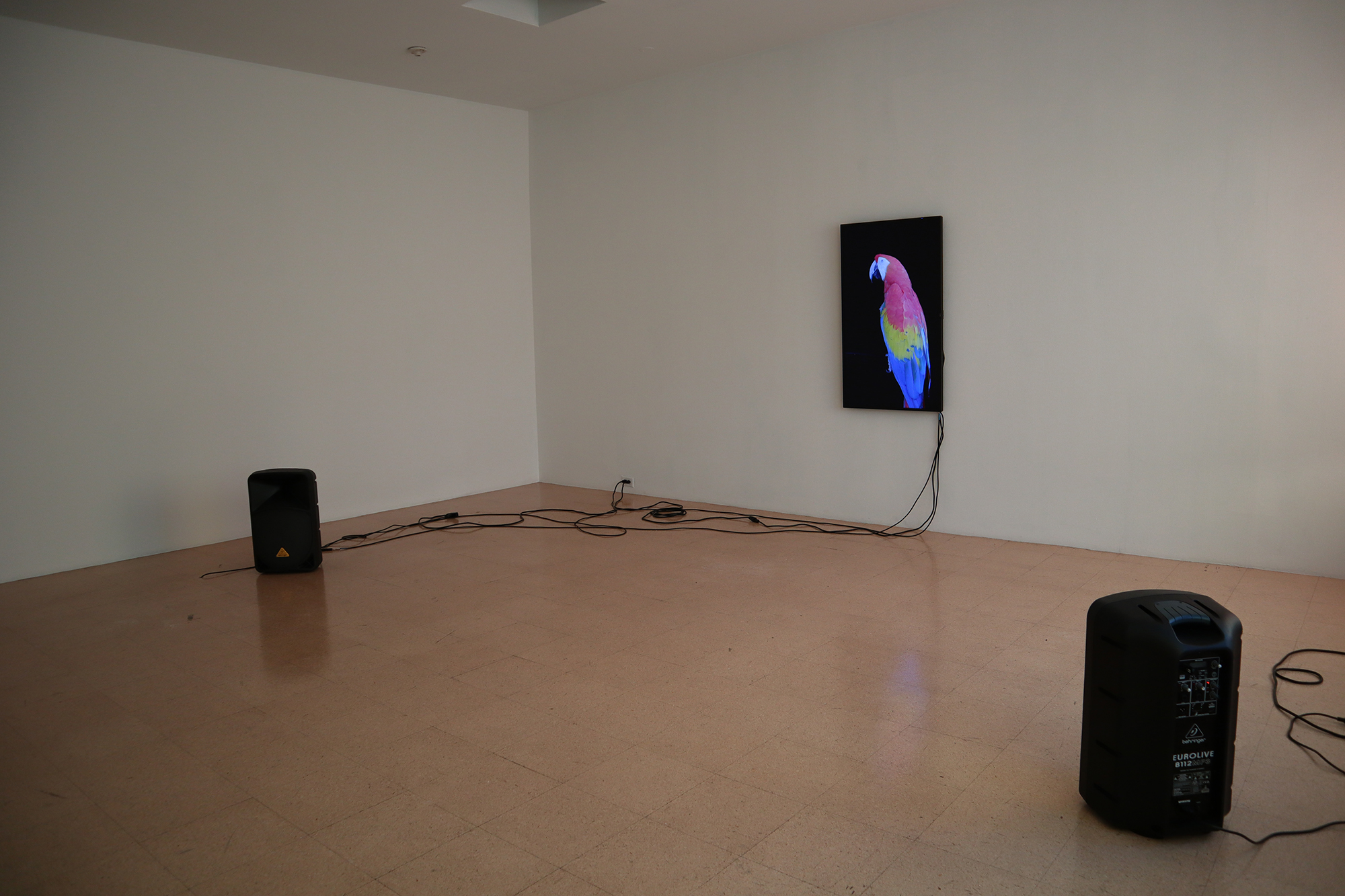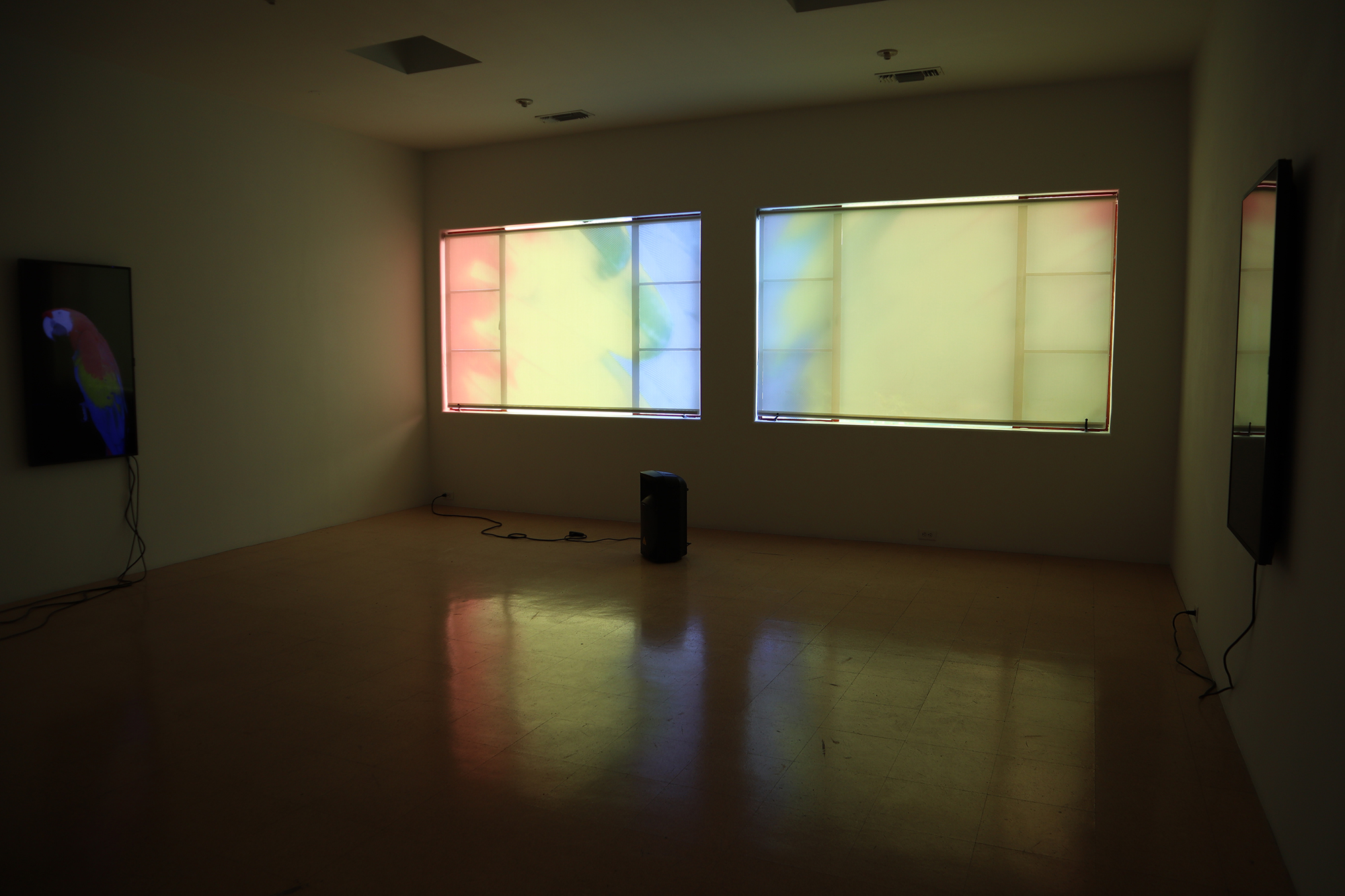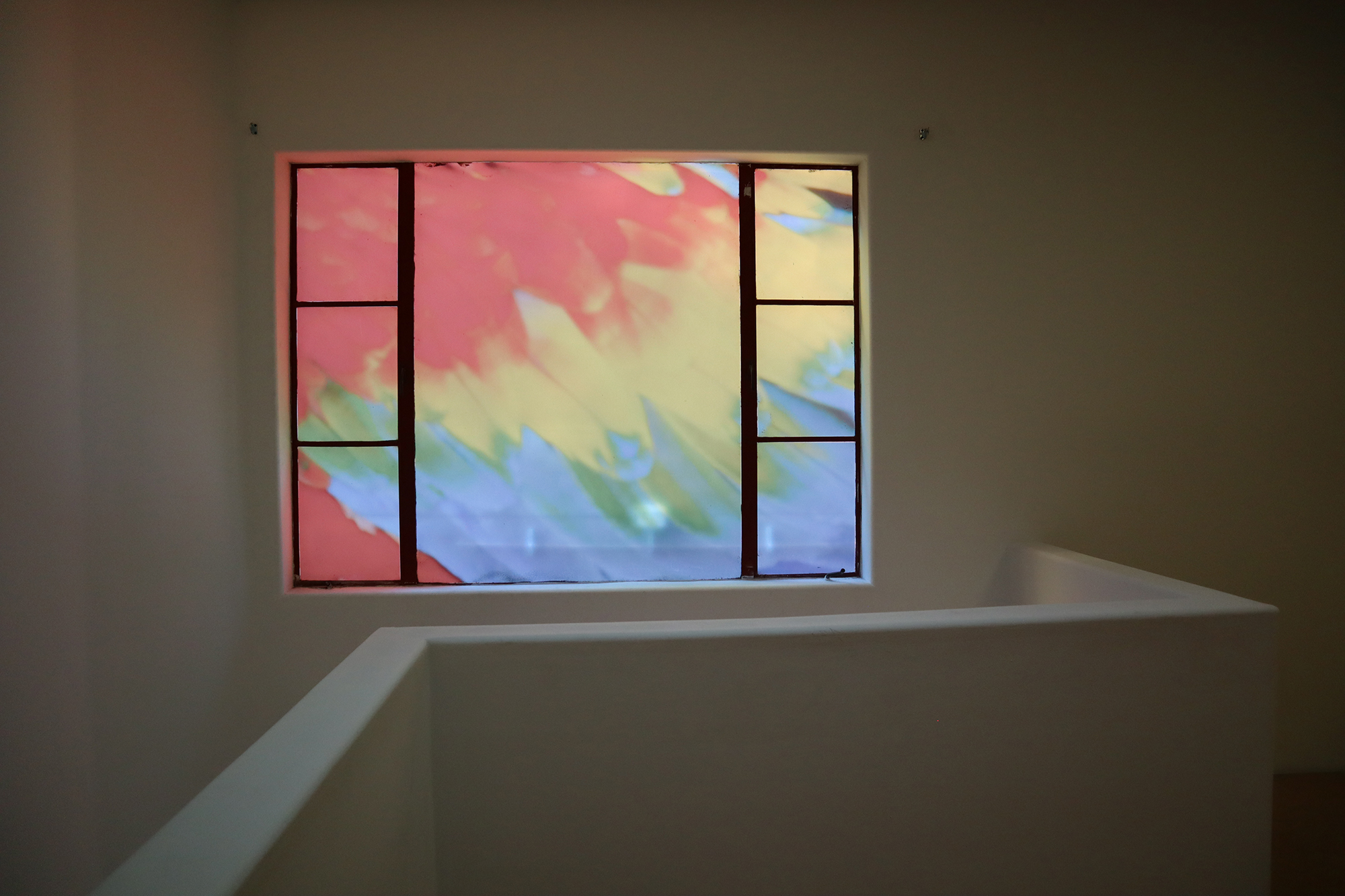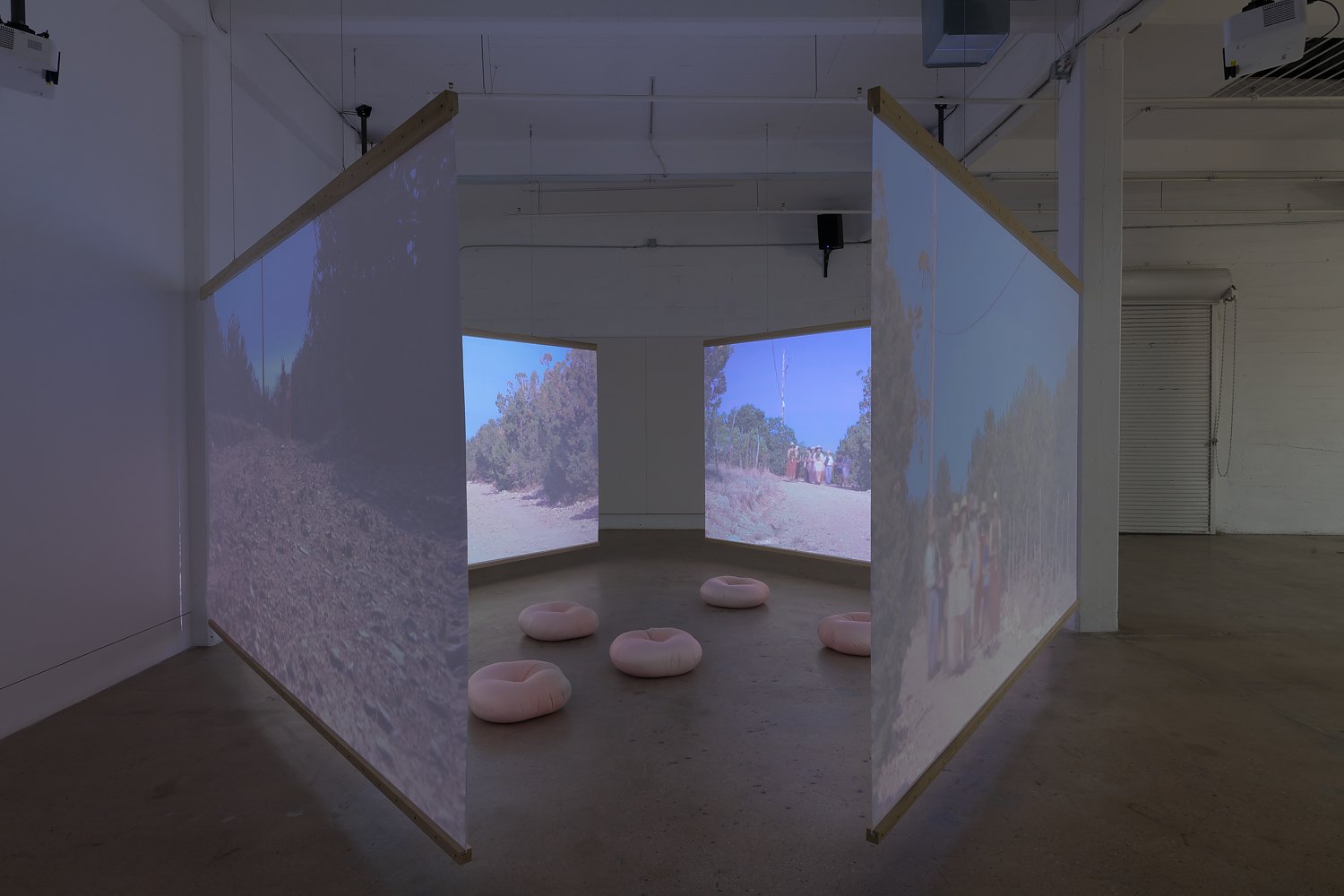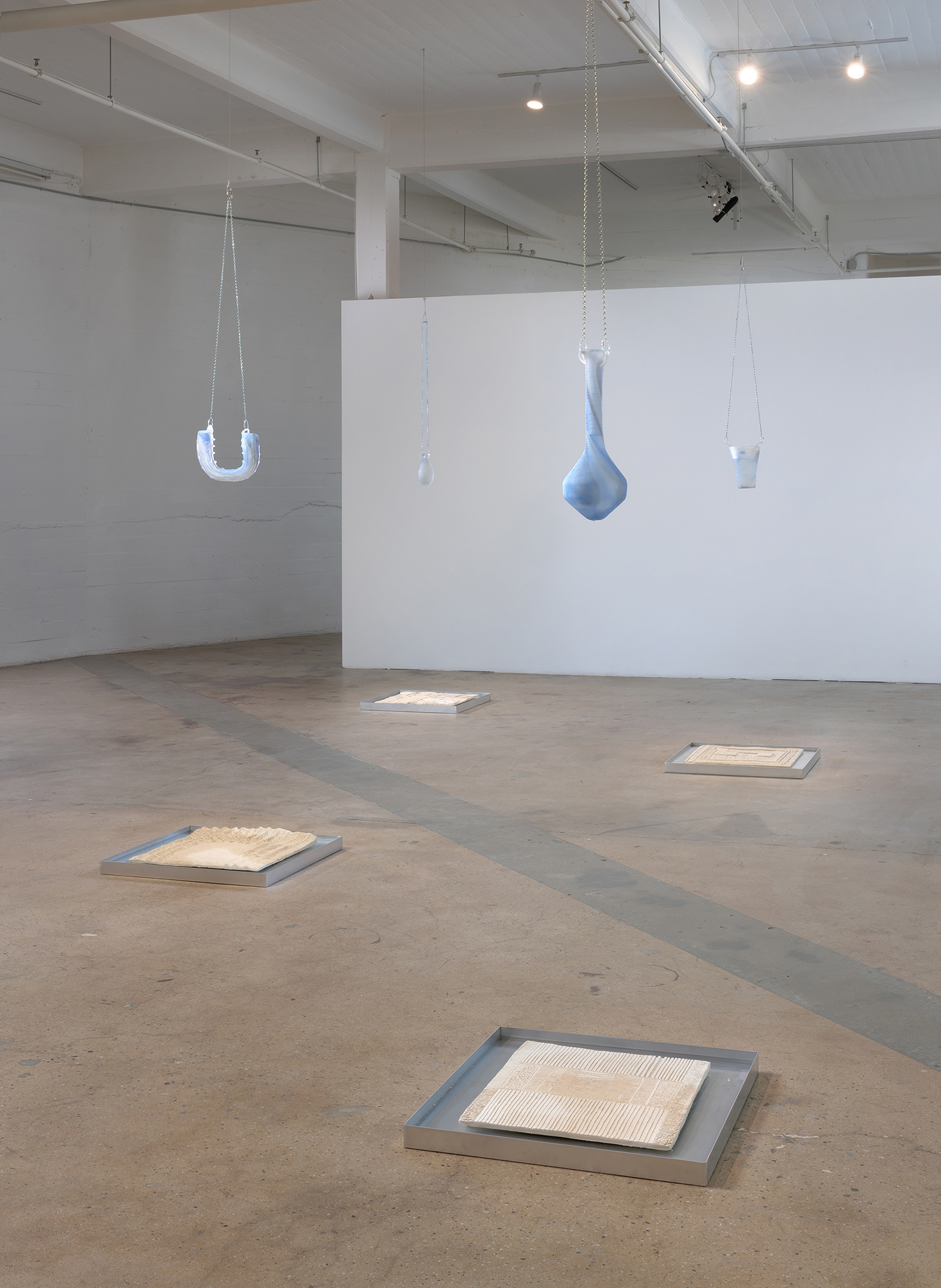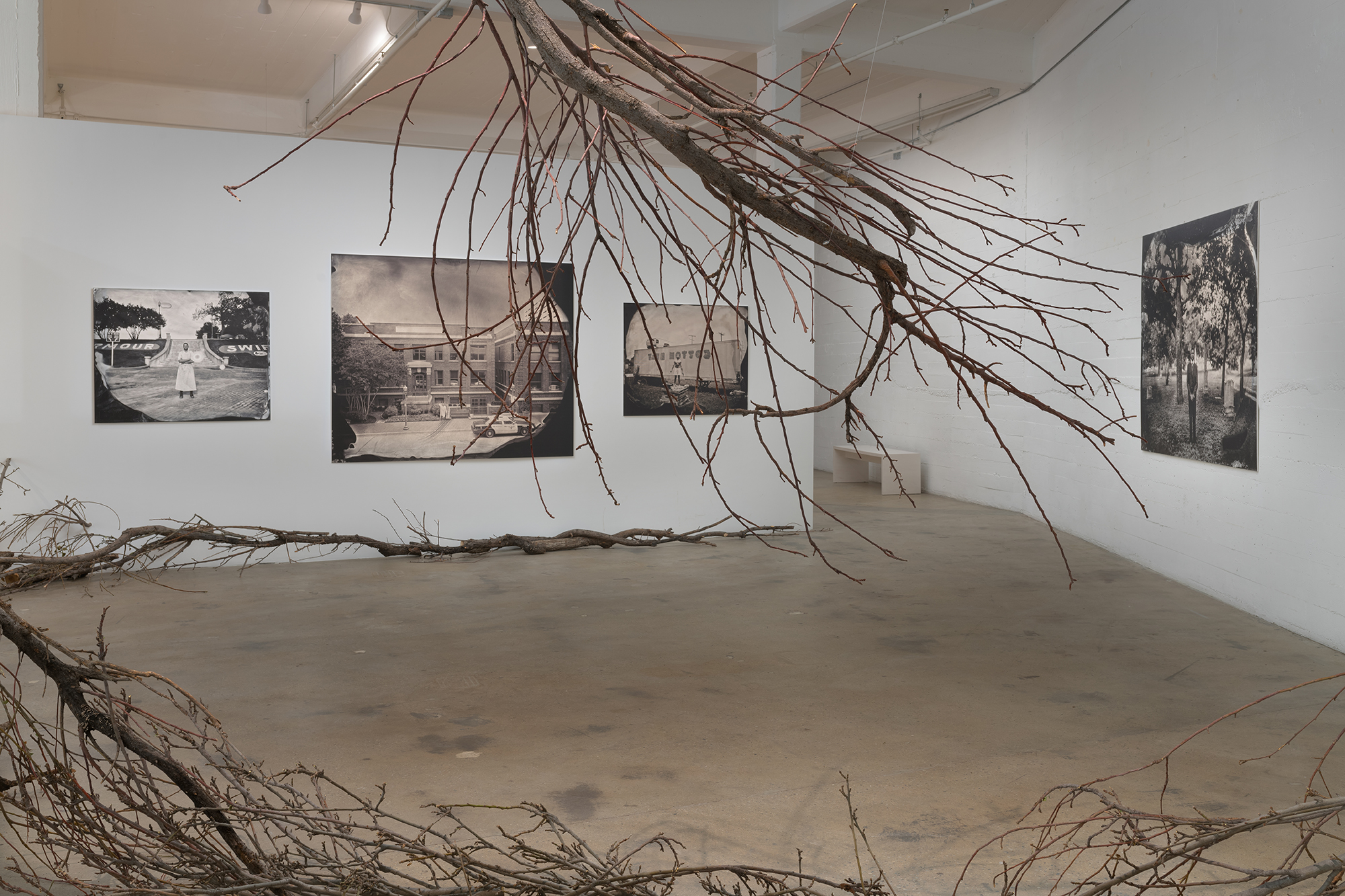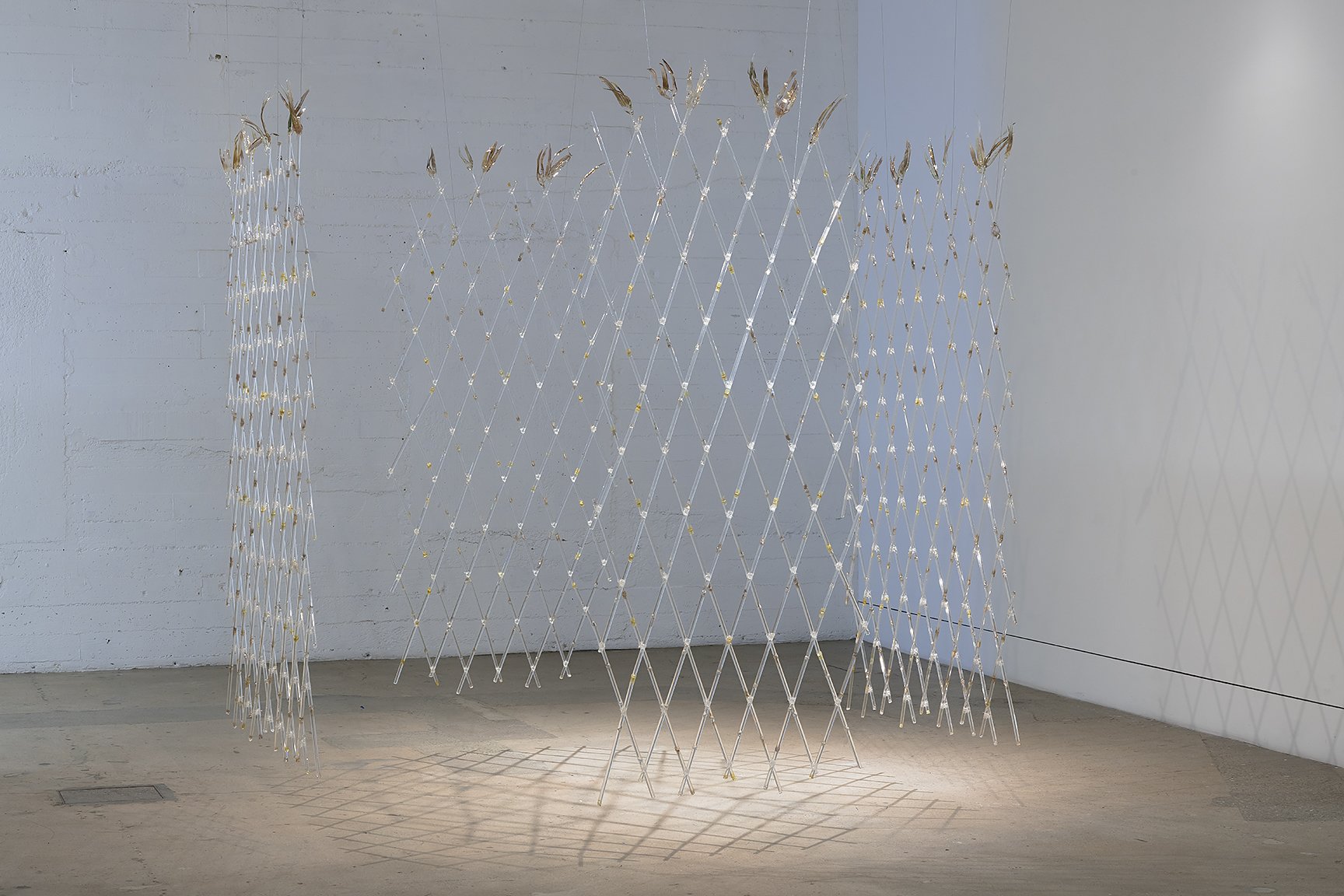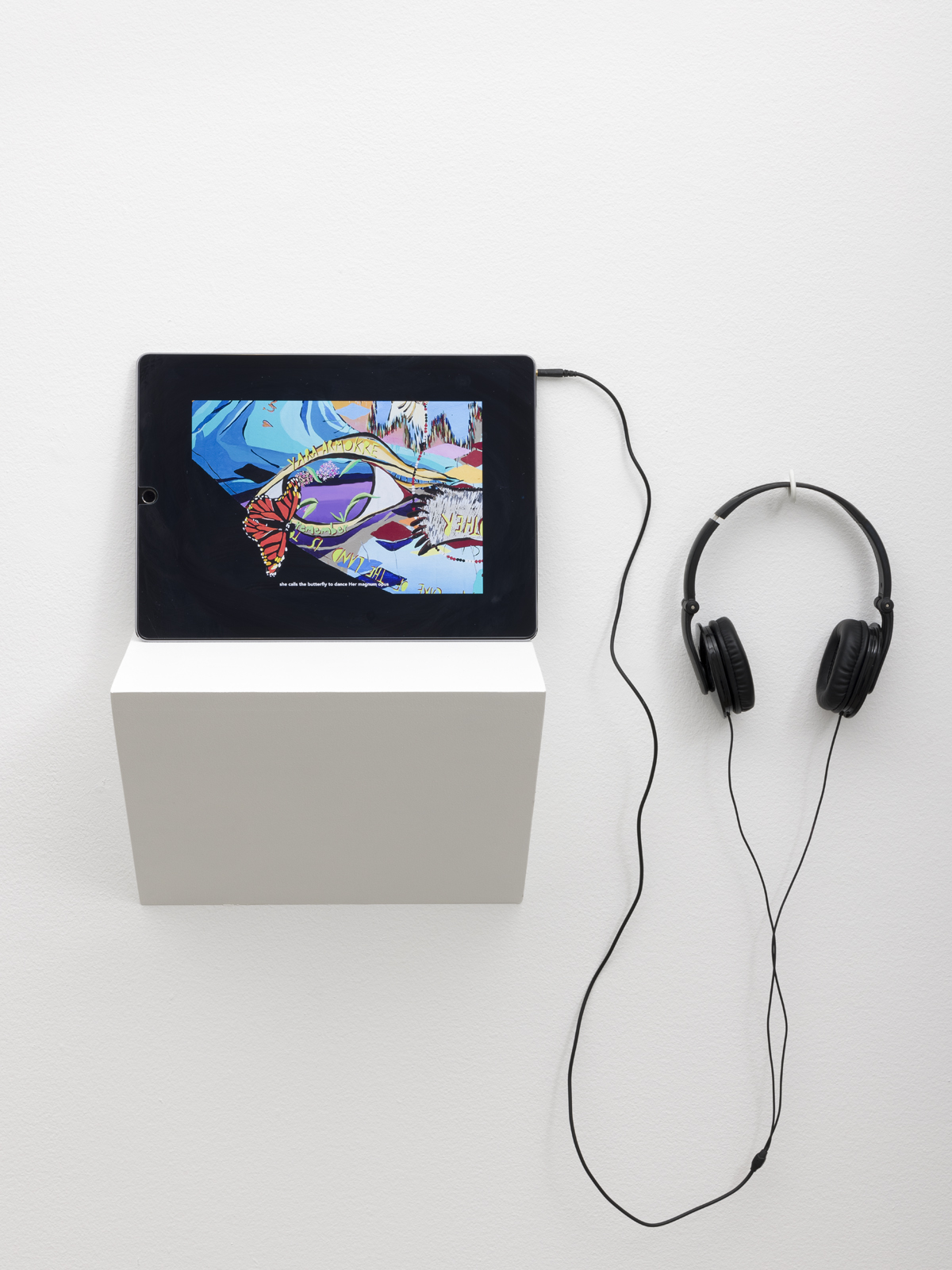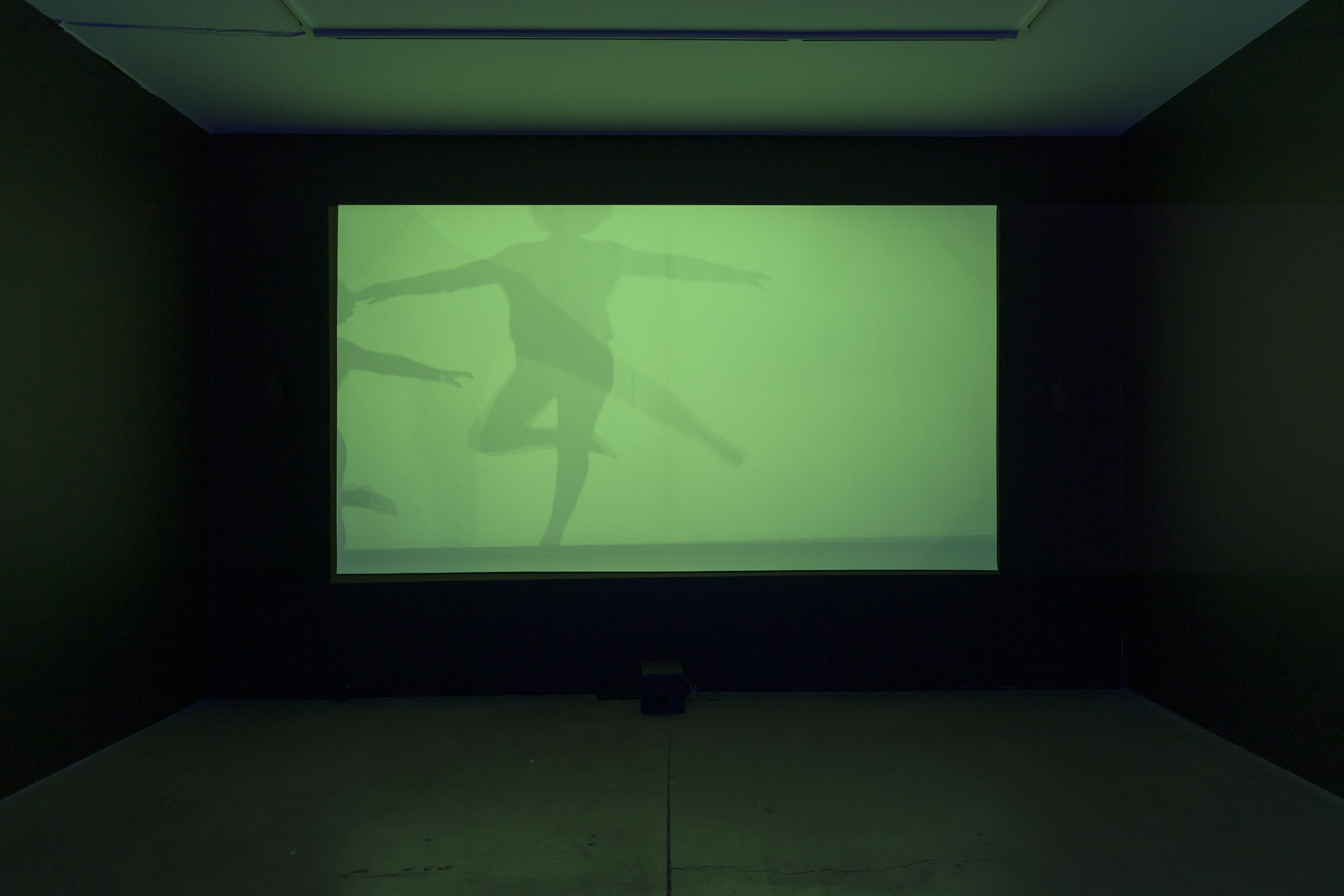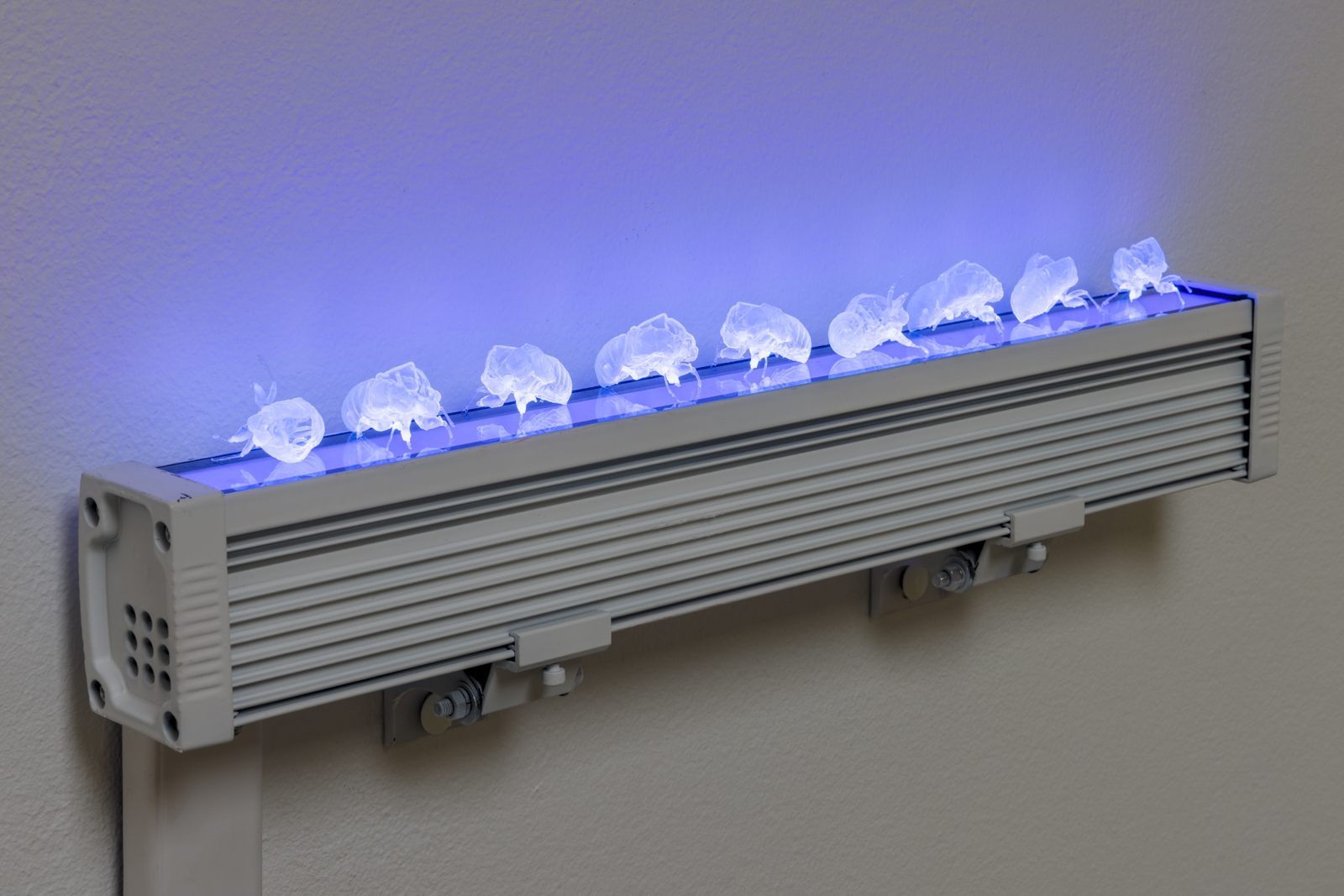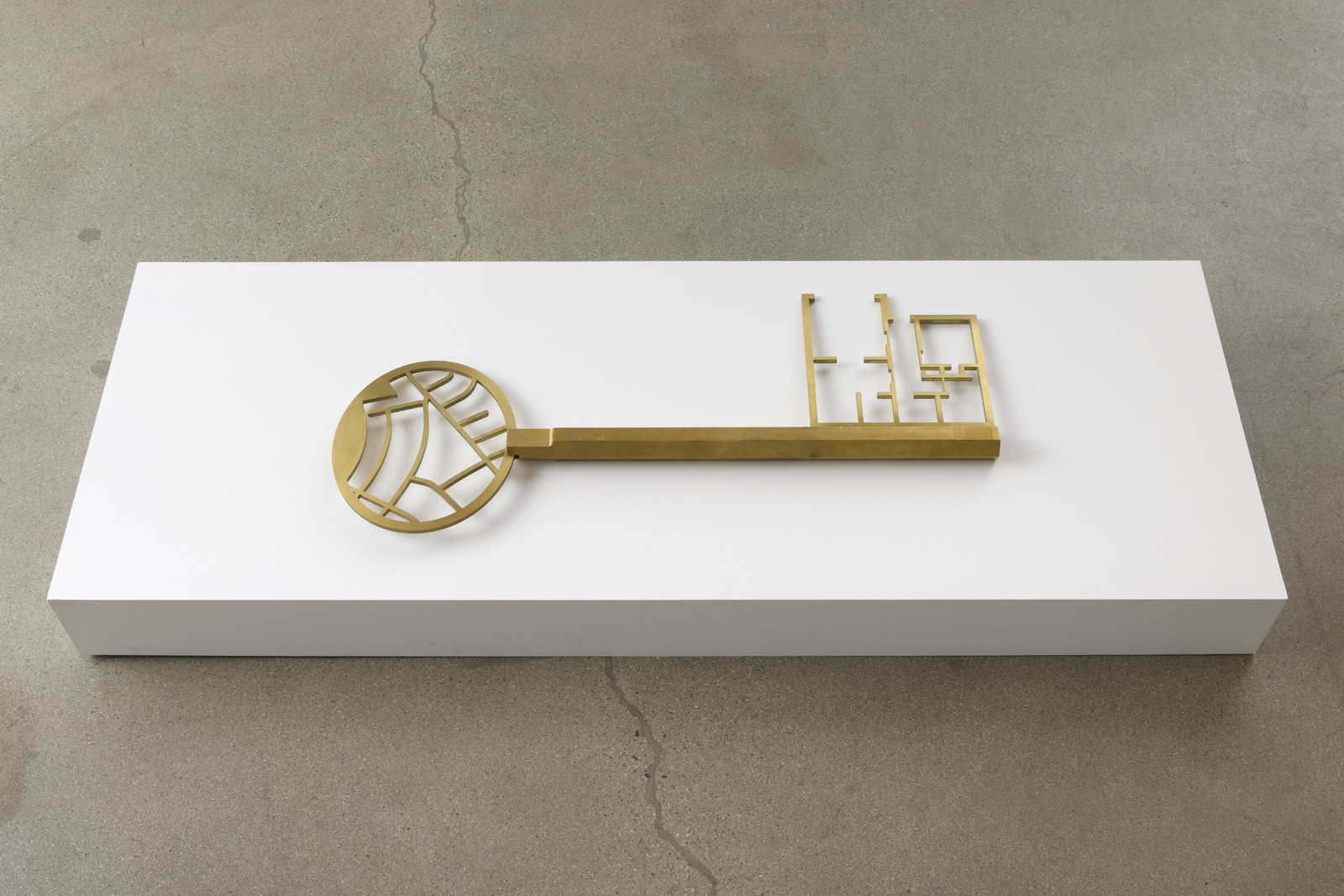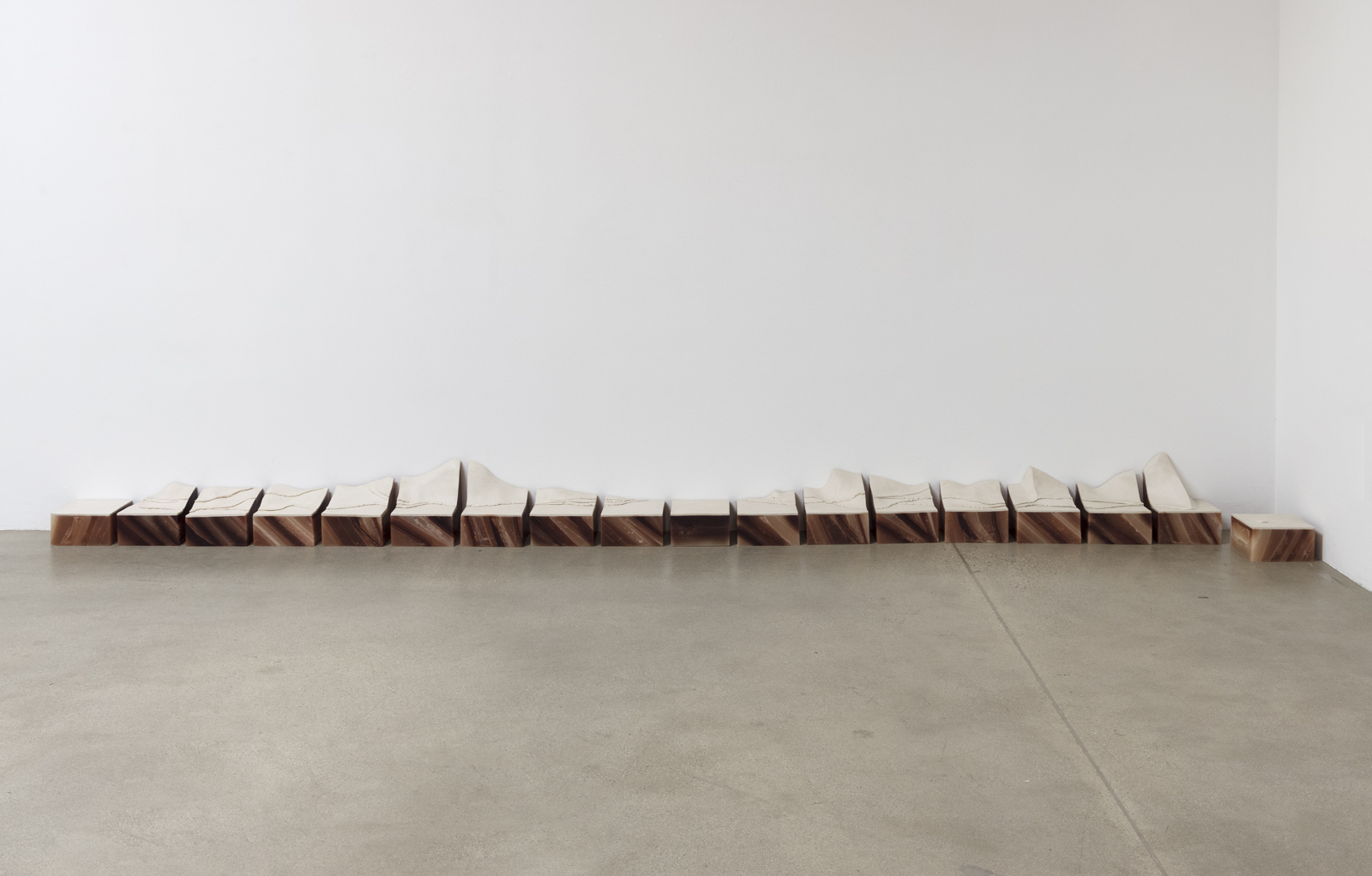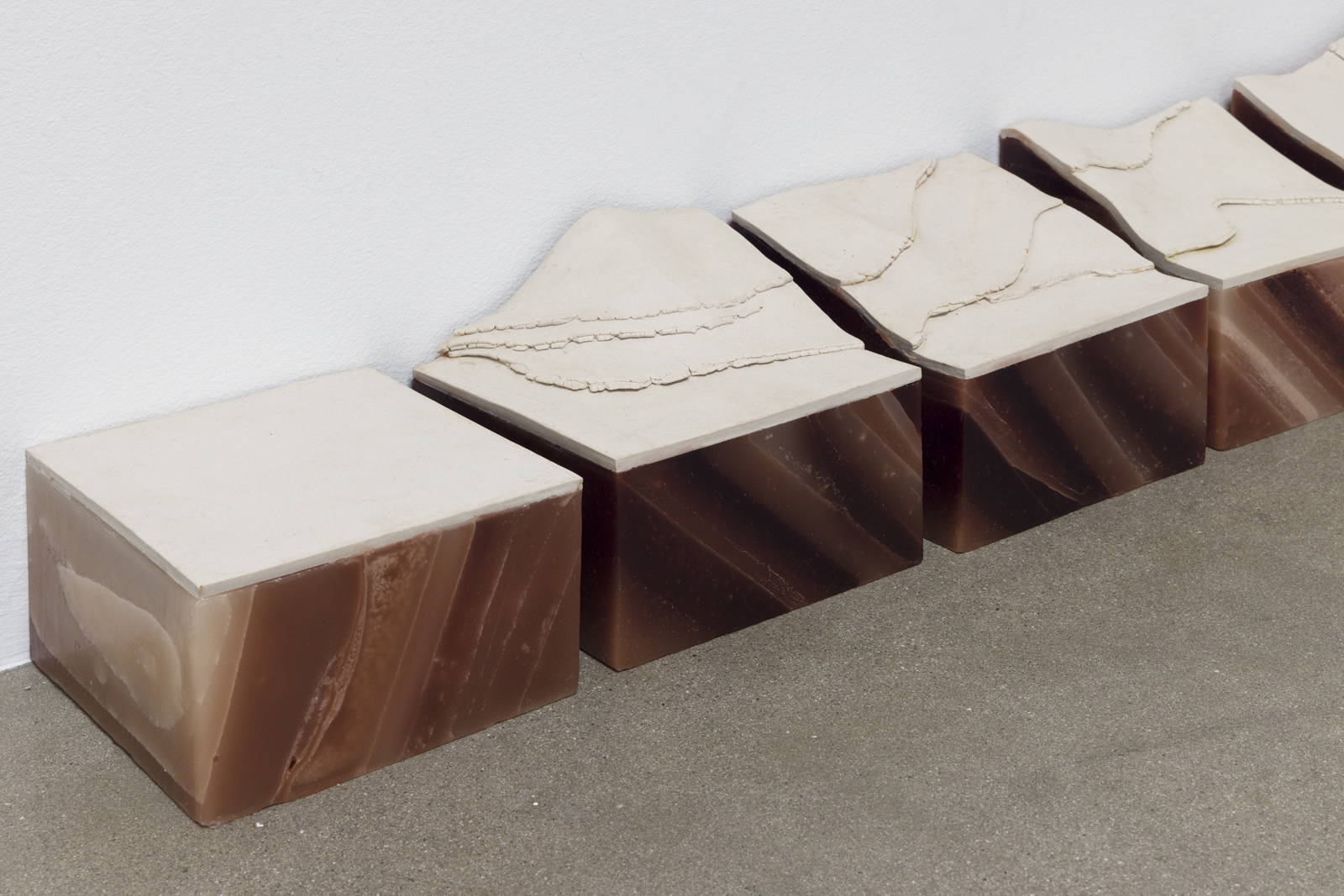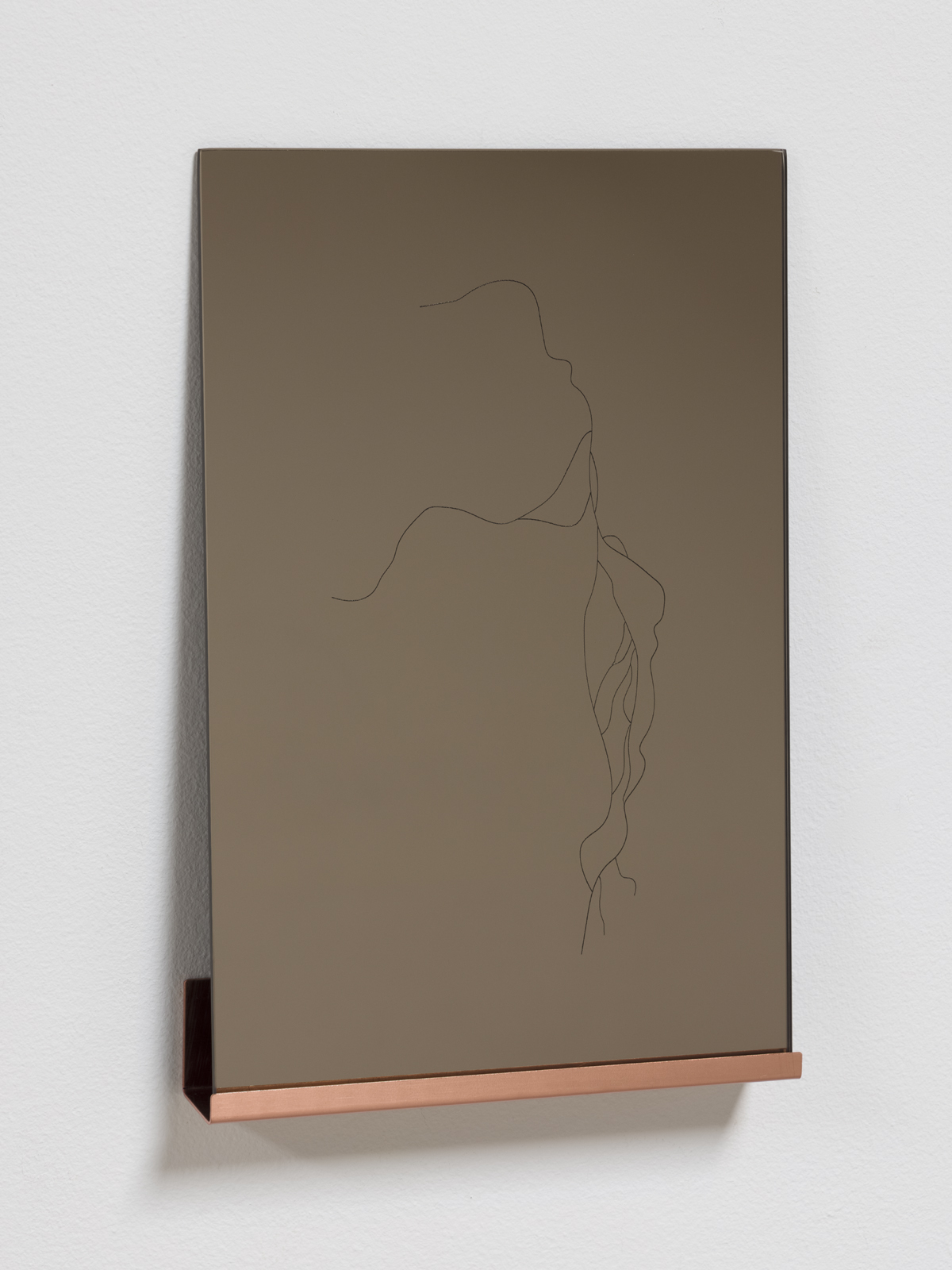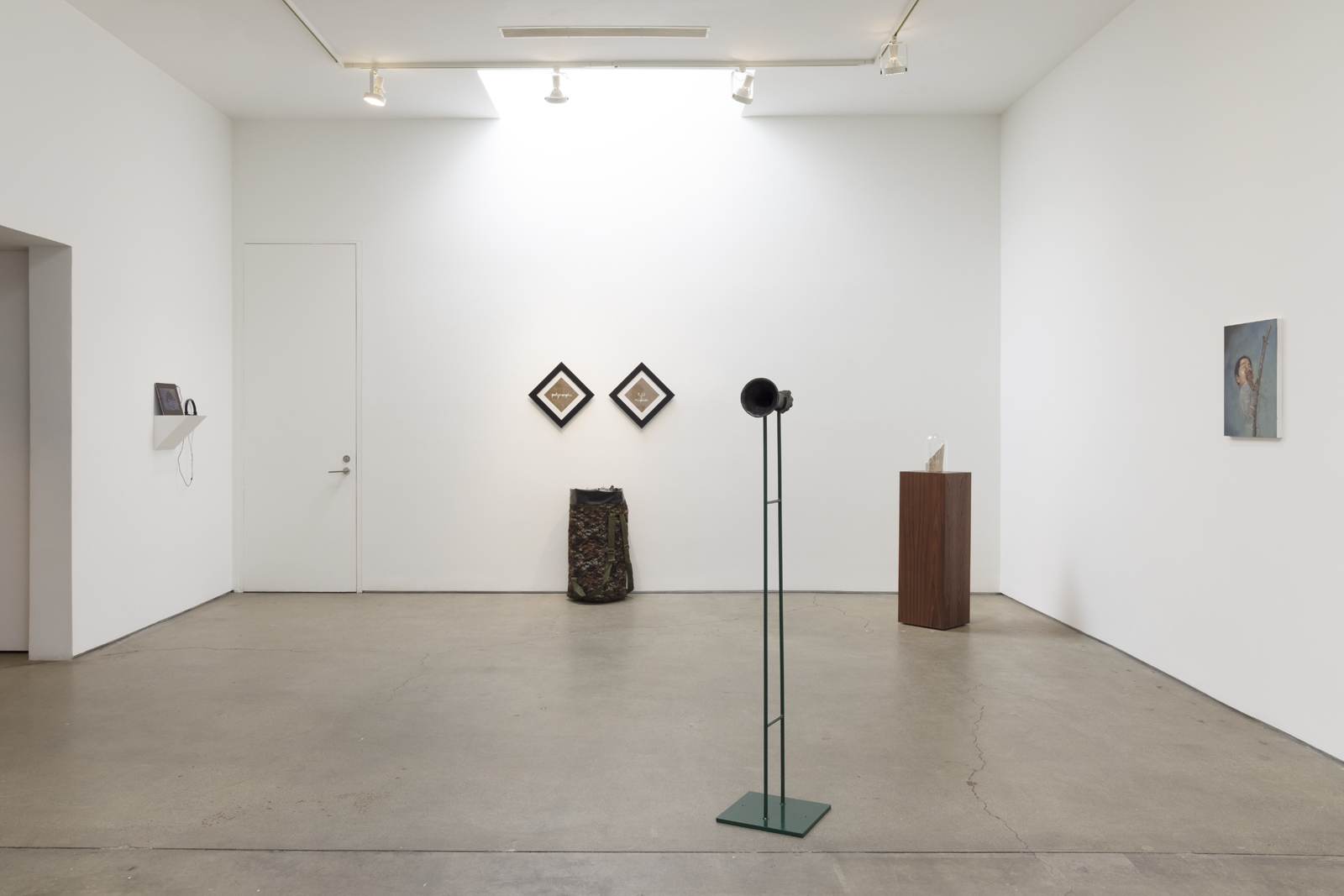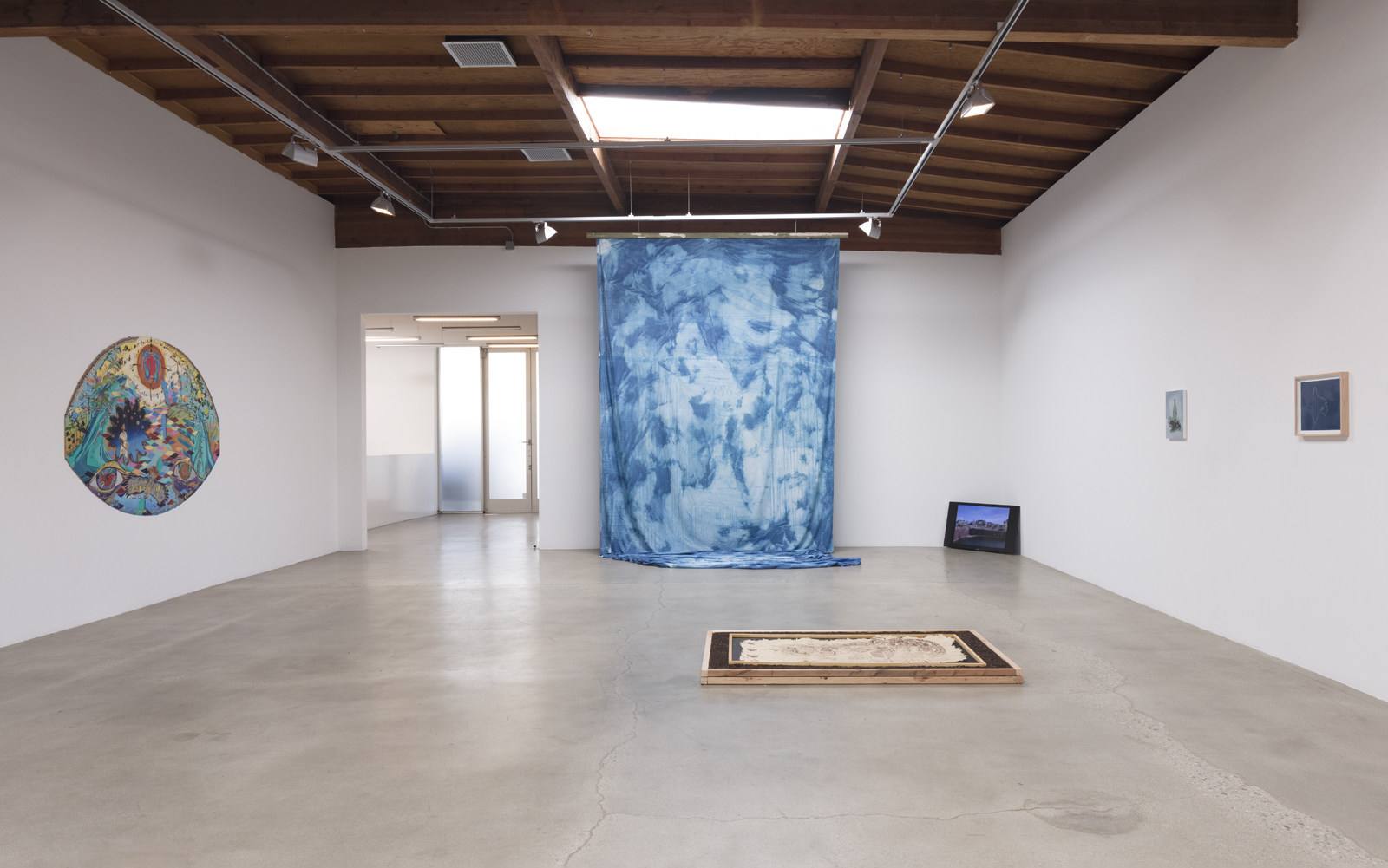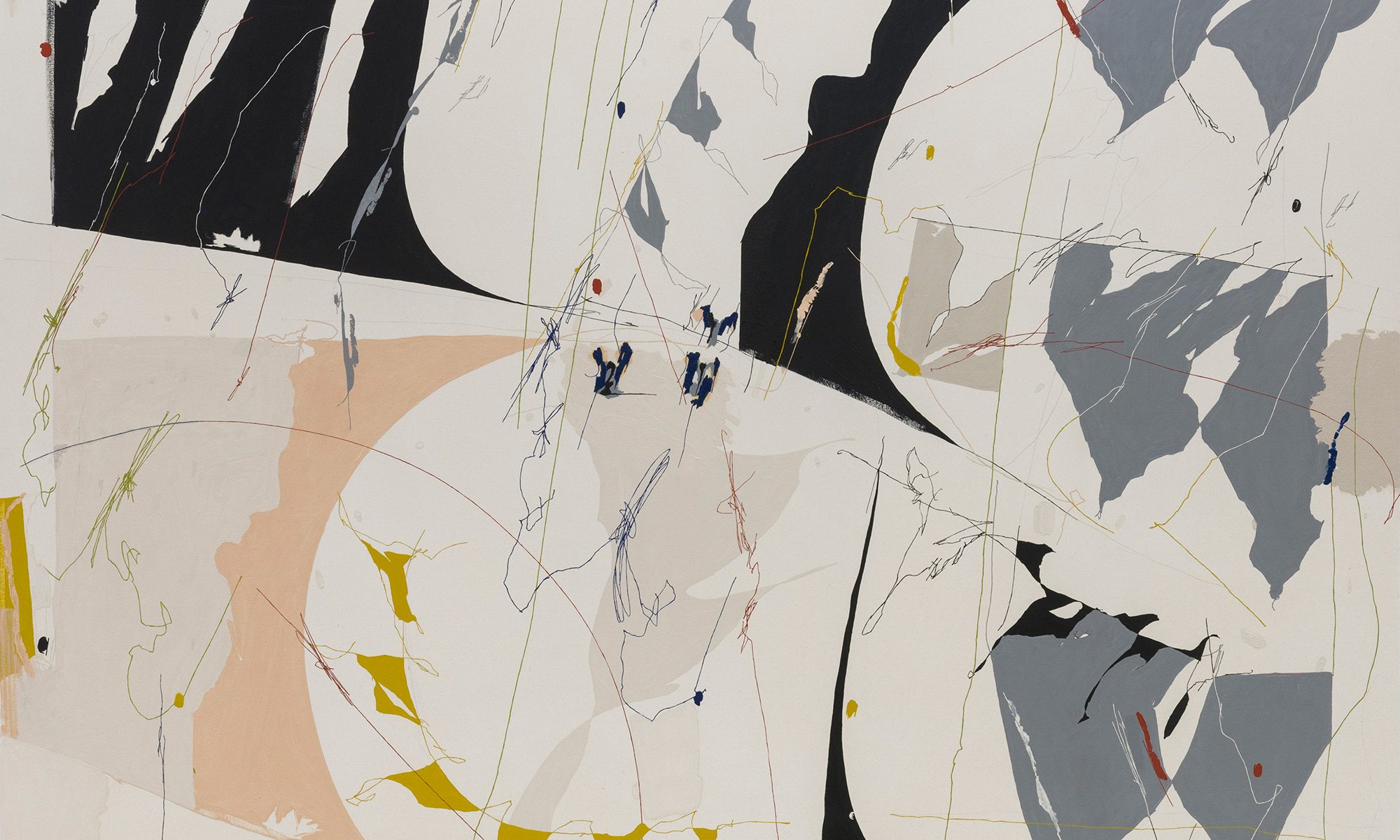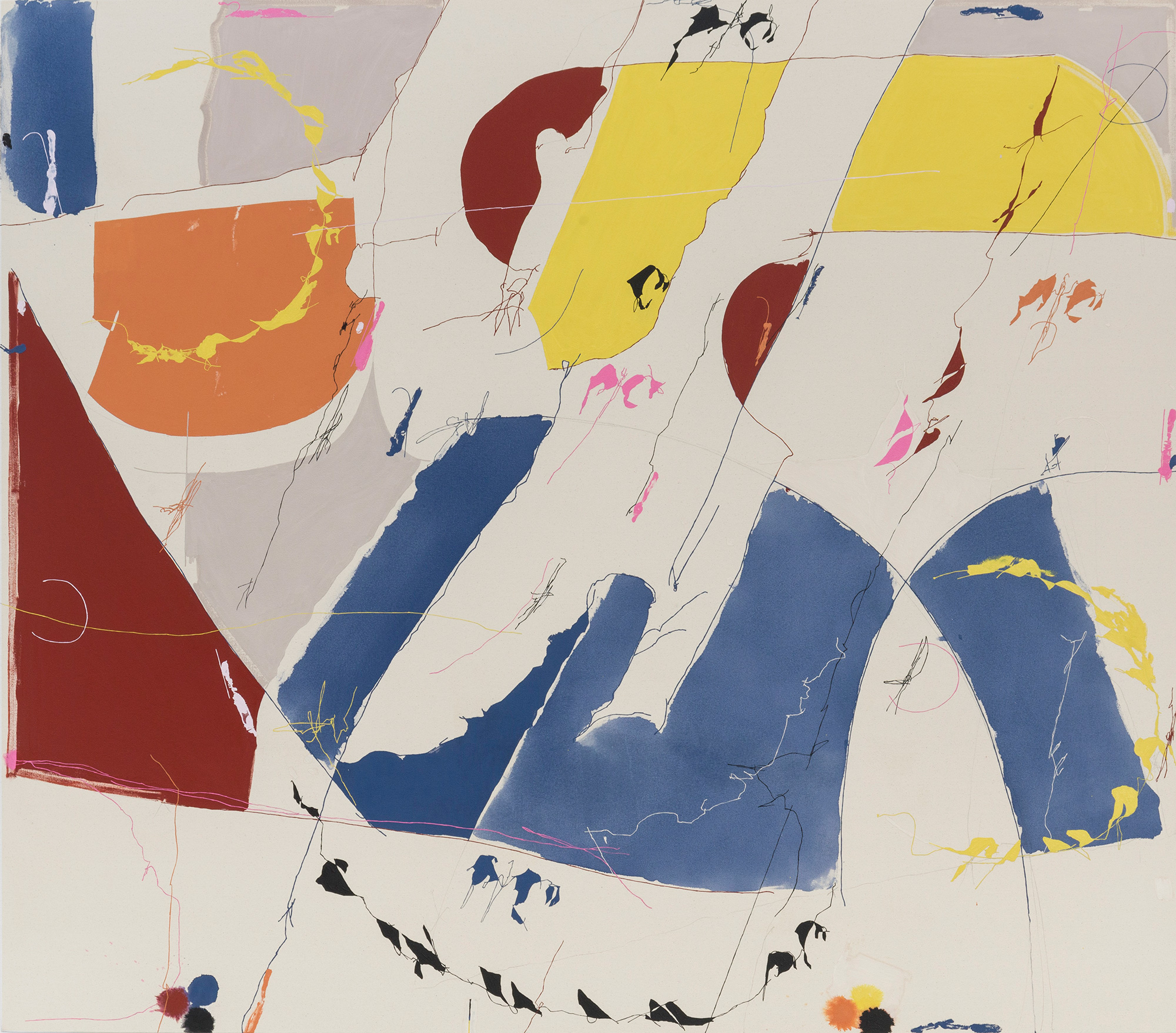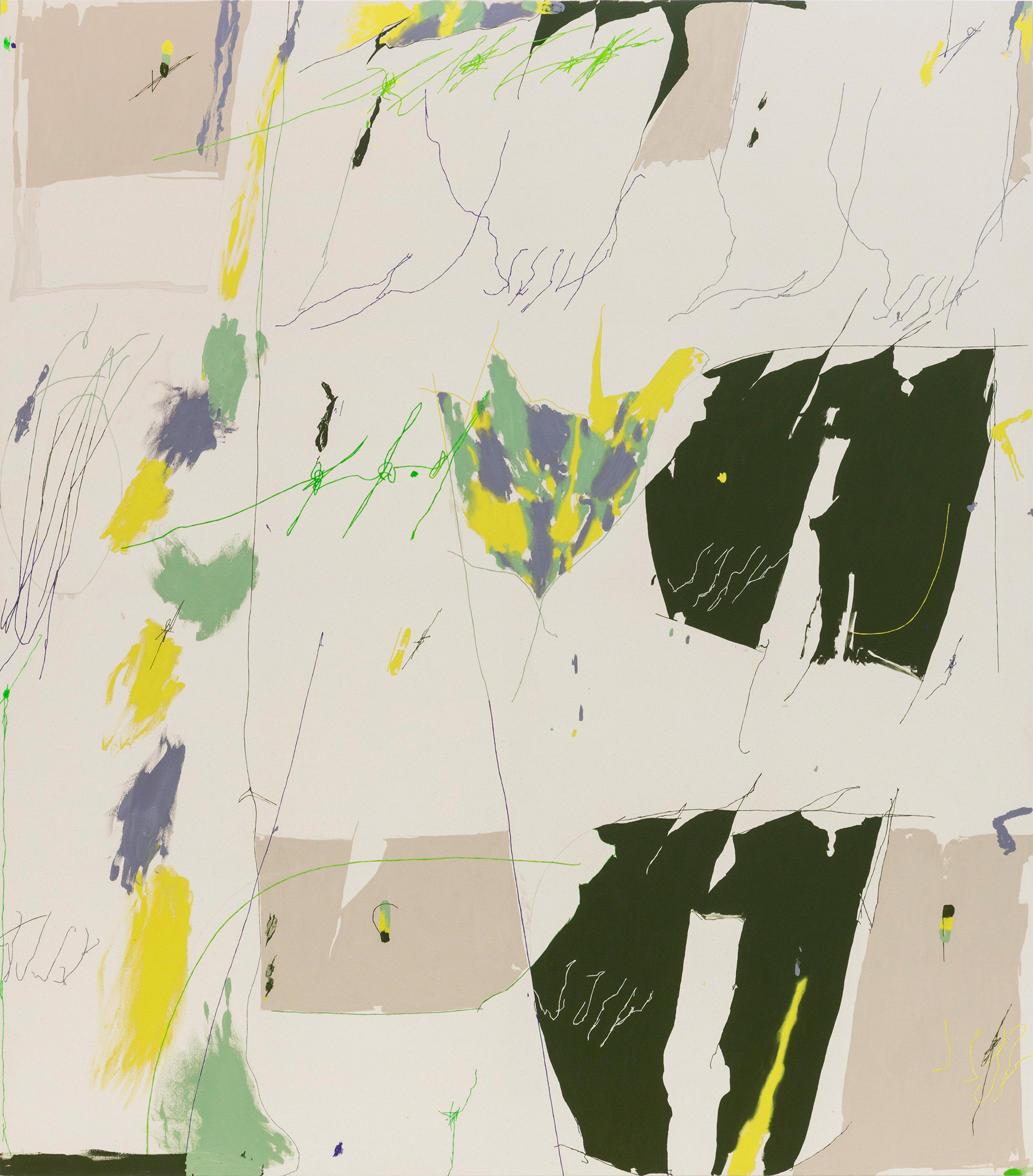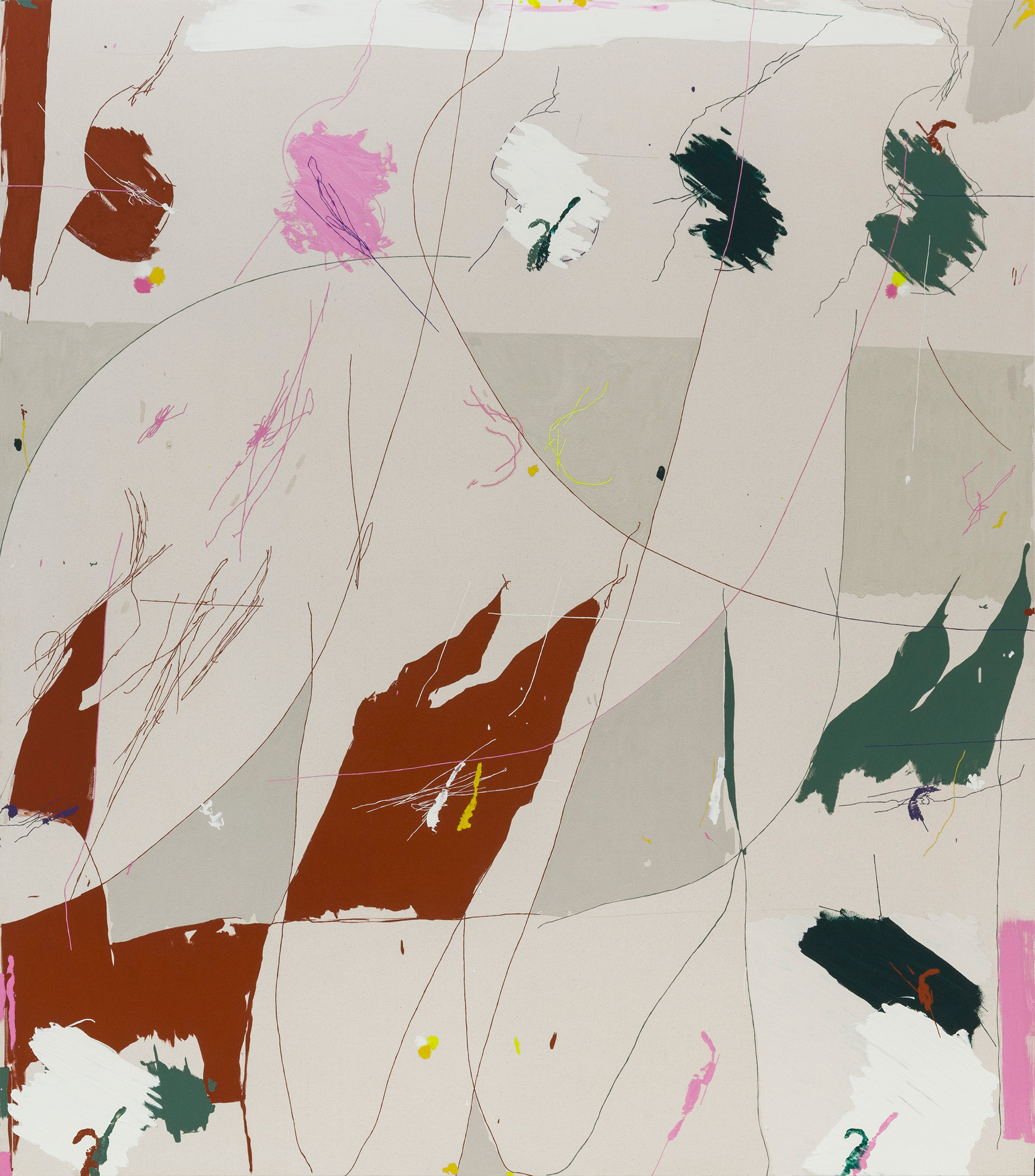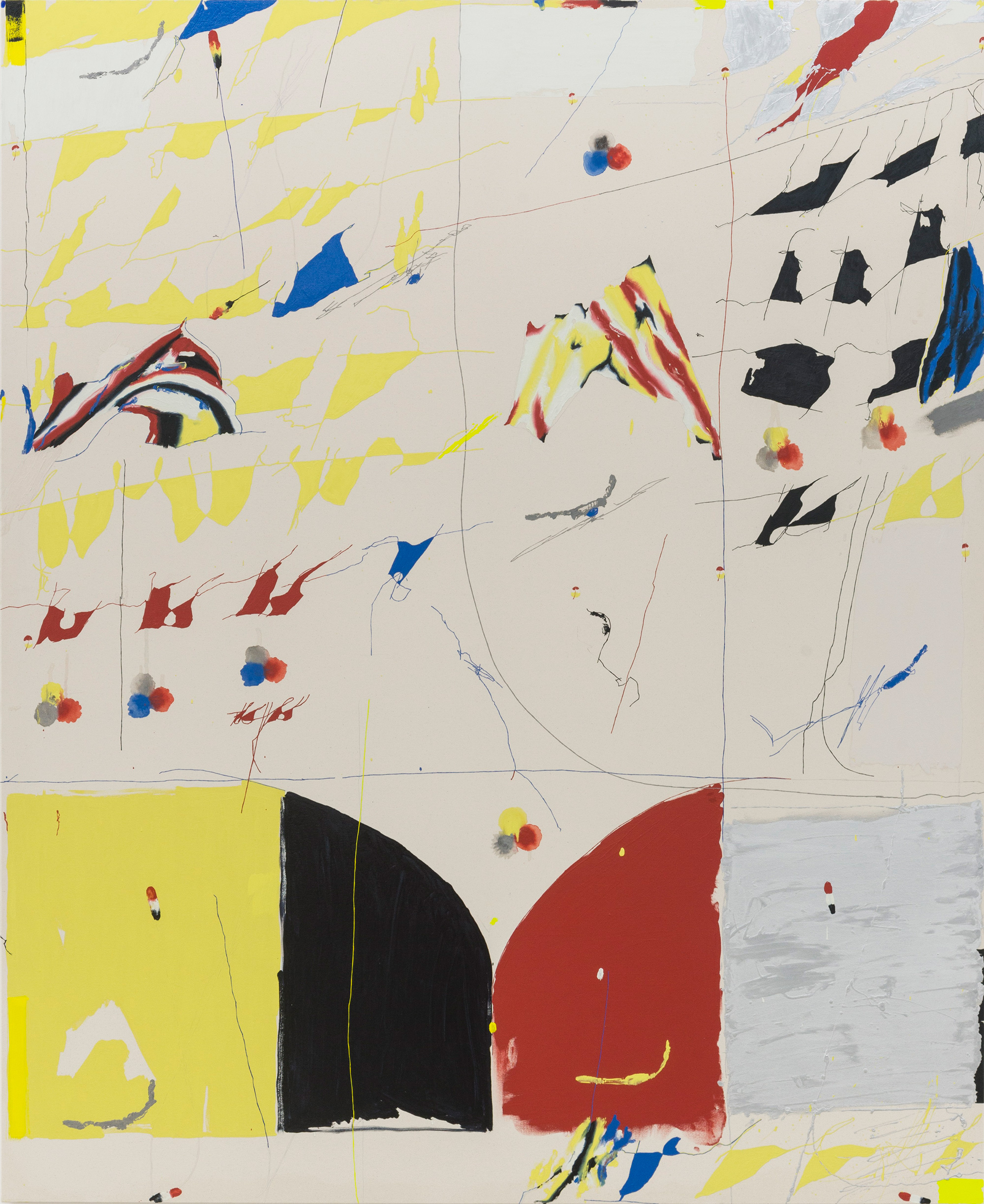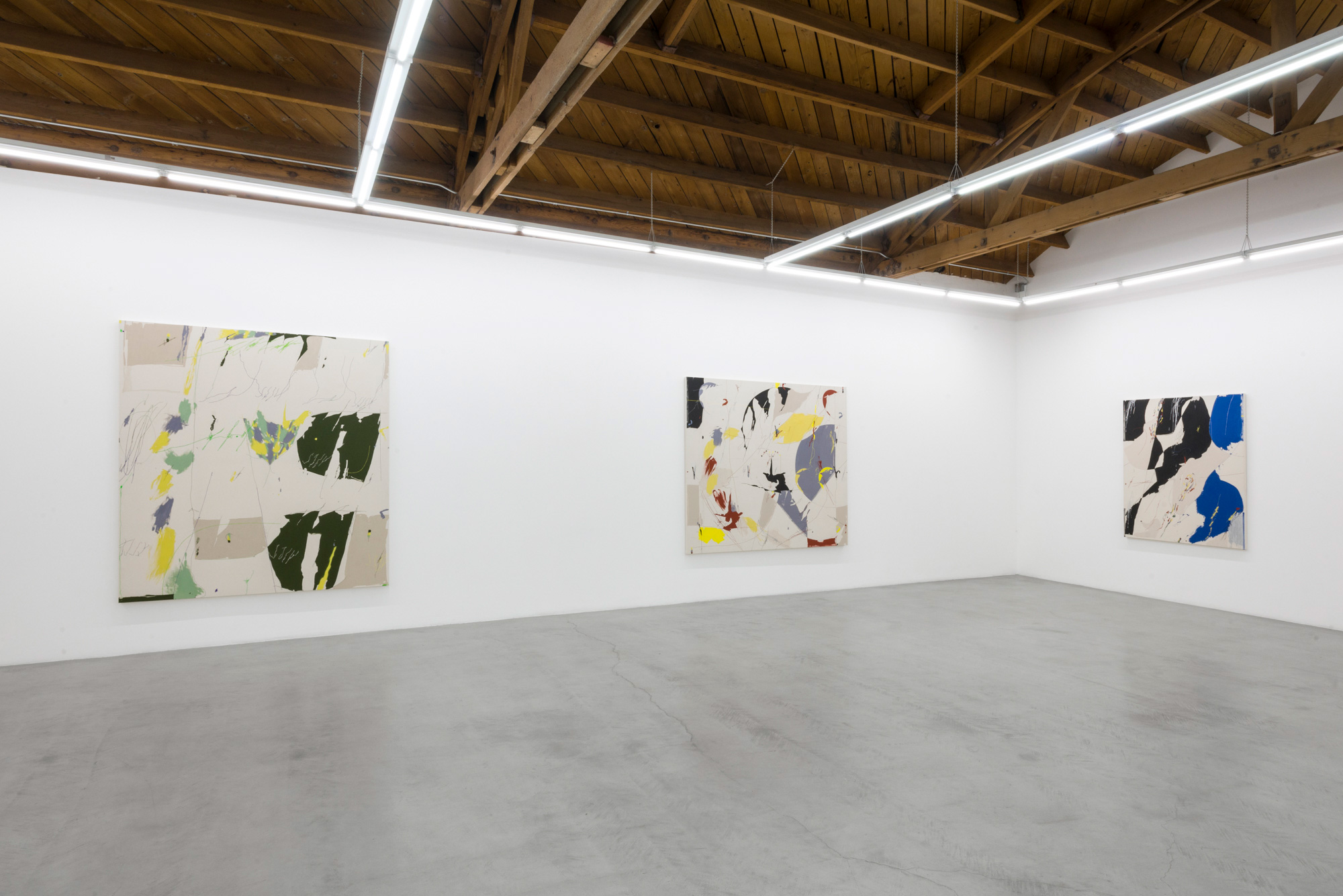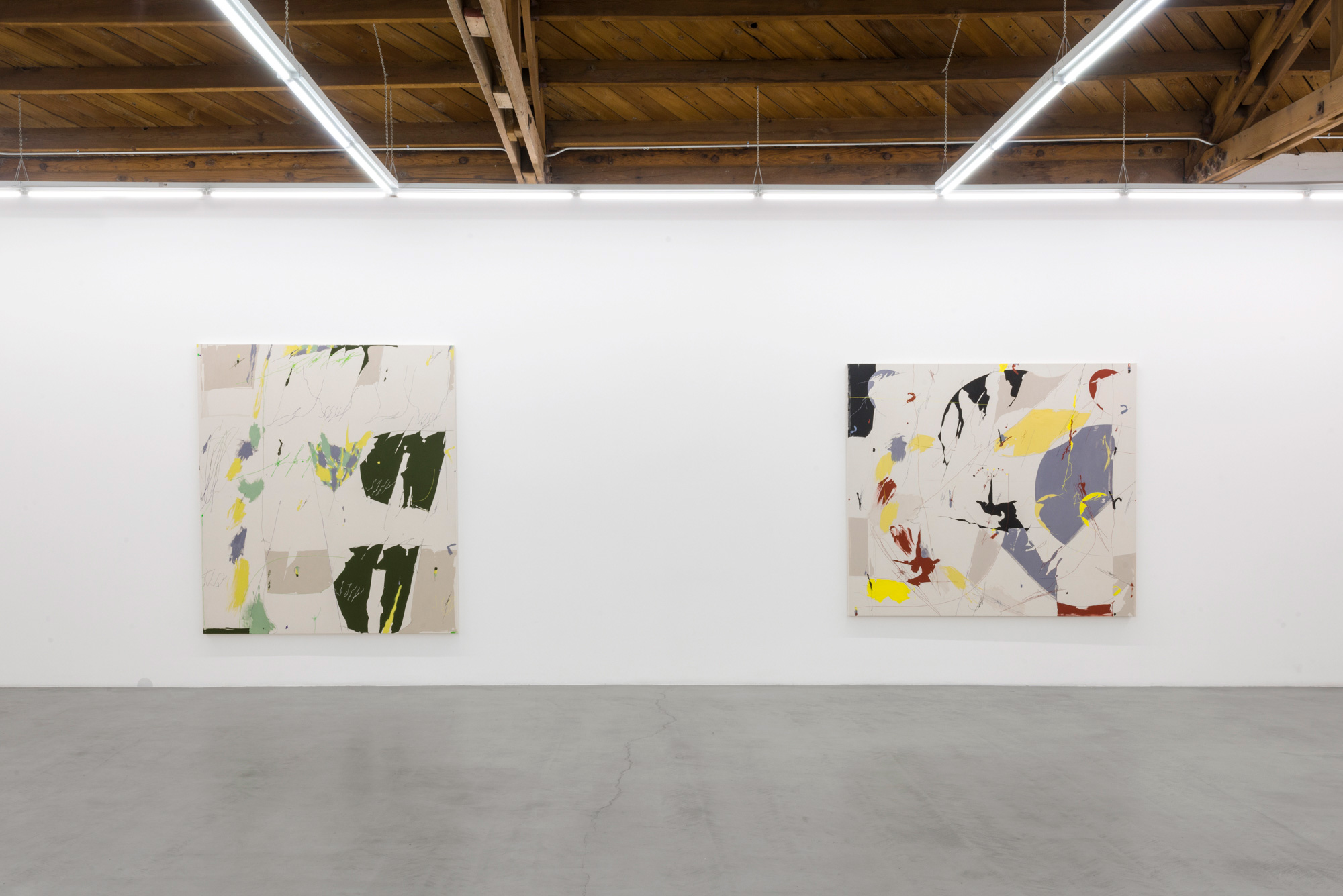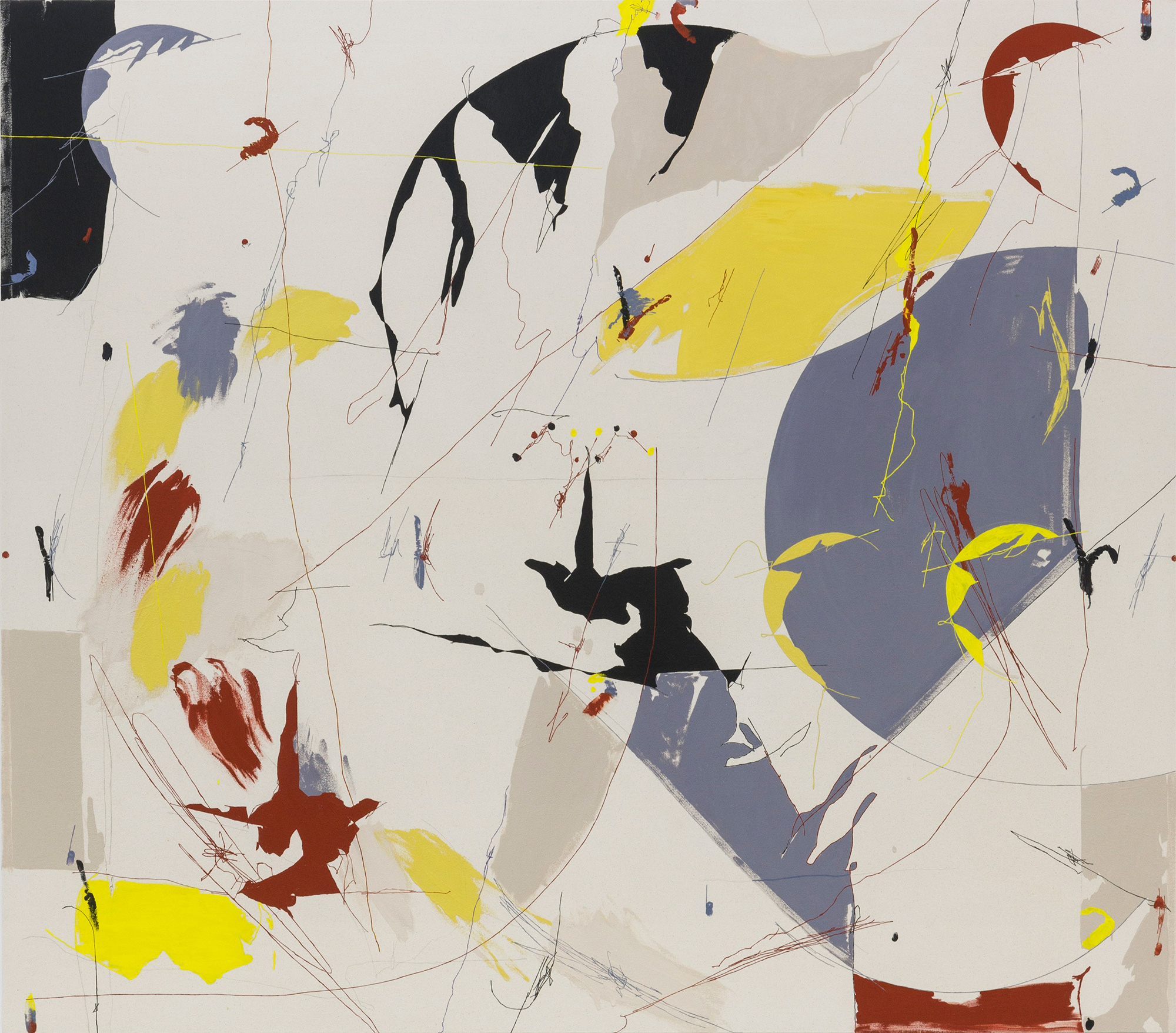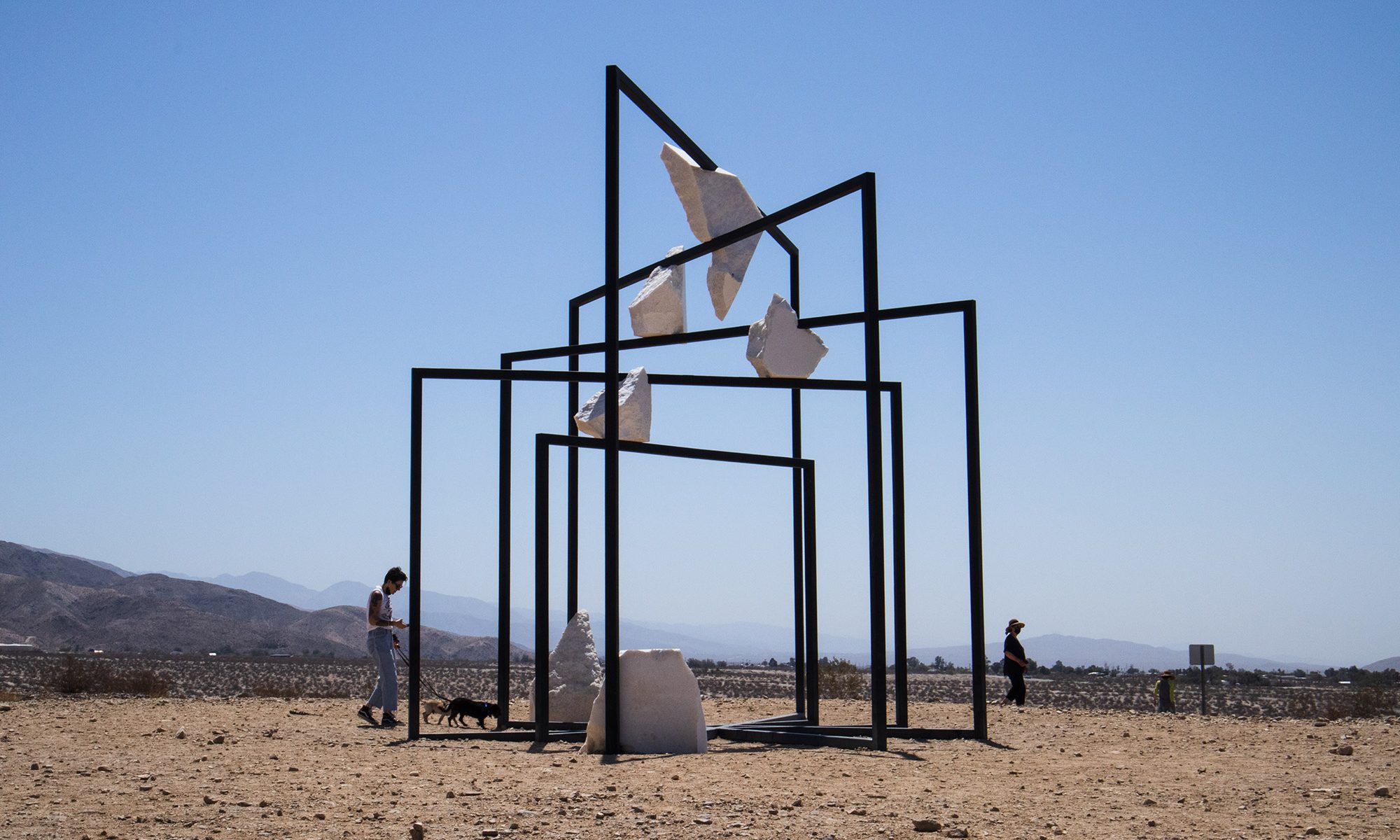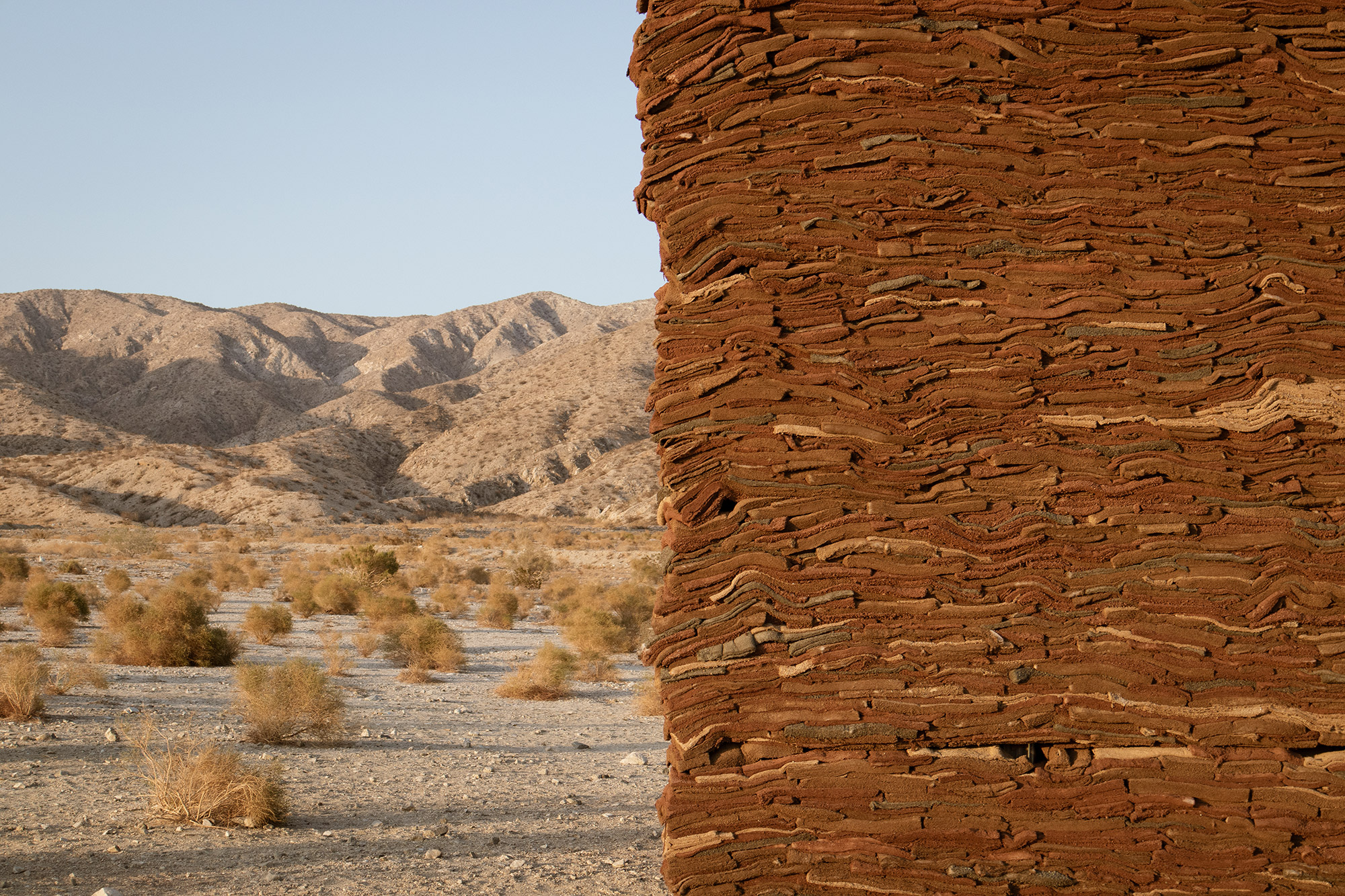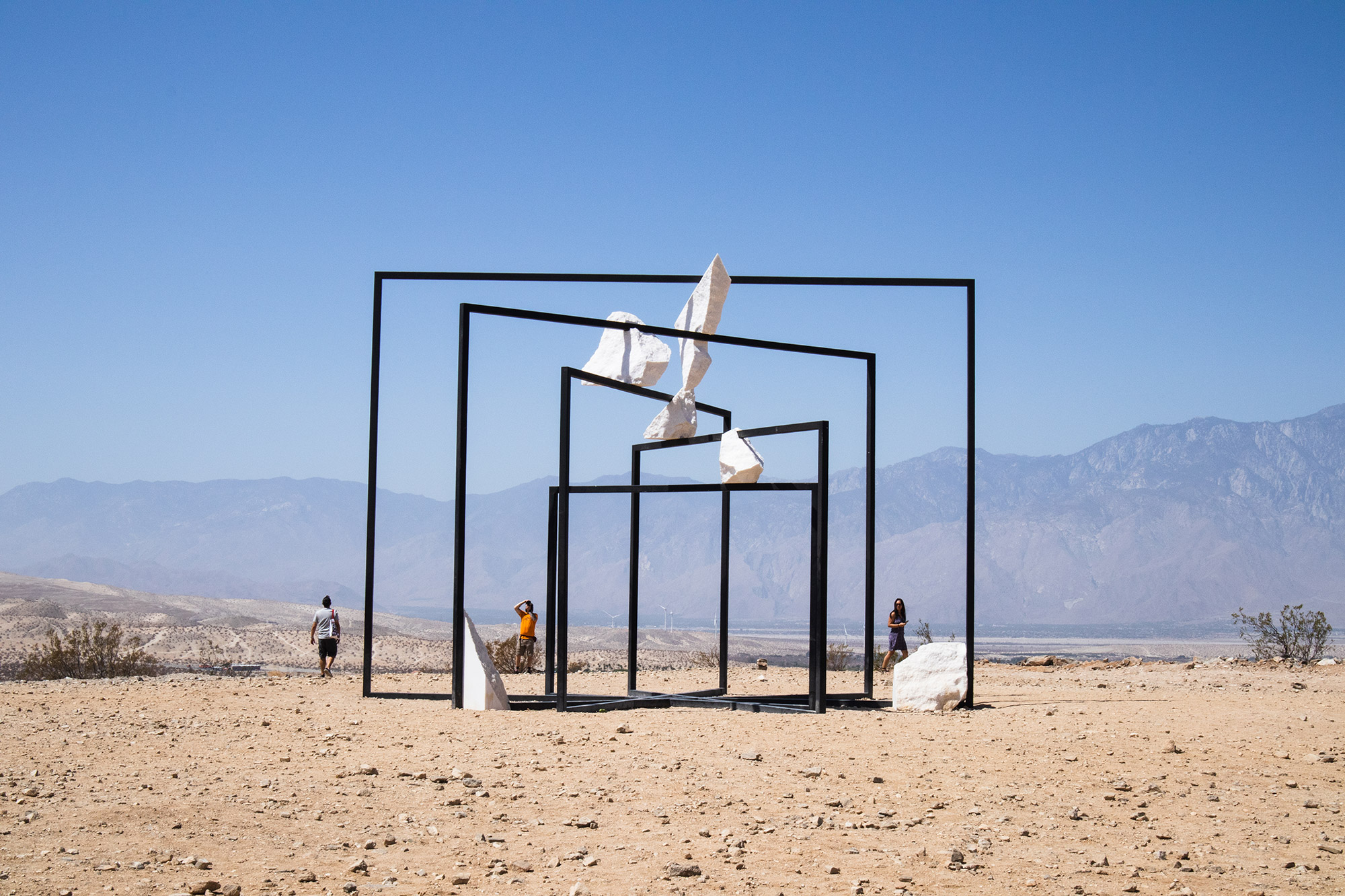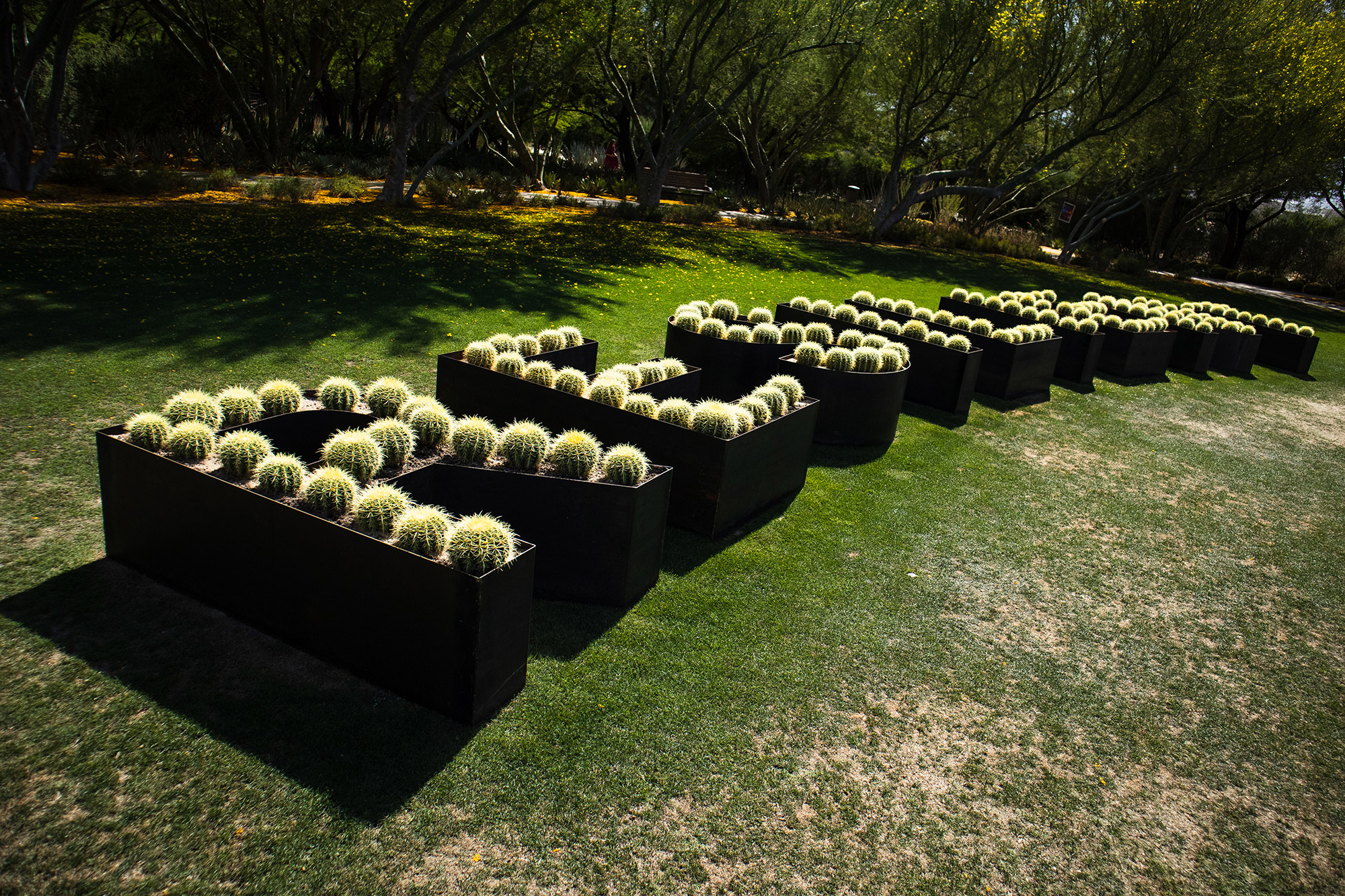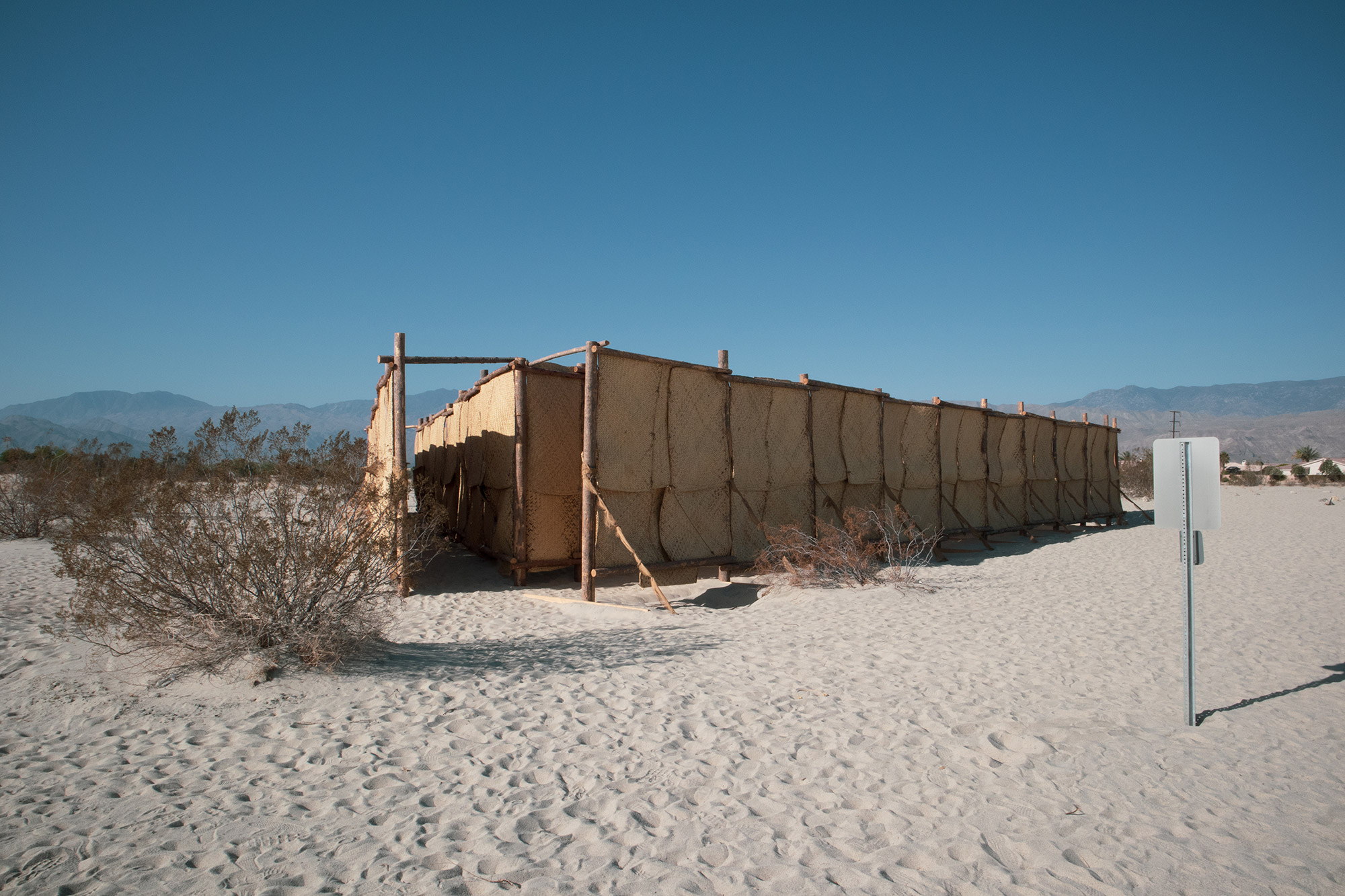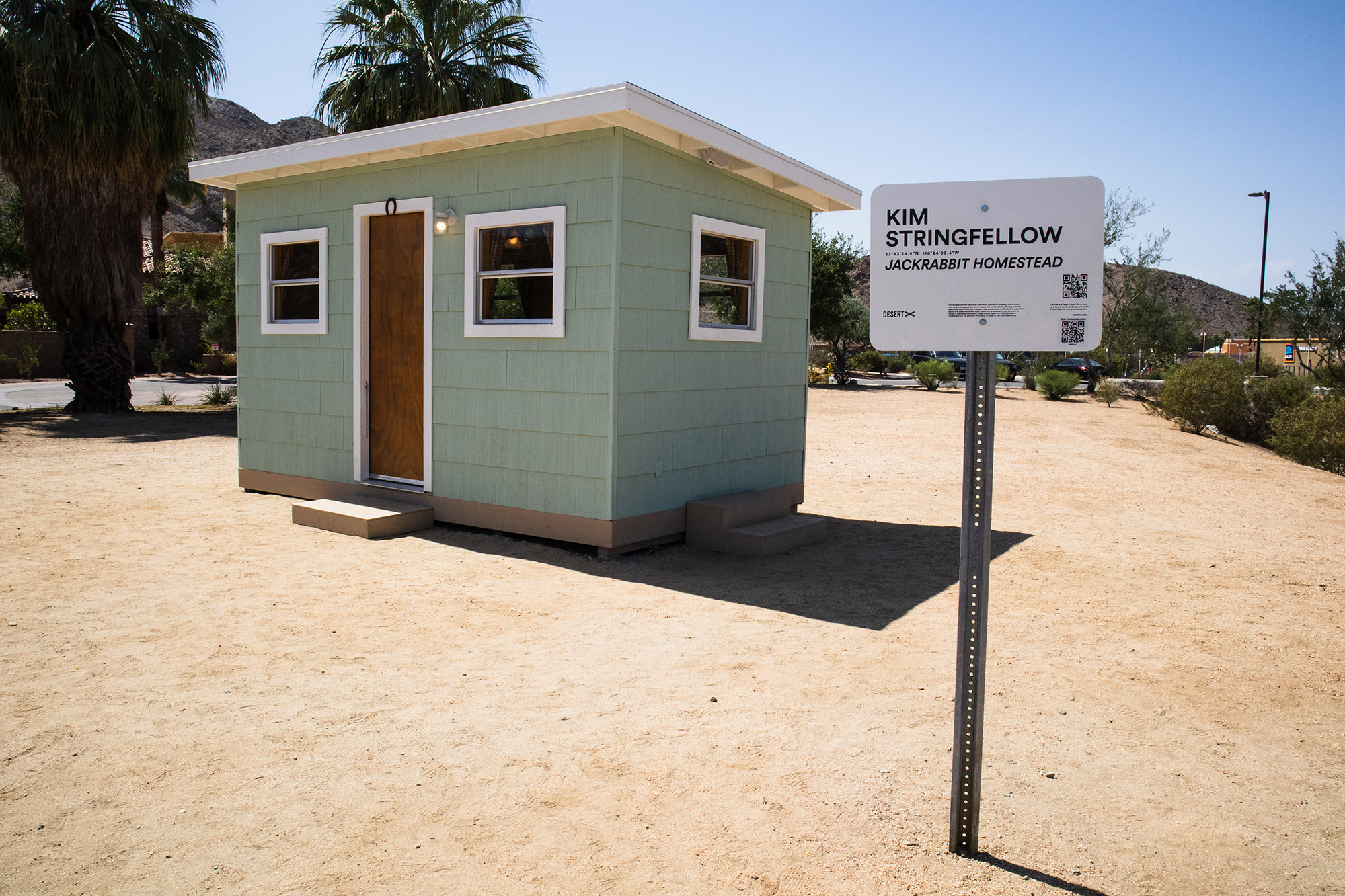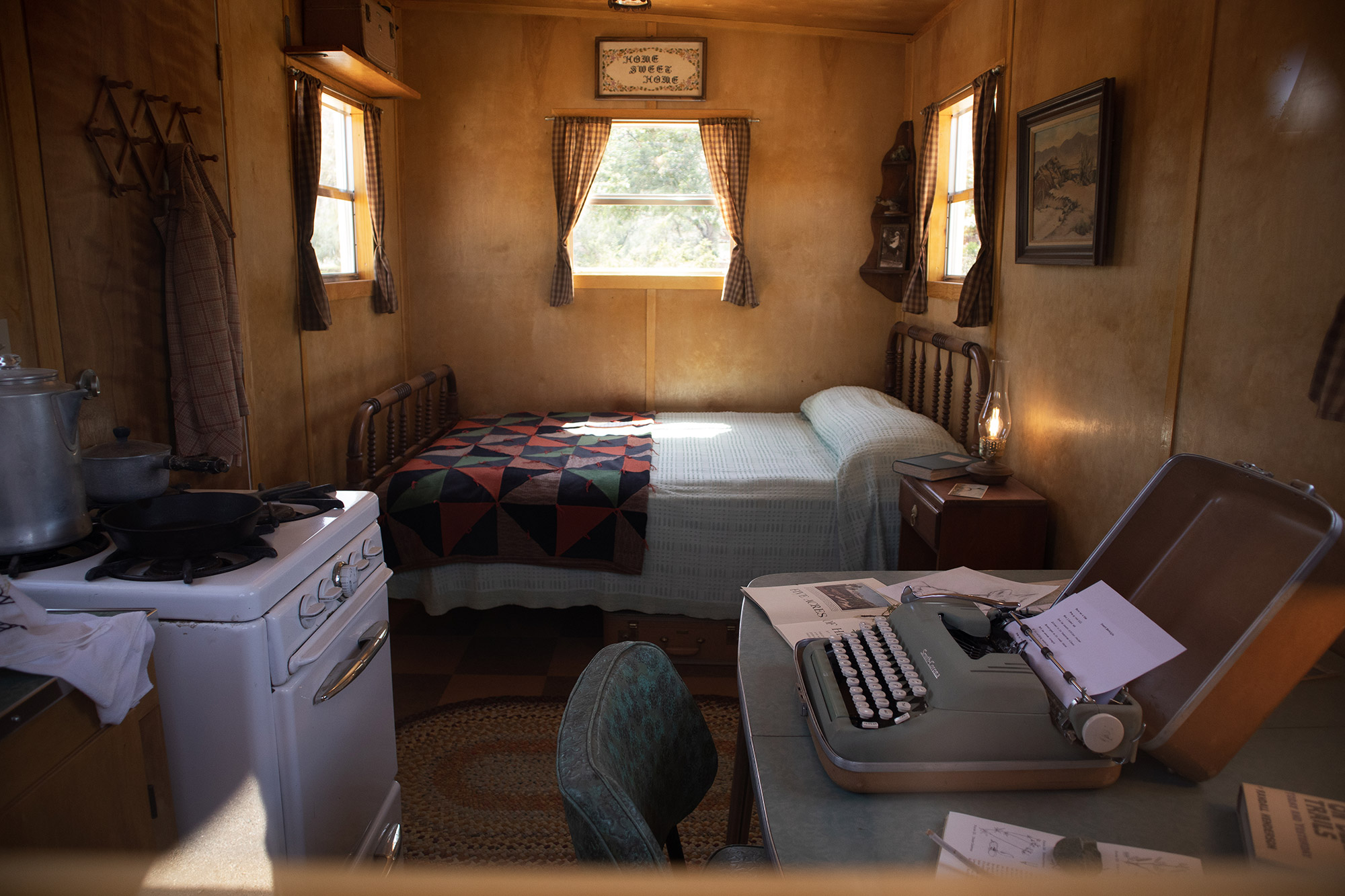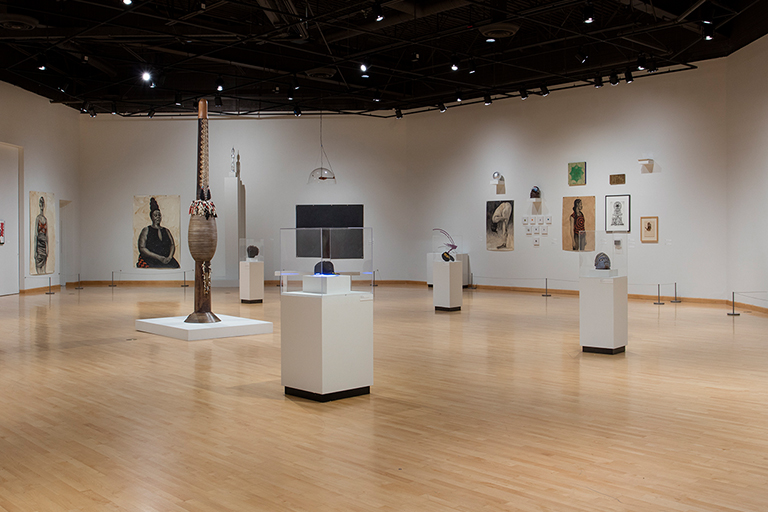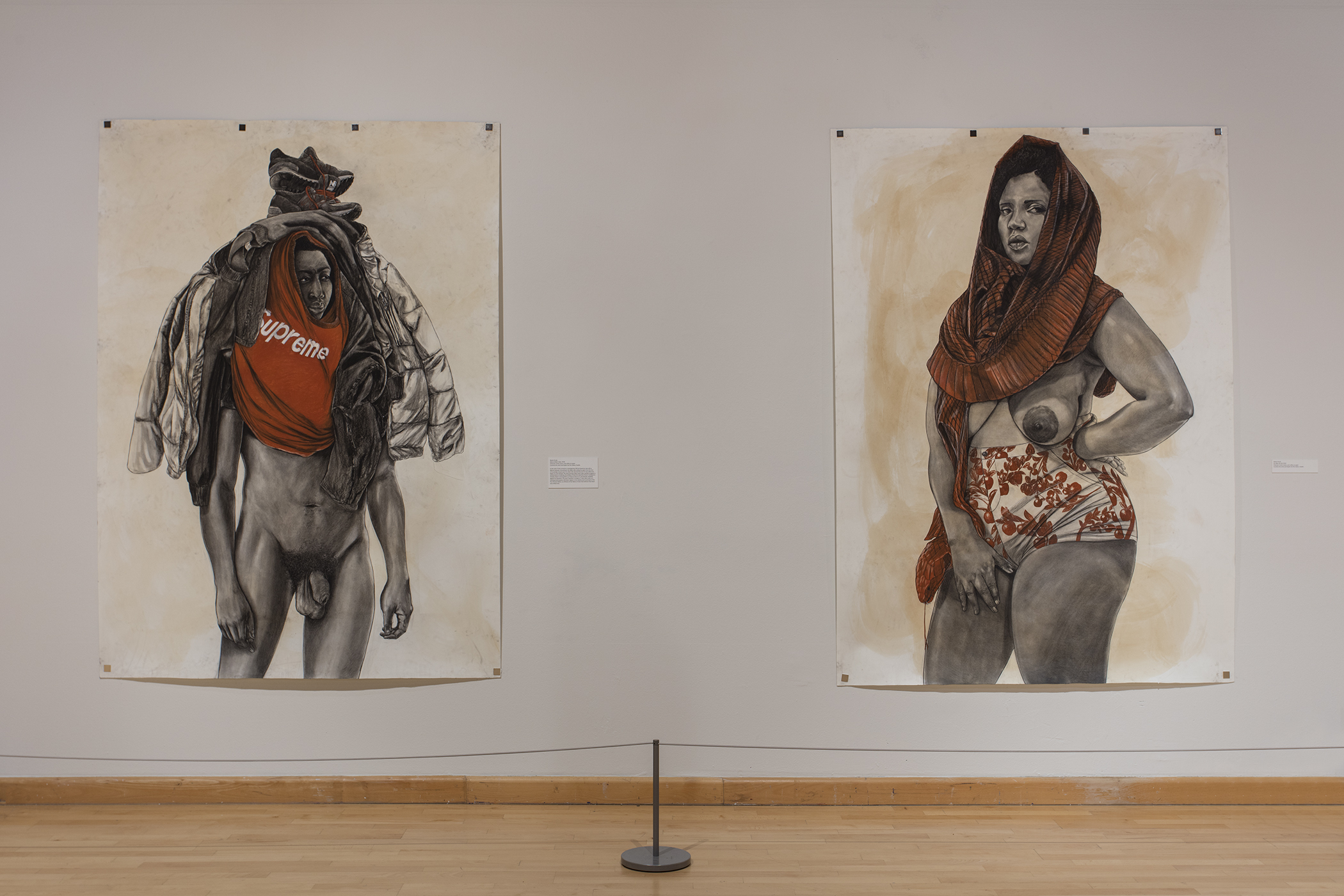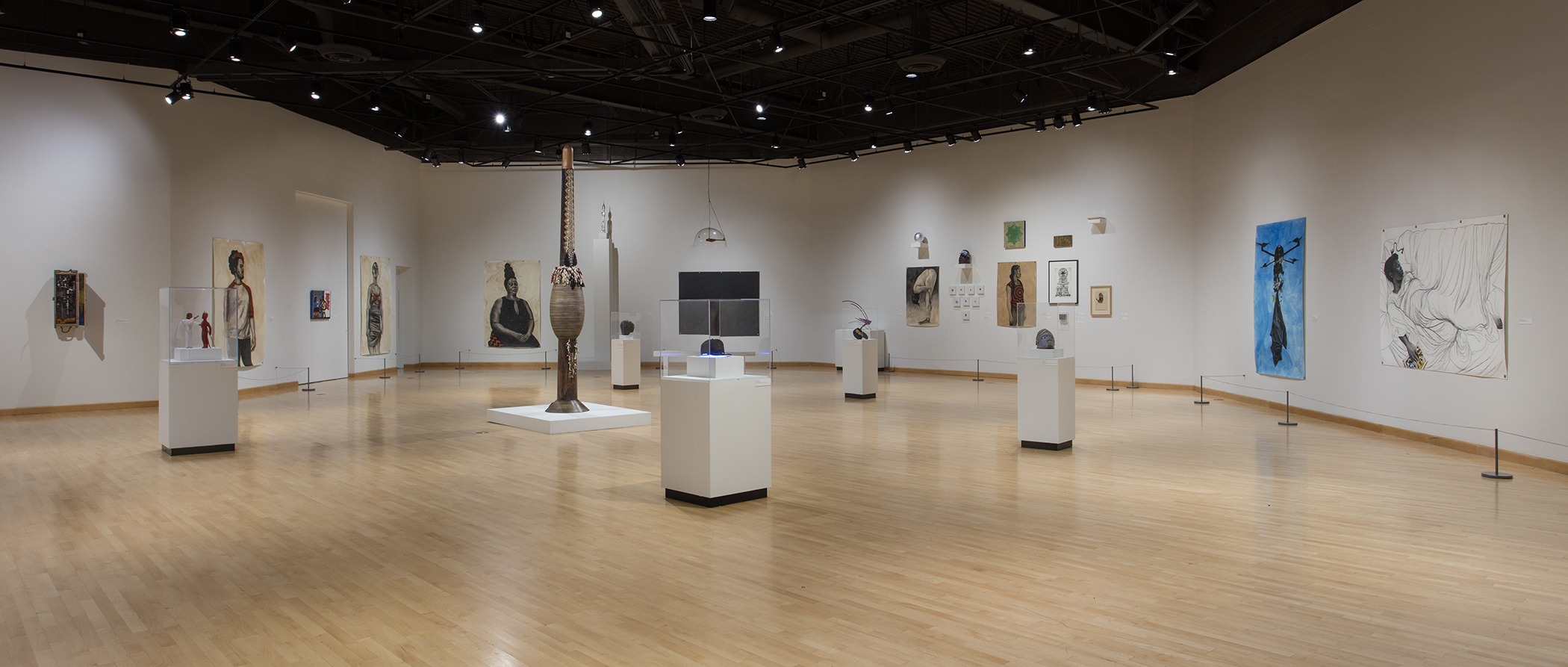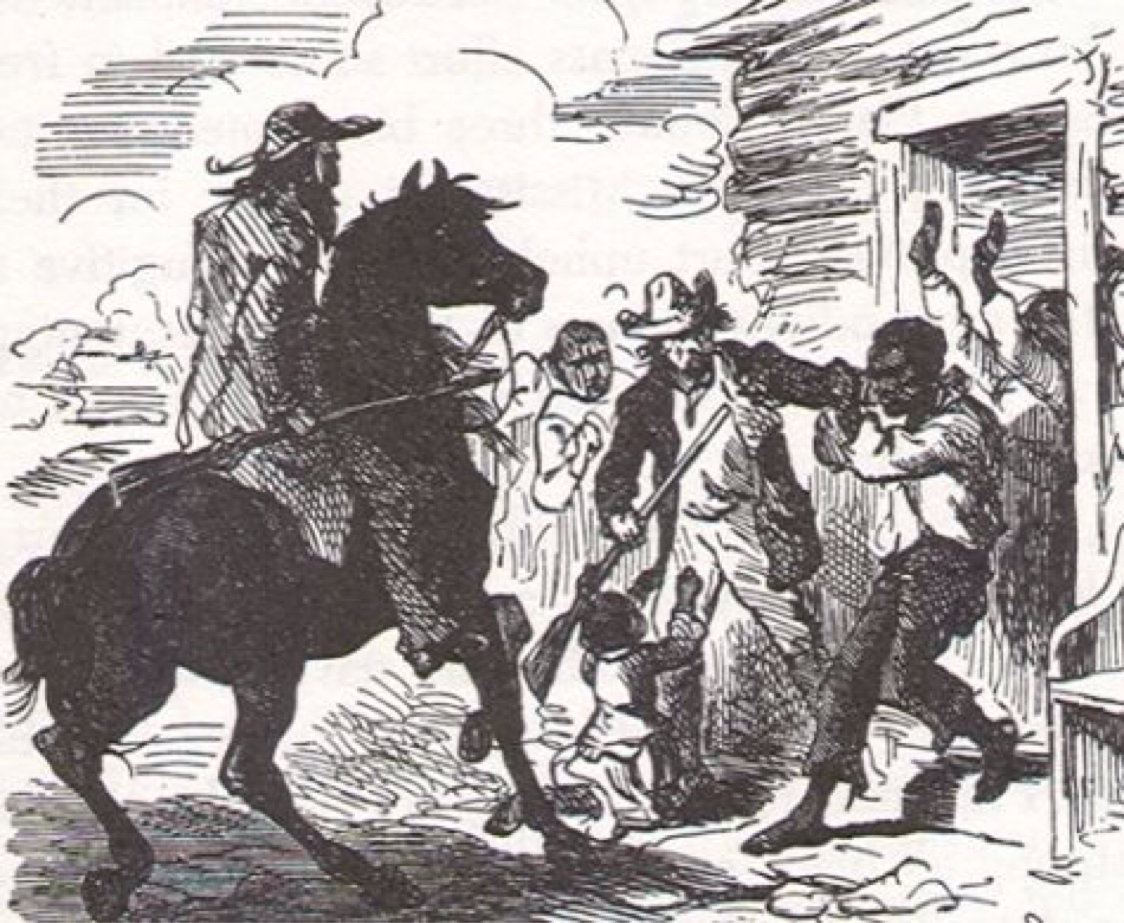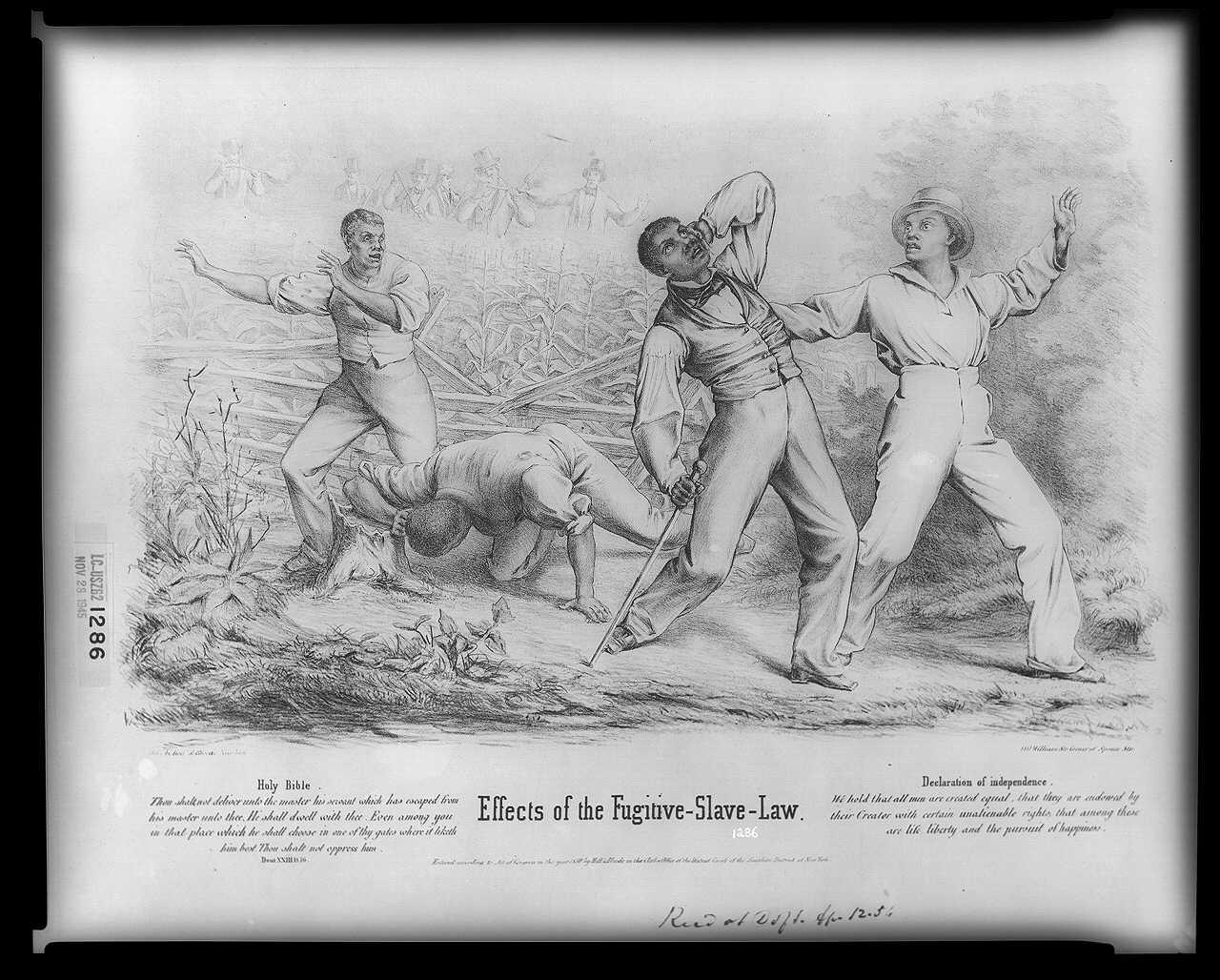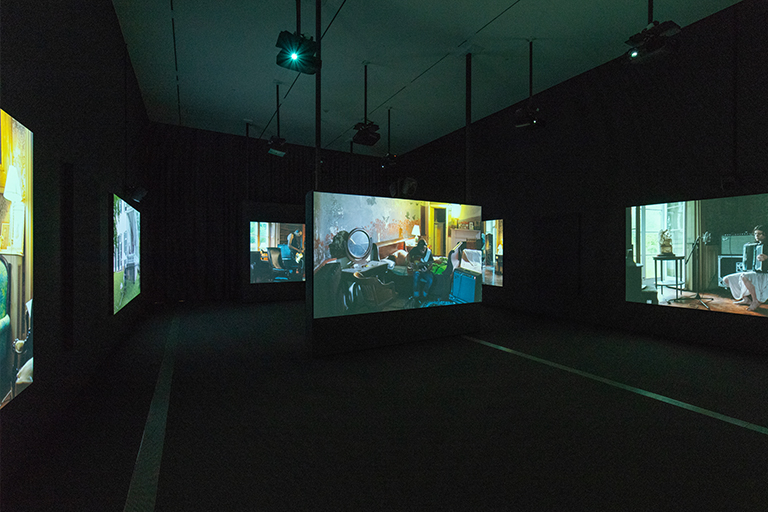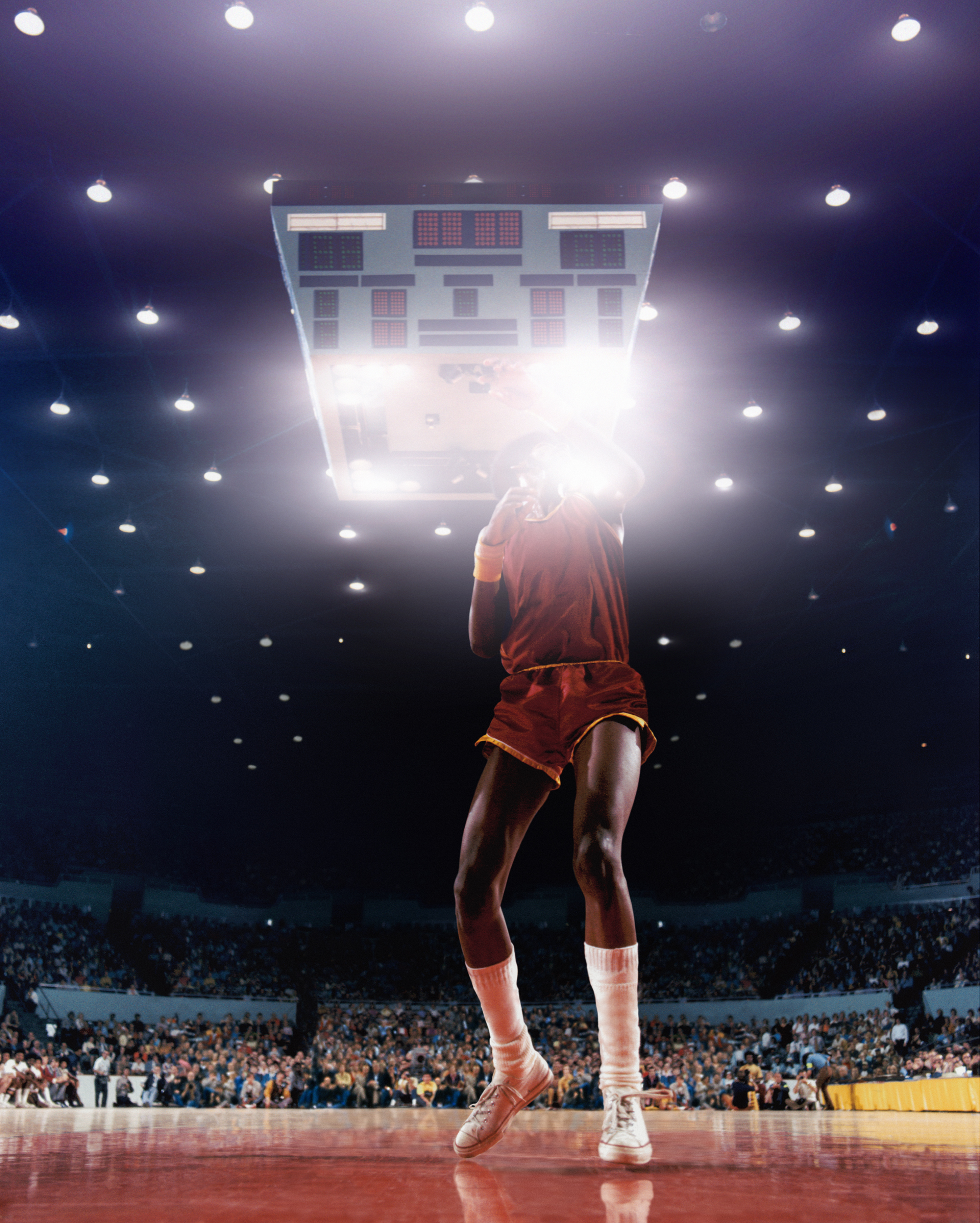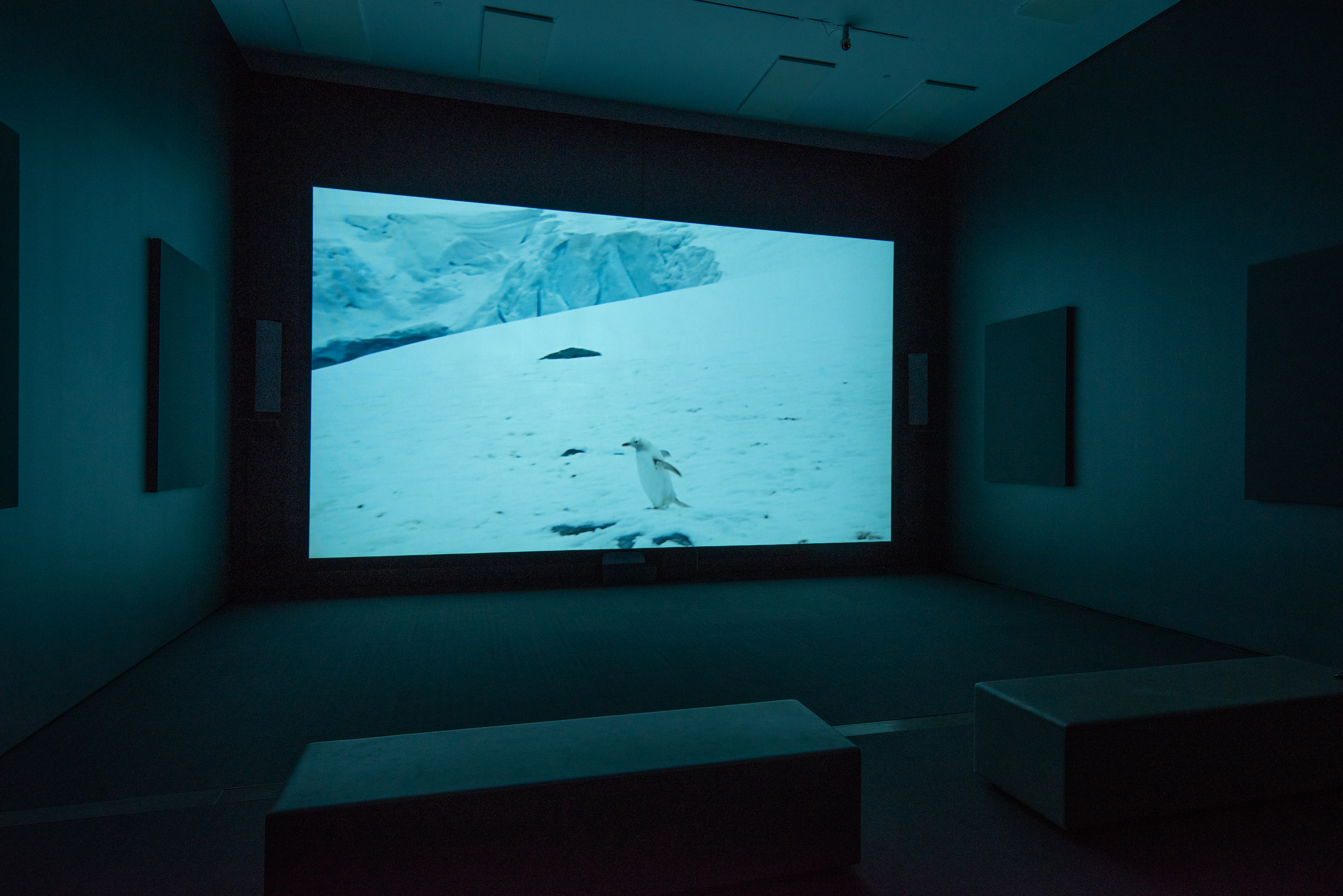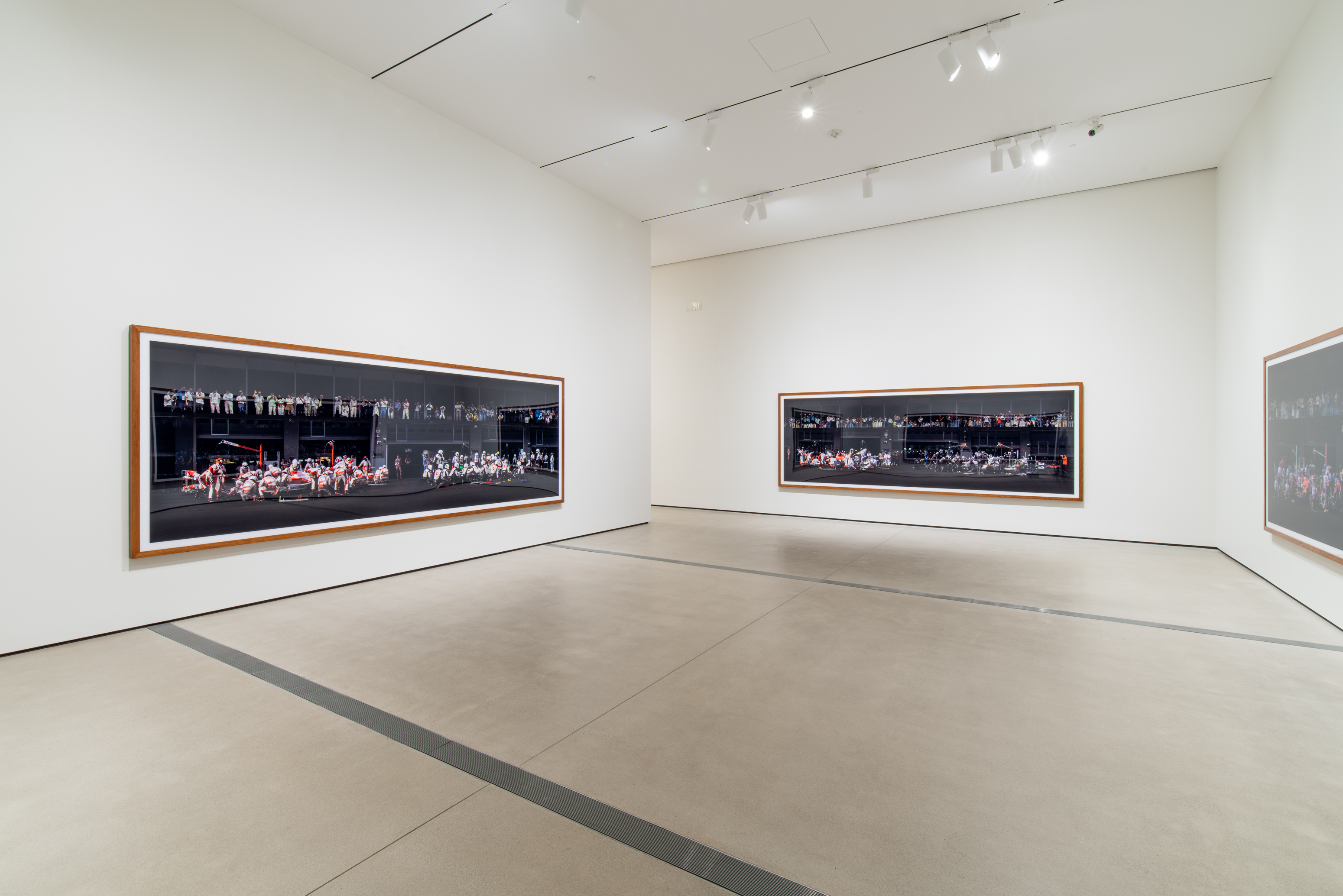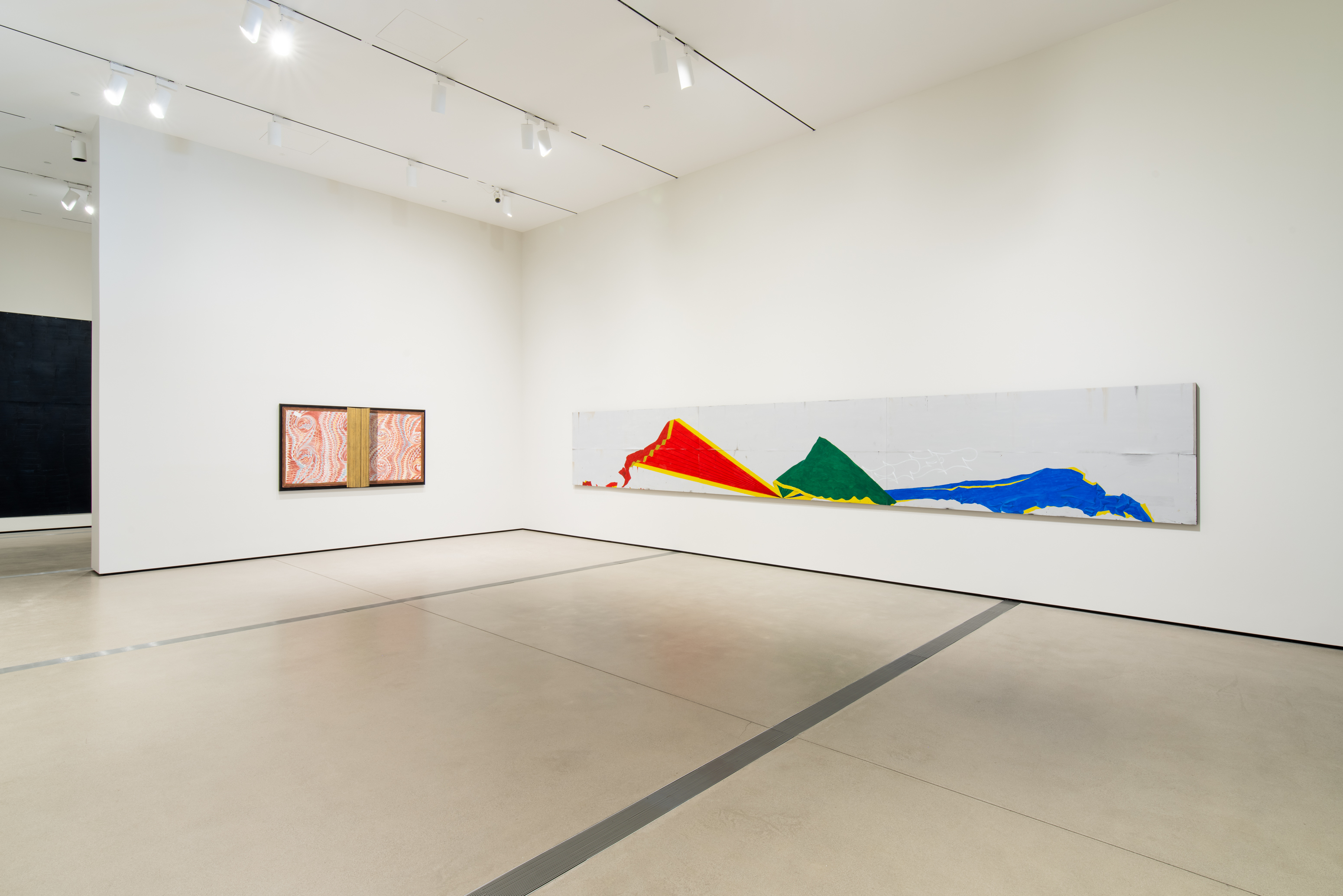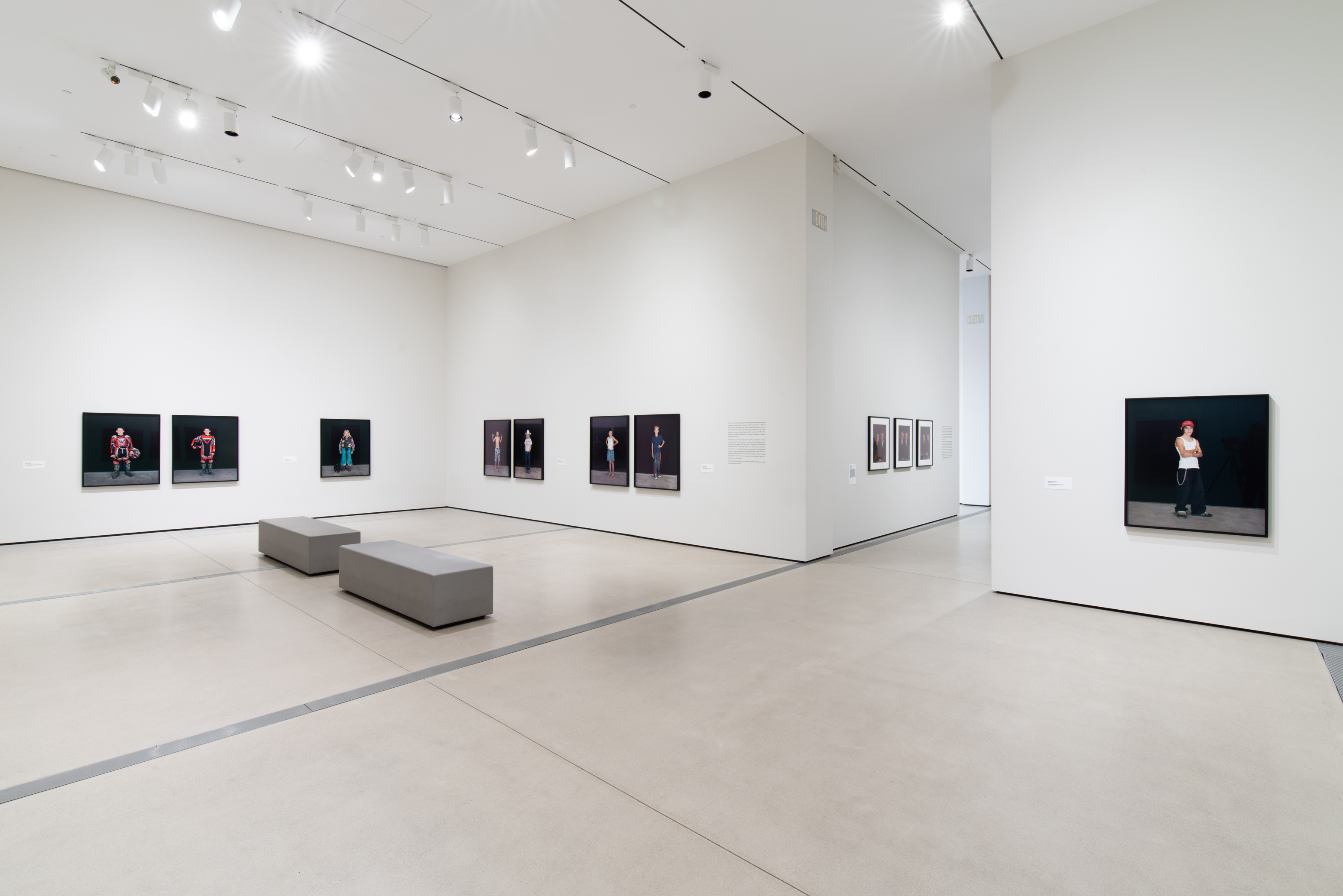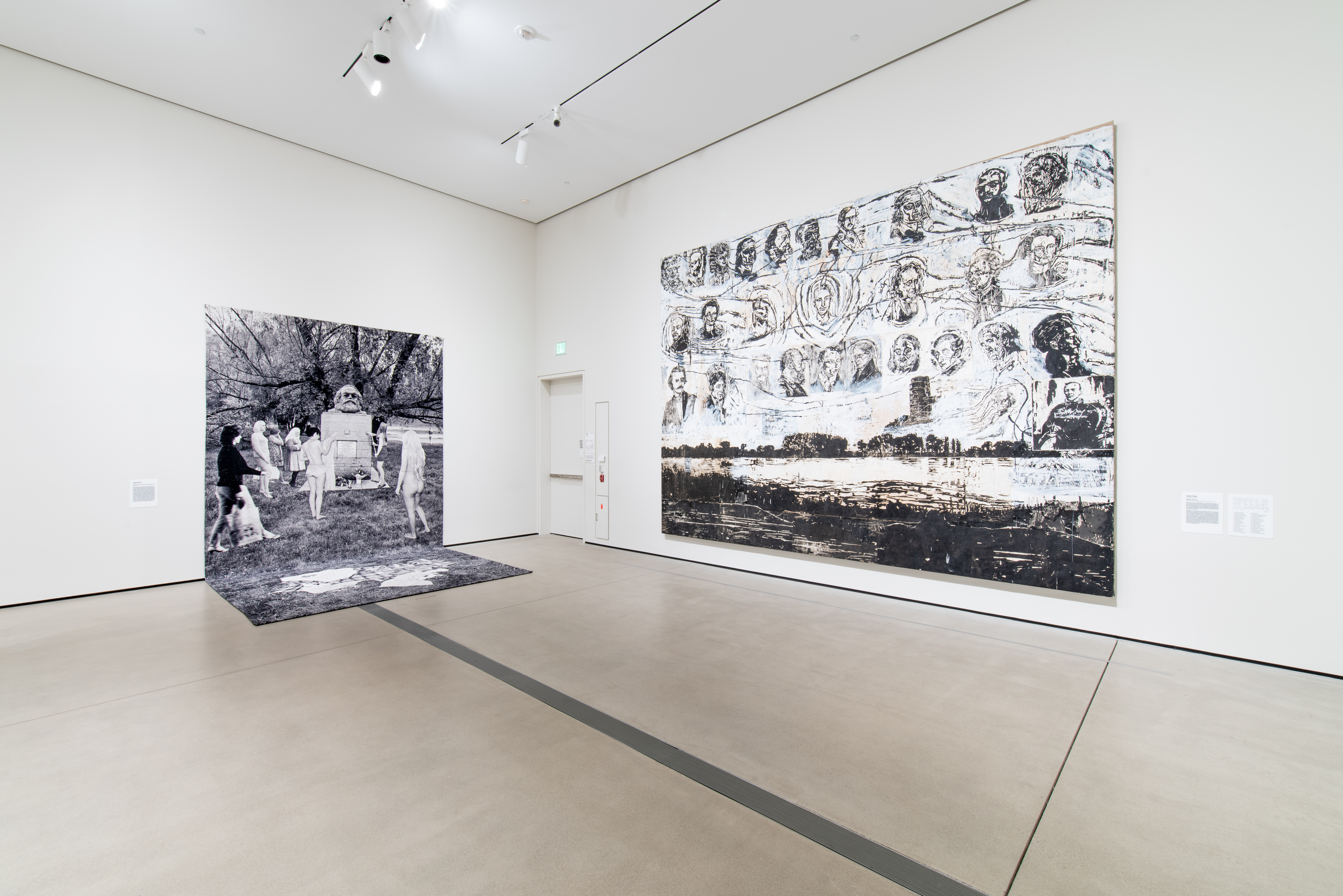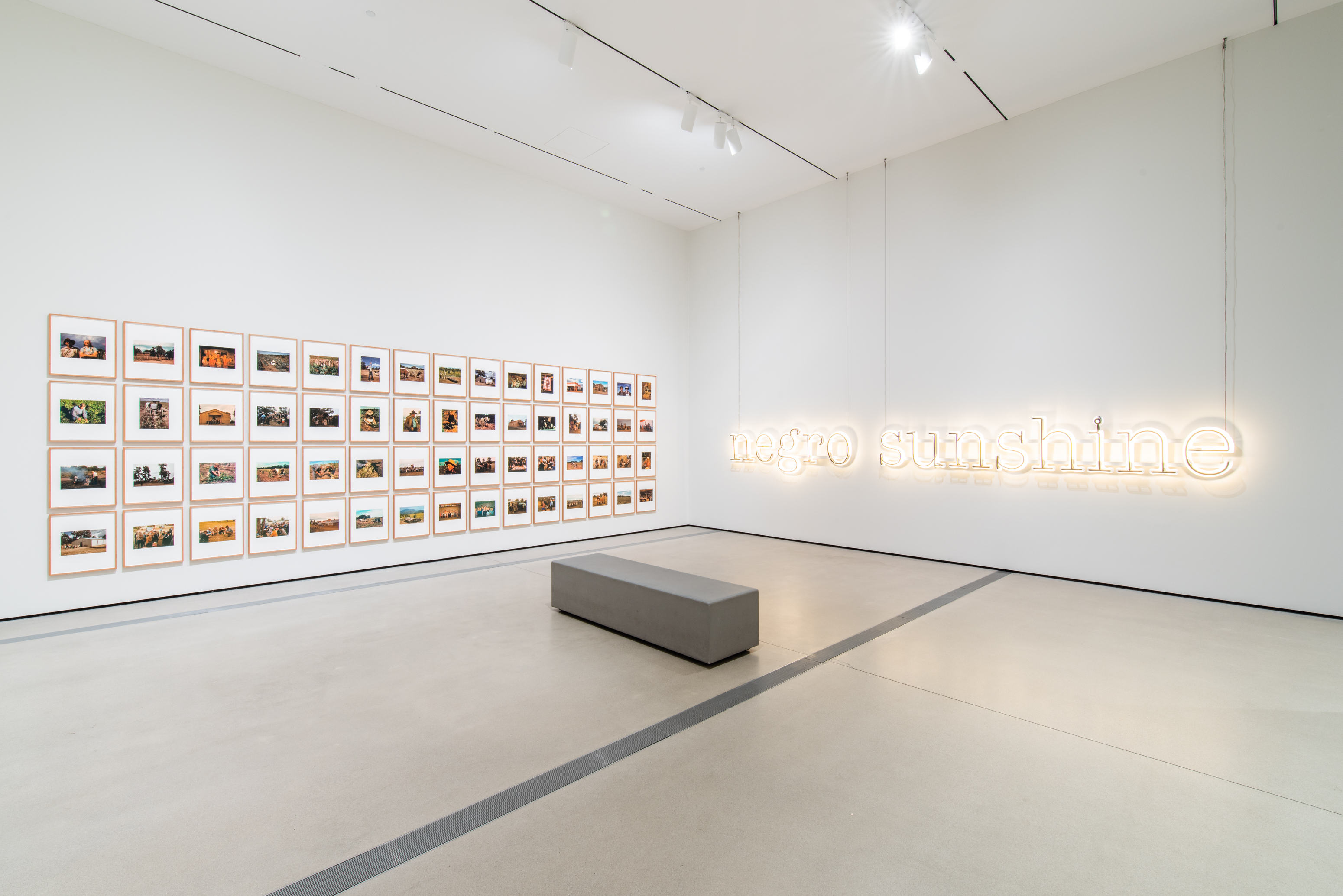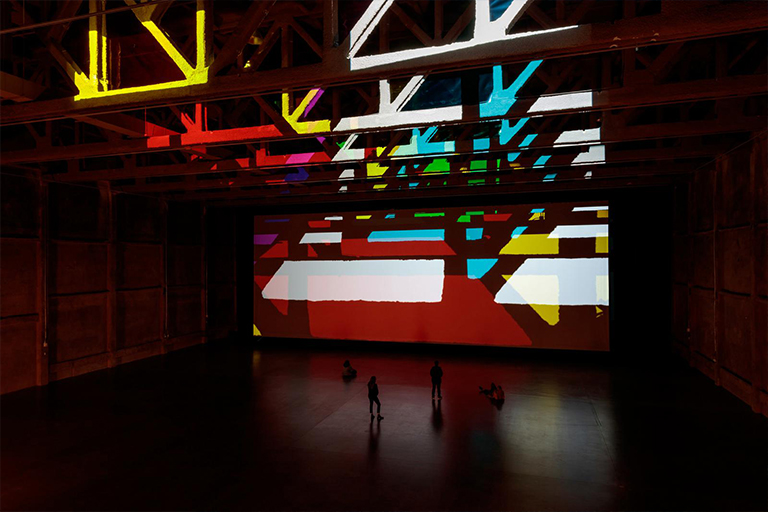On rare occasions, there are gallery exhibitions that make a strong statement—either politically, culturally, or both— capturing the zeitgeist of a moment, and sparking a myriad of conversations. Perhaps the work is by an artist whose star is quickly rising or one whose art is so striking you know that their work will be included in future textbooks about a particular art historical movement. Simply put, there are exhibitions where you walk in, you know you are experiencing a historical moment. “At the Edge of The Sun” in the Deitch Gallery LA is one such exhibit.

Part of what makes this show so profound is how it came to be. Twelve Chicano/a/x and Latino/a/x artists —Diana Yesenia Alvarado, Michael Alvarez, Mario Ayala, Karla Ekaterine Canseco, rafa esparza, Alfonso Gonzalez Jr., Gabriela Ruiz, Ozzie Juarez, Maria Mara, Jaime Muñoz, Guadalupe Rosales, and Shizuoka Saldamando—all of whom met and connected over the last decade, were given free rein to curate a group show that encapsulated their individual and communal stories. Much of the work expands on ideals from the inception of the Chicano Art Movement, an offshoot of the larger cultural Chicano movement in the United States. Starting in the 1950s and 1960s, Mexican-Americans sought to challenge and resist the societal hierarchy and stereotypes to build cultural autonomy, record their history, and celebrate their experiences that were often rejected in mainstream culture. All of the sixty-two artworks included in “At the Edge of The Sun” strongly speak to different elements of each Chicano/a/x artist’s personal and cultural identity while also elevating their everyday experiences. Collectively, their work transcends being a mere historical record, and instead elevates it to a place that says my experience matters, my experience is beautiful.

One notable work by performance and physical artist rafa esparza (the artist intentionally uses lowercase while spelling their name) is a mural titled, Trucha. This large-scale painting of acrylic on adobe and steel features a male Latino figure lying on their stomach gazing at the viewer from bed. The subject’s eyes are cold yet contain the slightest tinge of softness when you study them for long enough. But as the Chicano script style tattoo of “trucha” (translating loosely as vigilant, both as an action and a way of being) on the subject’s arm implies, you would not mistake their eyes as vulnerable. Symbols of strength continue on their sprawling back tattoo depicting conquistadors slaughtering indigenous people. The symbolism of this alone is quite powerful but pairing it with flanking images of the Mesoamerican god Xipe-Totec, along with various books running the gamut of Aztec accounts of history, post-colonial theory, as well as global colonialism and oppression, you have a complex image that can be unwrapped in numerous ways. In one complex reading, you could explore the ‘conflict of existing’ within the context of colonialism as many (not all) have both European and indigenous blood. Yet, while grappling with this, they also fight to detangle the ties colonization has on suppressing their indigenous roots — cultivating and celebrating the positive, while ardently rejecting the violence and attempts of cultural genocide. Like the tattoo on the man’s back, history is not forgotten and still lived with today.
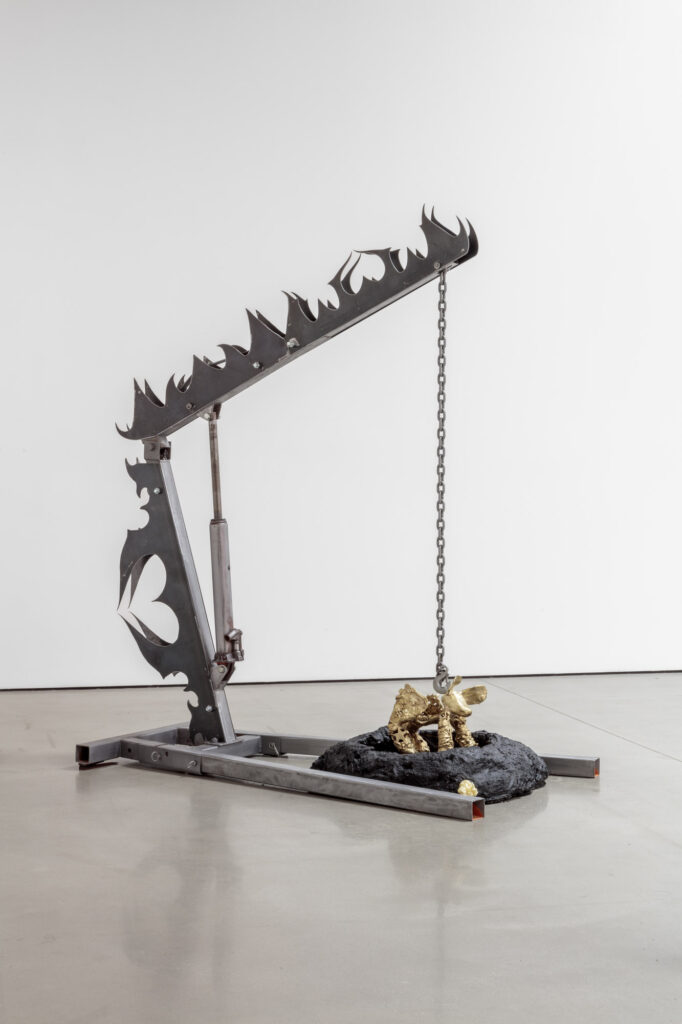
The exhibition becomes especially reflective when artists incorporate objects and iconography that are common to the cultural experience of many working-class people of color, and re-envision them into higher planes of being. One of the strongest examples is the mixed-media sculptures by Karla Ekaterine Canseco. Canseco takes various elements from an auto-mechanic shop and transforms them into otherworldly dark dreamscapes. One such piece titled Las profundidades del asfalto,entre vida y petrificación. Perra que nada en petróleo. / The depths of asphalt, between life and petrificación. Perra that swims in petroleum., starts with a cherry picker engine hoist as its foundation, with sharp metal flames rising up its back and across the arm, as a chain lowers a bronze dog into an oil pool. Dogs are often considered to be spirit guides, so placing one into a Dante’s Inferno-esque environment protects them on their journey into the emotional depths. But just as the chain of the cherry picker —symbolically representing culture or family—-can lower you into the pits, it can also pull you back out. Both the source and cure for our trauma can come from the same place giving these symbols a dual meaning.
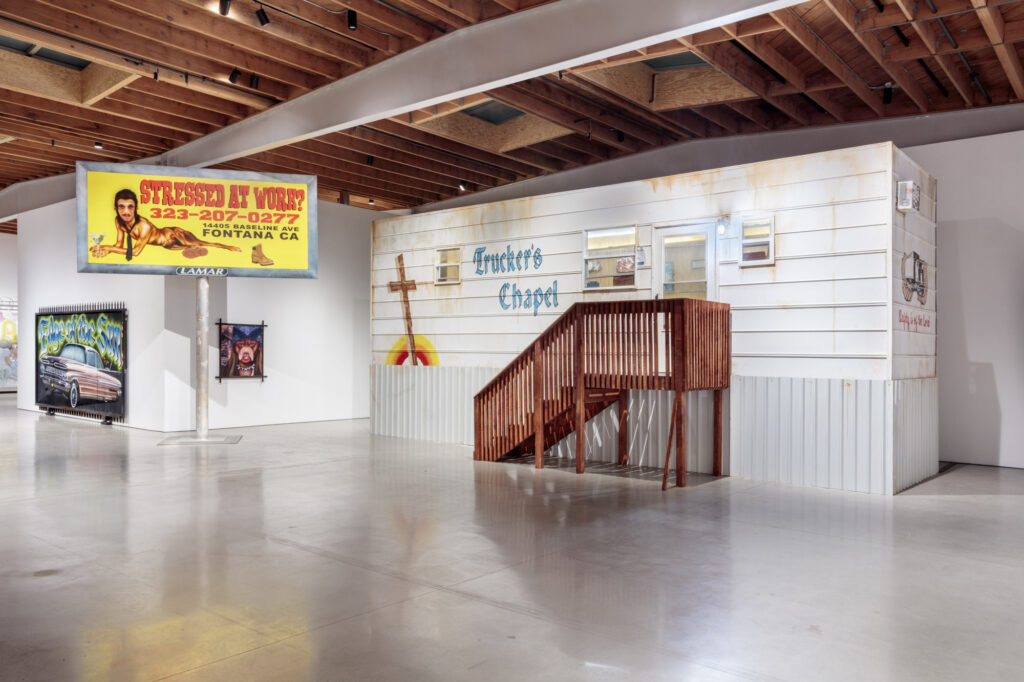
Heading into the backroom, there are multiple installations by Jaime Muñoz, Alfonso Gonzales Jr., and Mario Ayala that in addition to providing some of the strongest cultural commentary, create the most immersive experience of the entire show.

Jaime Muñoz’s work deals with themes of transportation, labor, technology, and advertising, exploring how they intersect now and in the future. Two of the immaculately designed paintings resemble the back of Big Rig truck doors. One such example, Ad Space, features soft yet vibrant colors depicting a collage of images including Jesus on the cross and decals of Japanese nectar drinks that the truck is potentially hauling. Truck door hinges adorn the painting’s edges accompanied by the all too familiar “How Am I Driving?” a cracked bumper sticker with the added lines, “How Does an Engine Even Work?” and “How Can a Loving God Cause Such Agony.” All of this is painted across a diamond grid pattern that appears as if it were assembled on tiles. When viewed through the lens of working-class people who are often the most impacted by the machinations of commerce, these larger themes of facing suffering feel especially poignant. We often look towards God for solace, but what do we do when there is none?
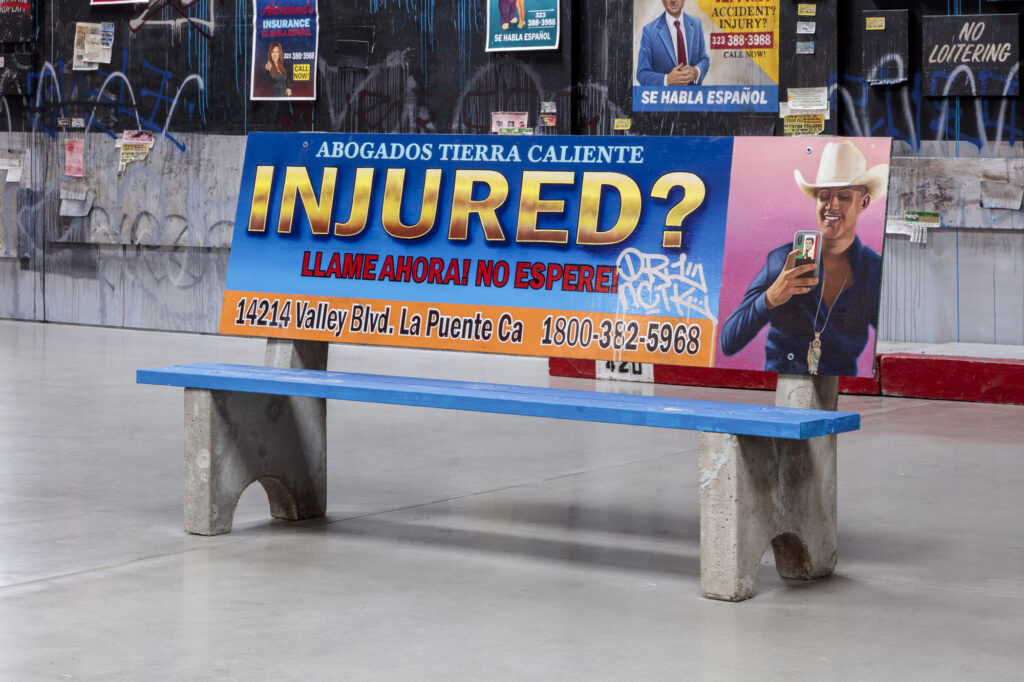
Additionally, Gonzales Jr. uses his experience from sign painting and outdoor advertising to recontextualize the predatory legal advertising that runs rampant in low-income communities of color. One of his contributions to the show is a pair of large billboard and bus bench advertisements, a commentary on the accident attorneys as criminals by portraying the lawyer as one. The bus bench piece titled Abogado Bélico, ‘abogado’ is Spanish for lawyer and bélico is a more modern slang version of ‘narcocorridos,’ popularized by artists such as Peso Pluma and Fuerza Regida. Bélico can, however, also mean someone who enjoys music and fashion, or participates in narco culture. Here, the lawyer dons a cowboy hat and a half-buttoned dress shirt with a large gold pendant hanging from his neck. In the advertisement, he takes a selfie yet the phone screen reveals an image of Malverde, the patron saint of the narcos. While the lawyer does give off a rather cool swagger, his portrayal does not instill confidence in potential clients.
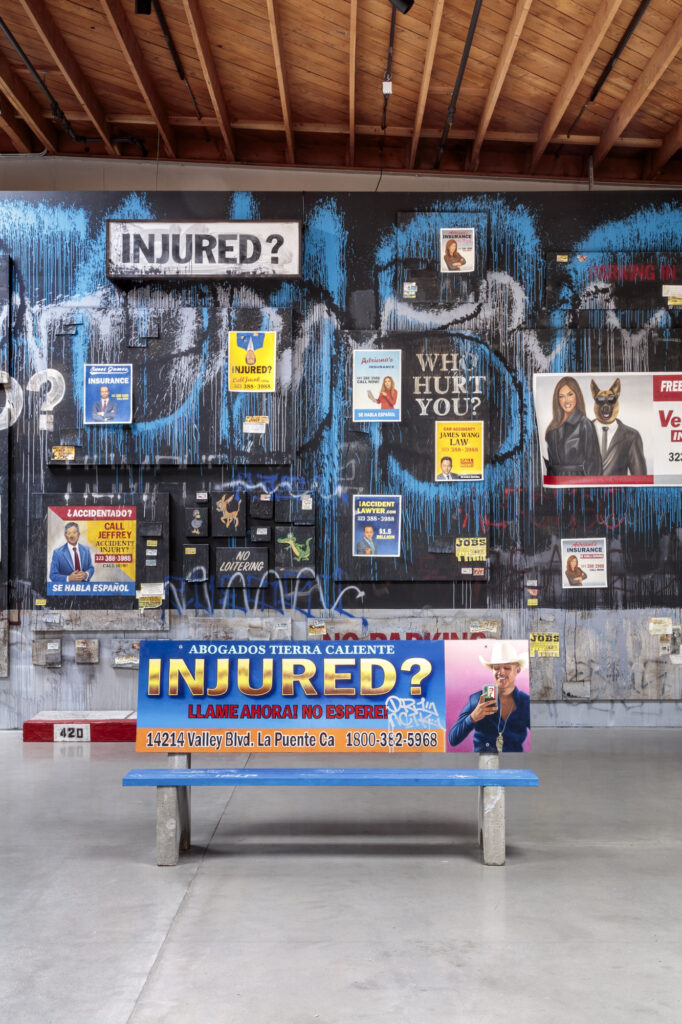


Another rather large installation titled, Injured, creates a wall you might find in any South or East Los Angeles neighborhood. Saturated with recreations of real ads from insurance agencies and injury attorneys, they are familiar examples of marketing strategies to communities of color in the greater LA area. One such ad is of the San Gabriel Valley lawyer James Wang, who has long been part of an urban legend claiming Wang is the real-life Better Call Saul-style character. Another ad for Adriana’s Insurance agency takes on new meaning after becoming a cult meme through the Instagram page Foos Gone Wild. It’s conversations like these that the work incites, both deeply critical as well as humorous, and that elevate everyday experiences to levels of art.
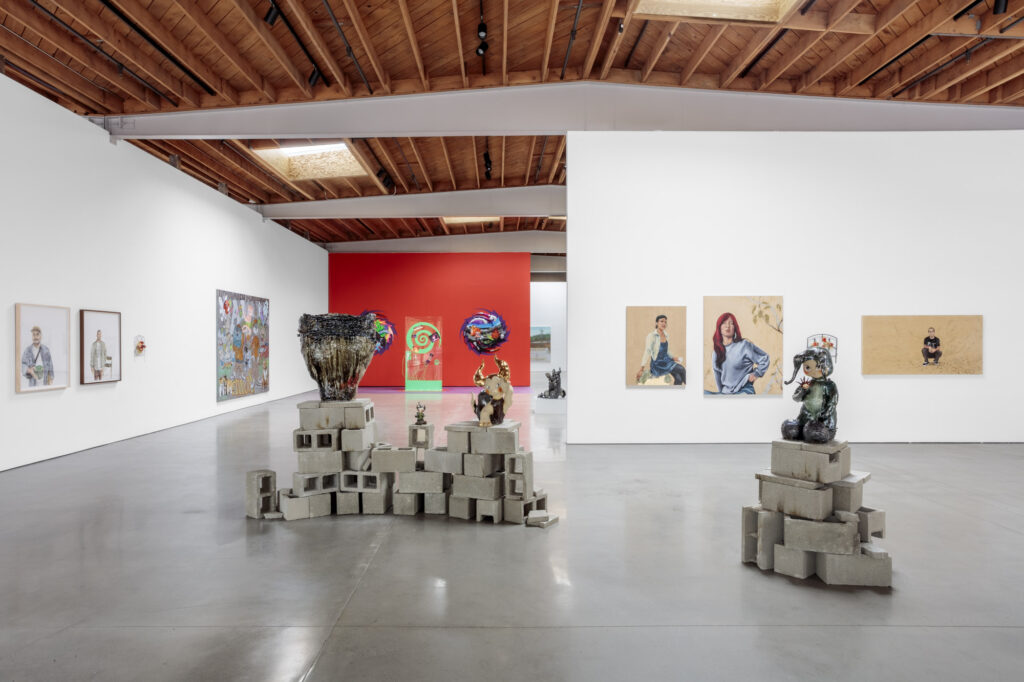
It would be immensely easy to discuss each of the twelve artists articulating how profound their work is in both the context of “At the Edge of the Sun” and the larger Chicano Art Movement. It is also important to note that many of these artists are already in the permanent collections of major museums such as LACMA, MOCA, SFMOMA, among others. This show, and its forthcoming book with an introduction by Dr. Rose Salseda and interviews from the artists, will no doubt become important artifacts to learn about the forefront of Chicano/a/x and Latino/a/x art from the 2020s. Expect to hear a lot more about each of these artists for years to come.
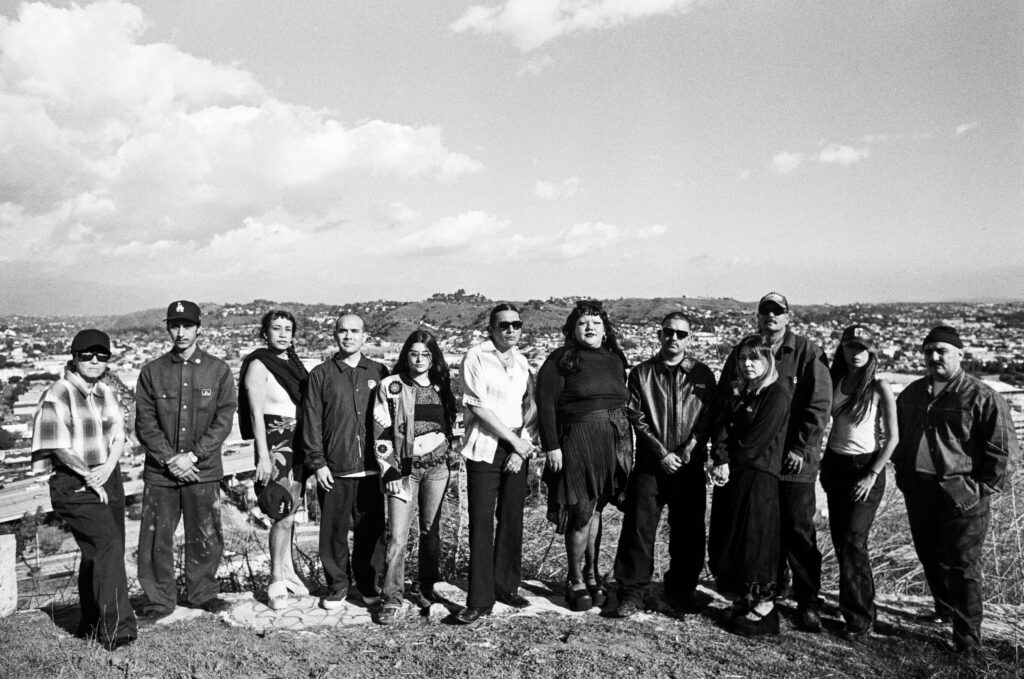
At the Edge of the Sun
Diana Yesenia Alvarado, Michael Alvarez, Mario Ayala, Karla Ekaterine Canseco, rafa esparza, Alfonso Gonzalez Jr., Gabriela Ruiz, Ozzie Juarez, Maria Mara, Jaime Muñoz, Guadalupe Rosales, and Shizuoka Saldamando
February 24–May 4, 2024
Jeffrey Deitch Gallery
925 N. Orange Drive, Los Angeles






